Prologue
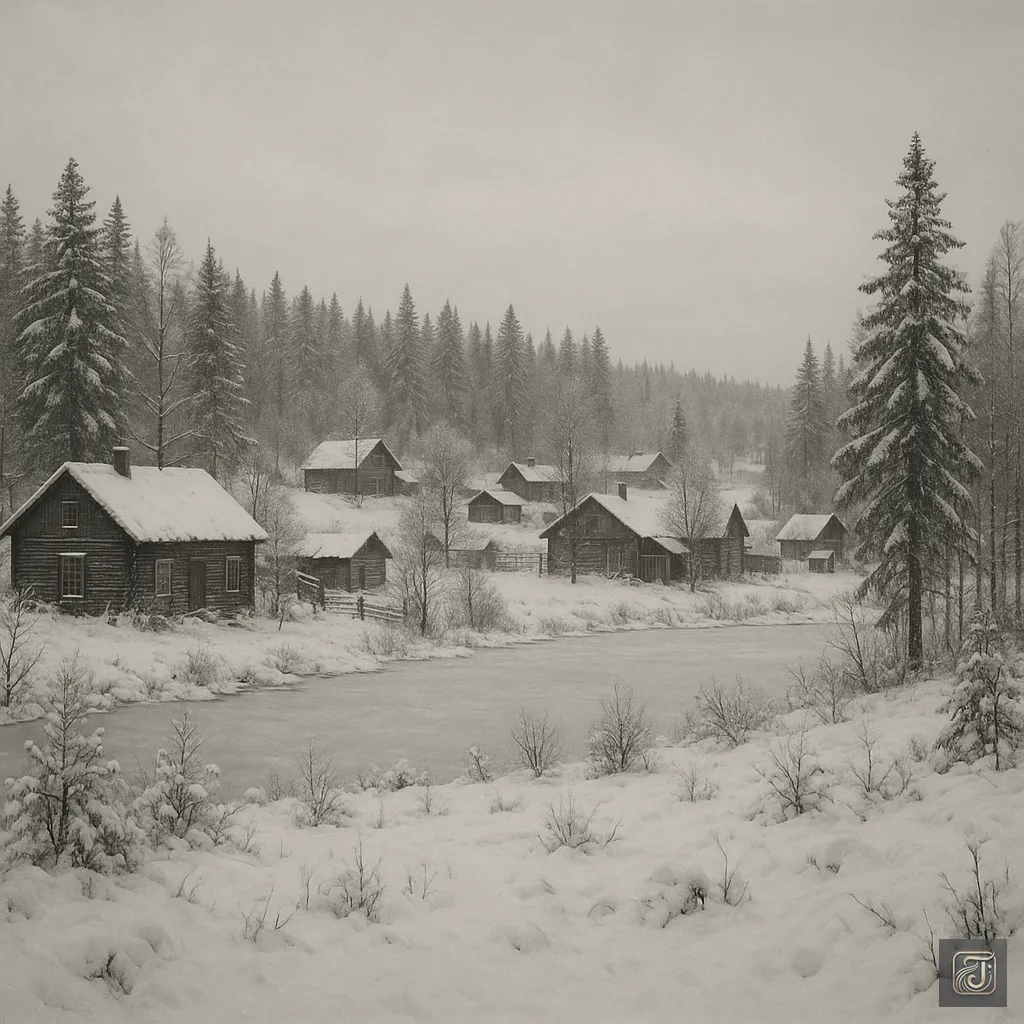
December 17, 1905.
In the village of Rautjärvi, southeastern Finland.
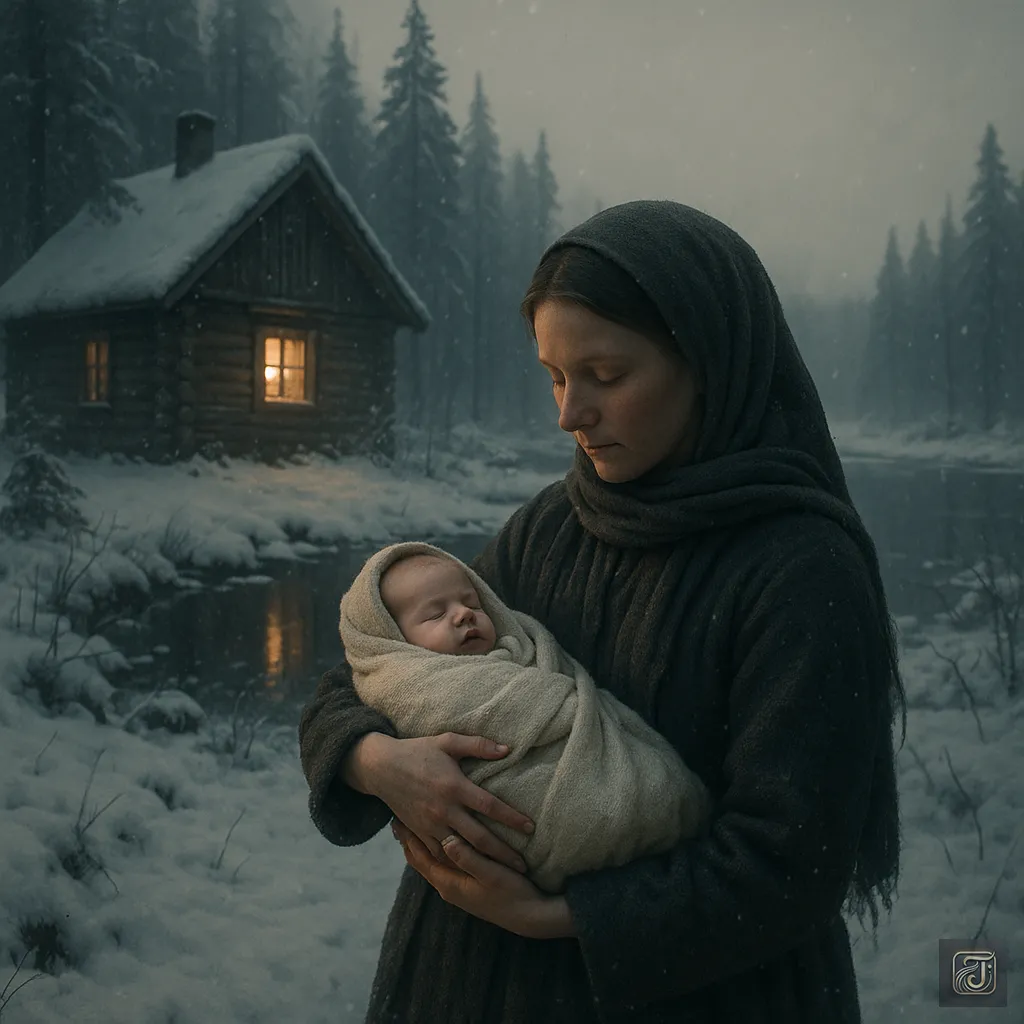
In this small village, surrounded by deep forests and lakes, a baby was born.
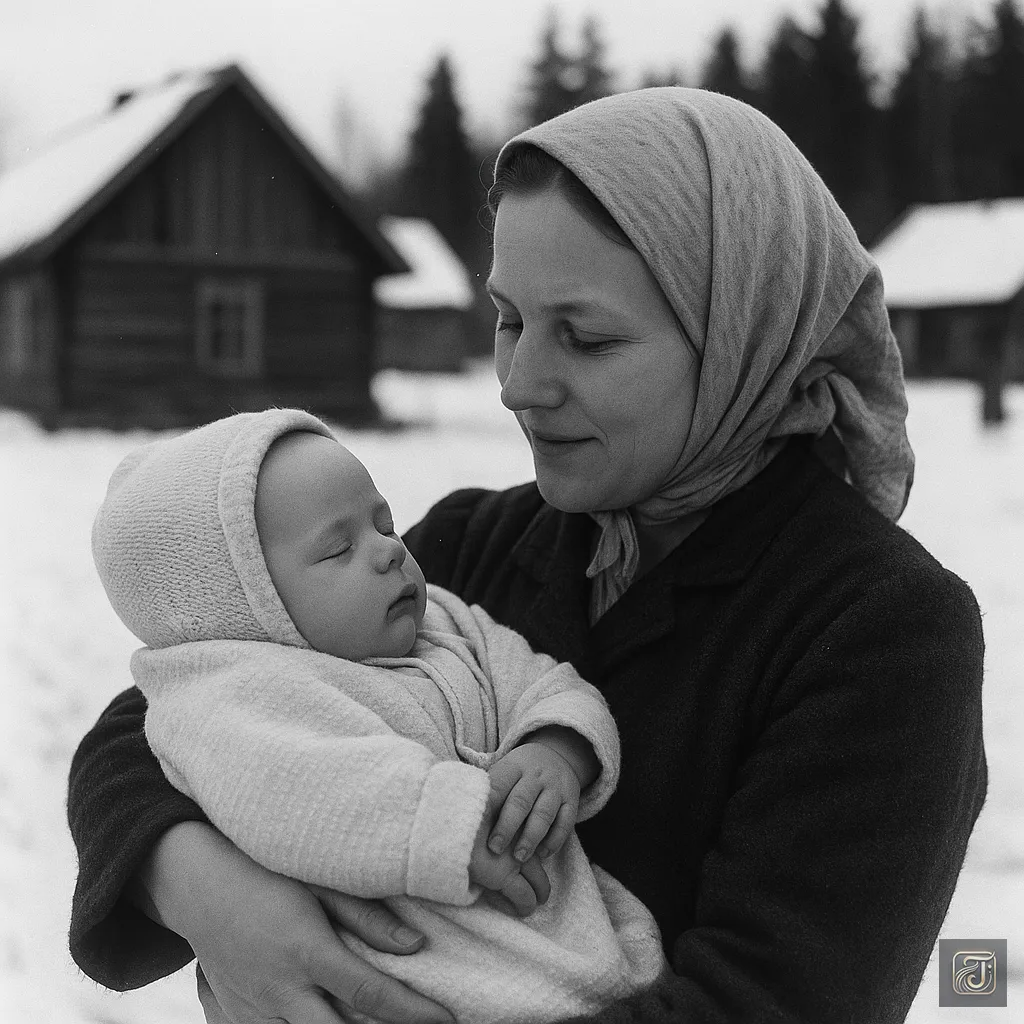
Simo Häyhä
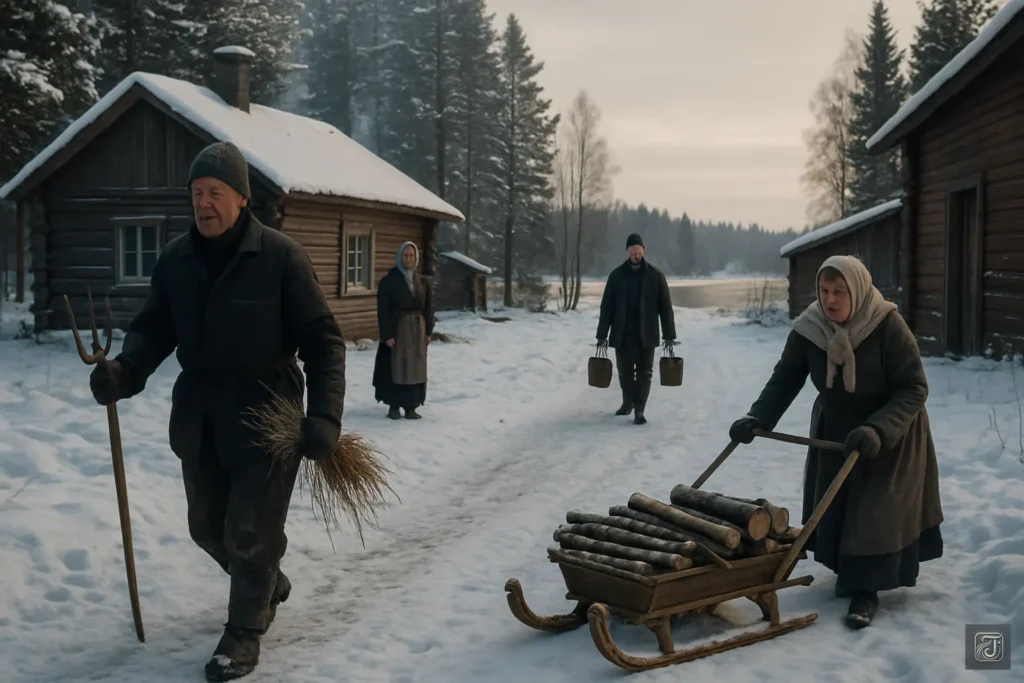
At that time, Finland was still under the rule of the Russian Empire.
Although it had been granted autonomy, political tension hung in the air.
Yet far removed from the movements of the wider world, the people of Rautjärvi simply listened to the rustling of the trees and the sound of melting snow, living each day in harmony with nature.
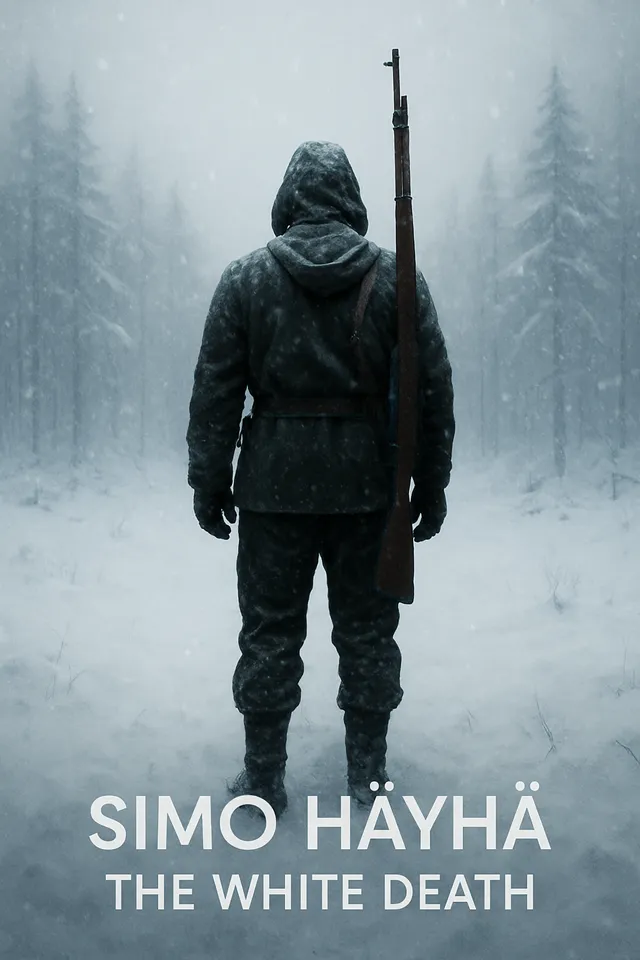
No one in the village could have imagined that this child would one day be known as the “White Death,” a name etched into the annals of military history.
Chapter 1: Born of the White Forest
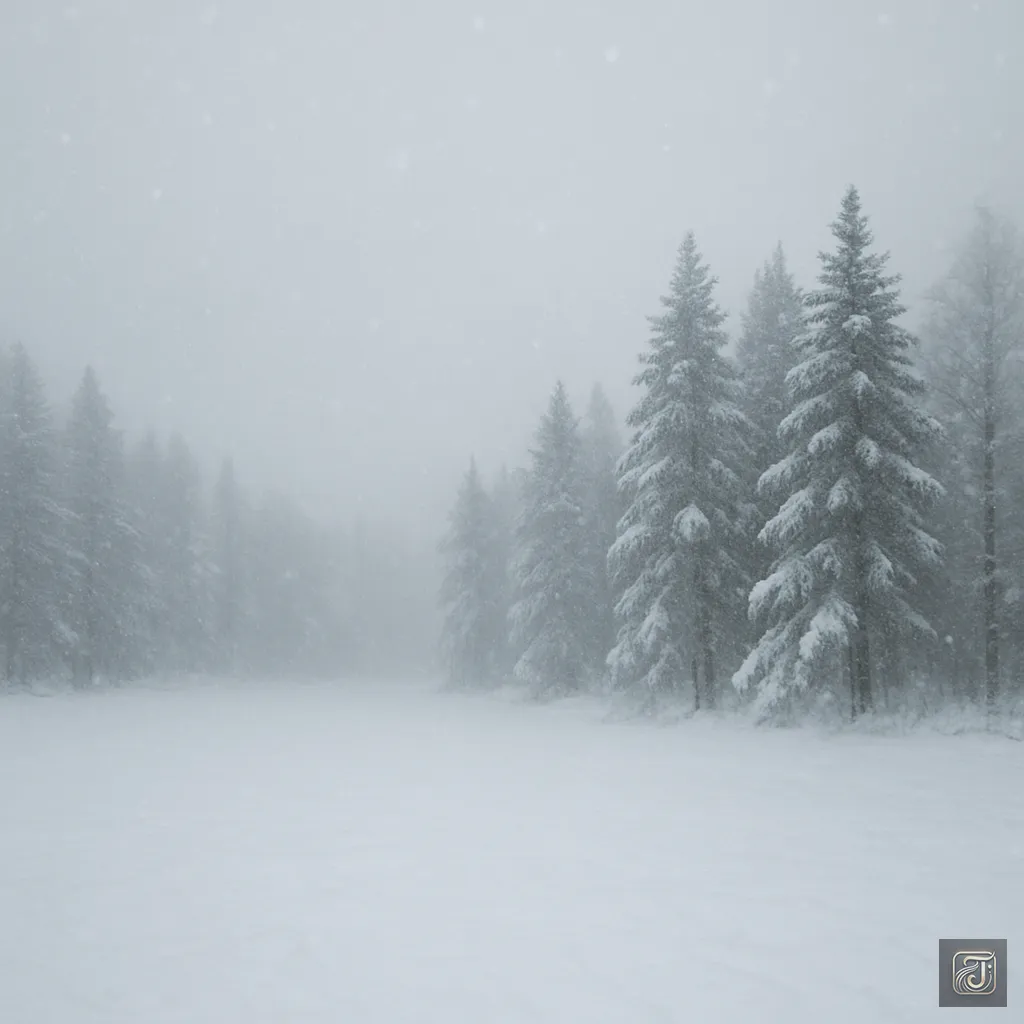
Snow was falling.
There was no wind, no sound—only the snow, silently covering everything in the world.
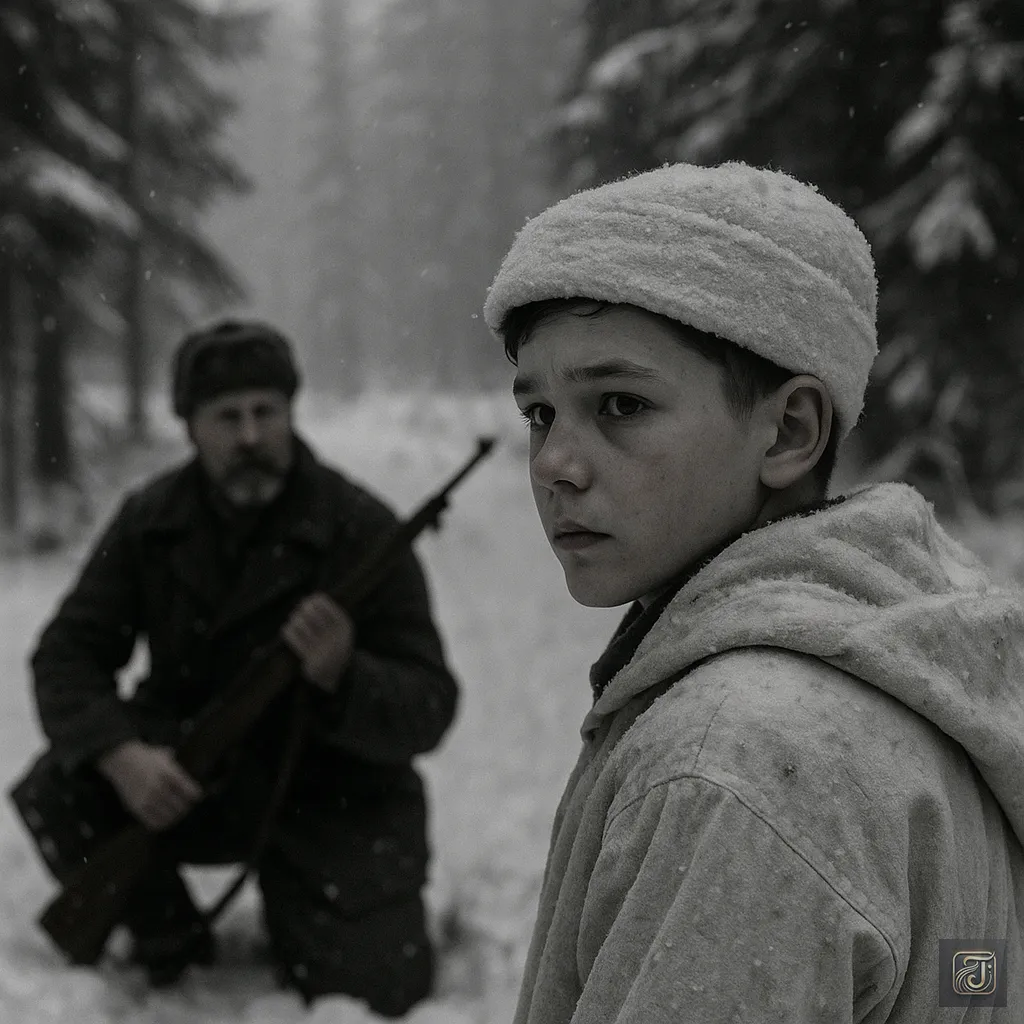
Father:
“Can you see that prey?”
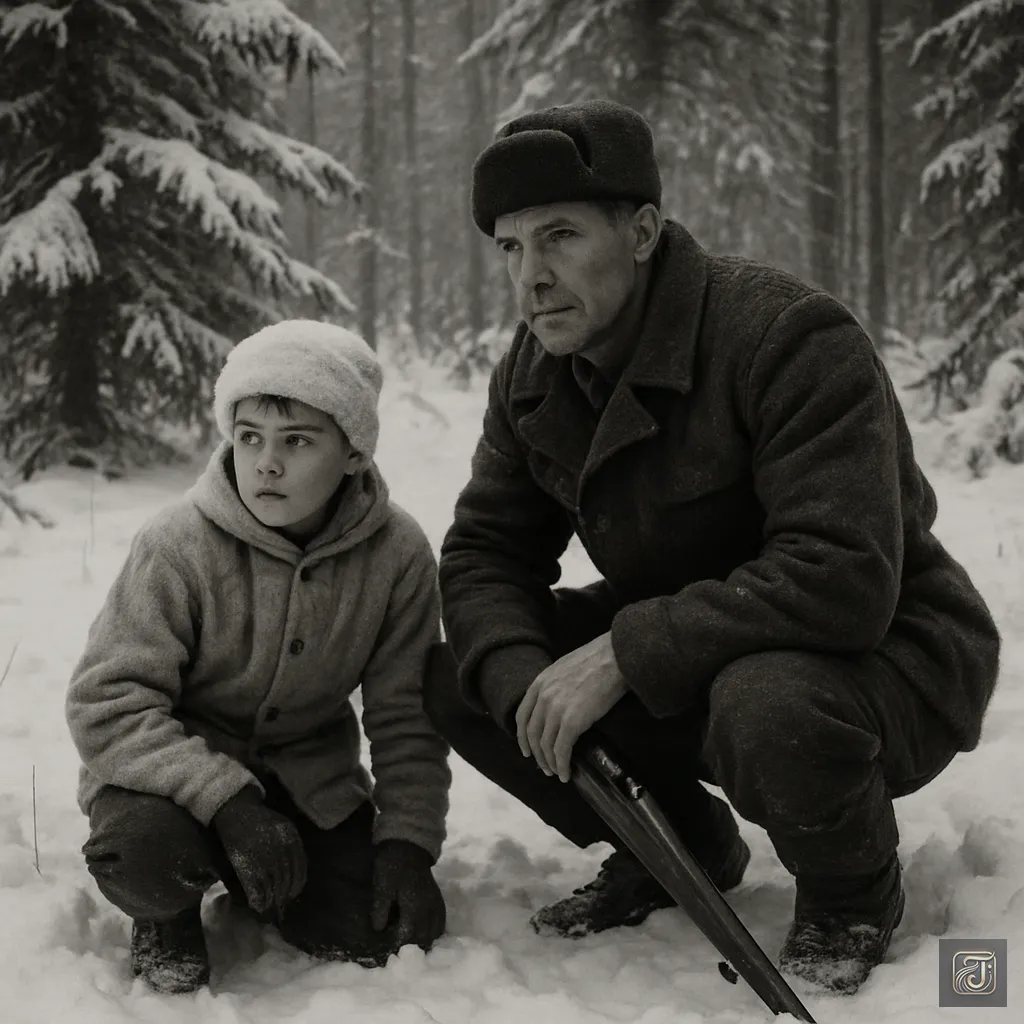
Father:
“Today’s prey won’t be easy.”
“Watch the wind, and don’t make a sound.”
His father said as he knelt in the snow and scanned the surroundings.
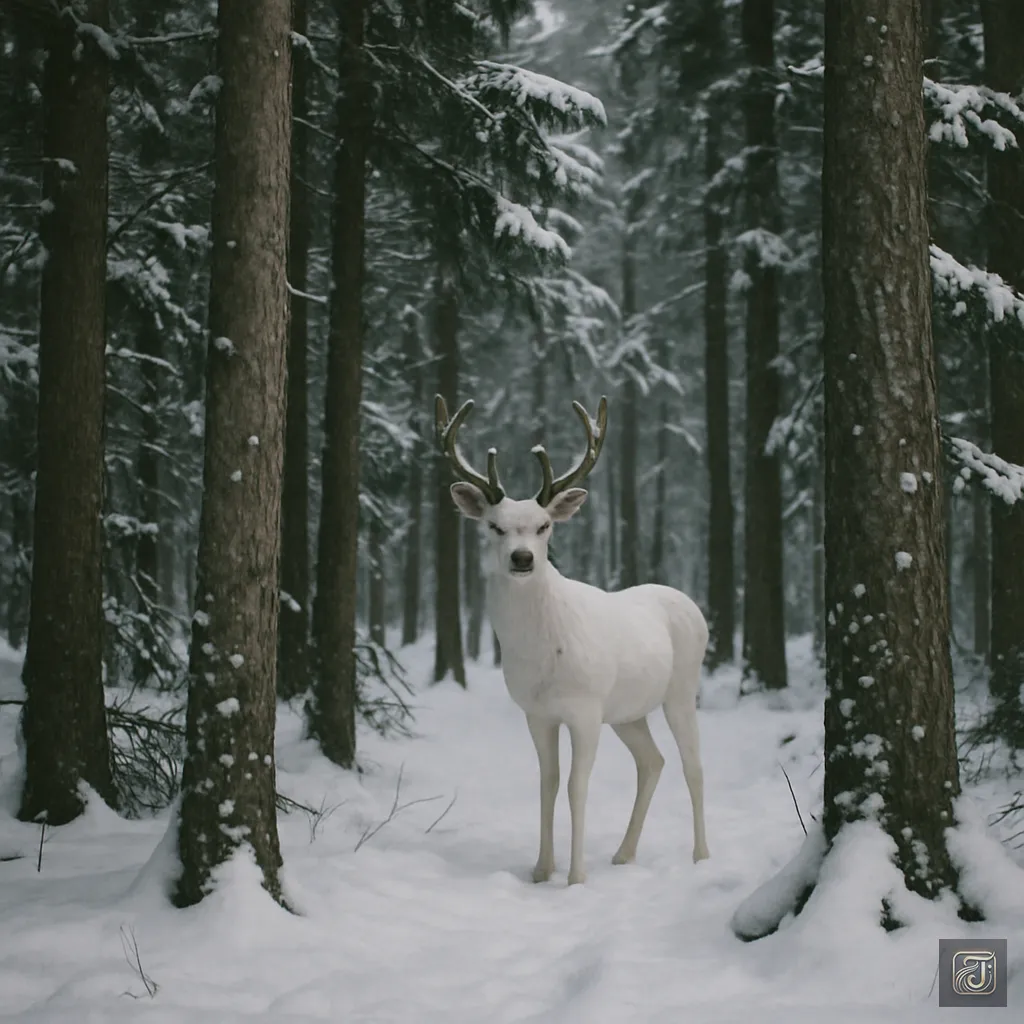
Between the trees, a white silhouette—a deer.
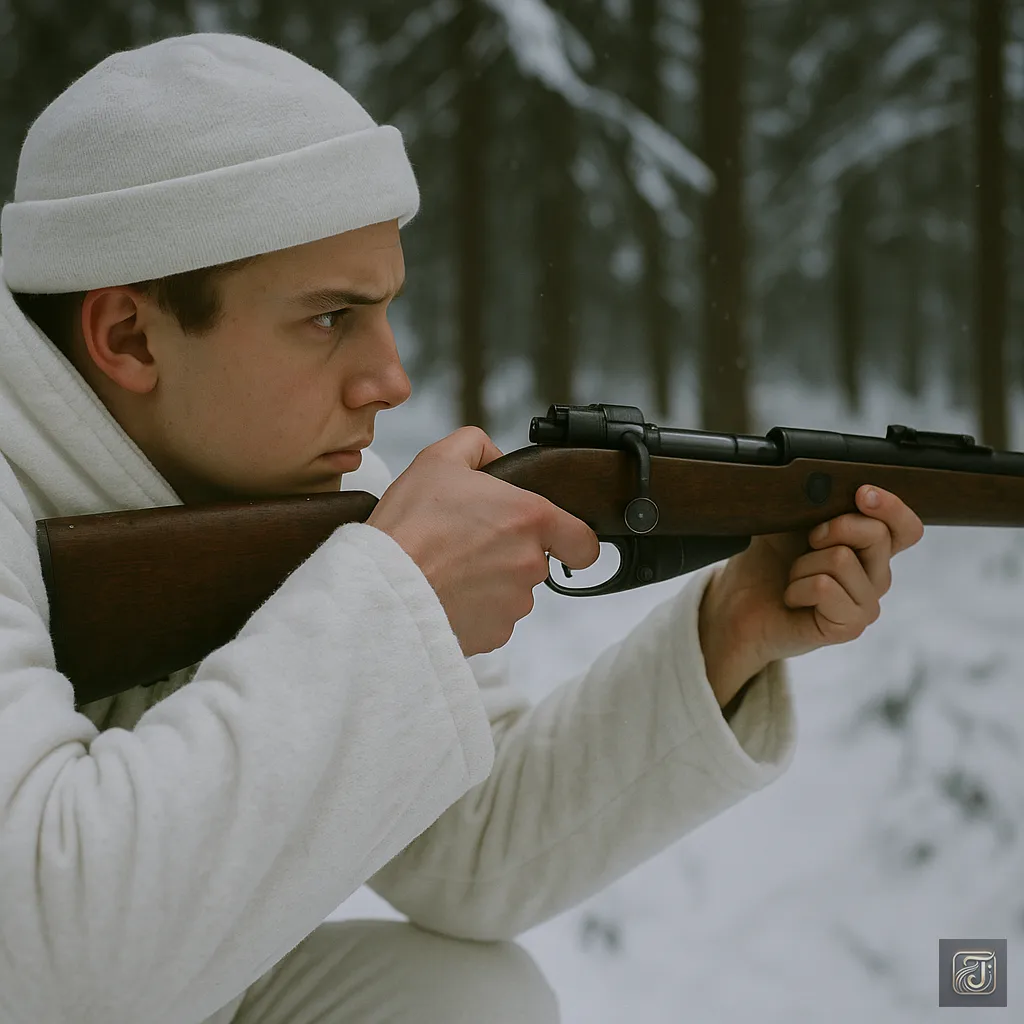
Careful not to step on the snow, holding his breath,
Simo raised his rifle, without a scope.
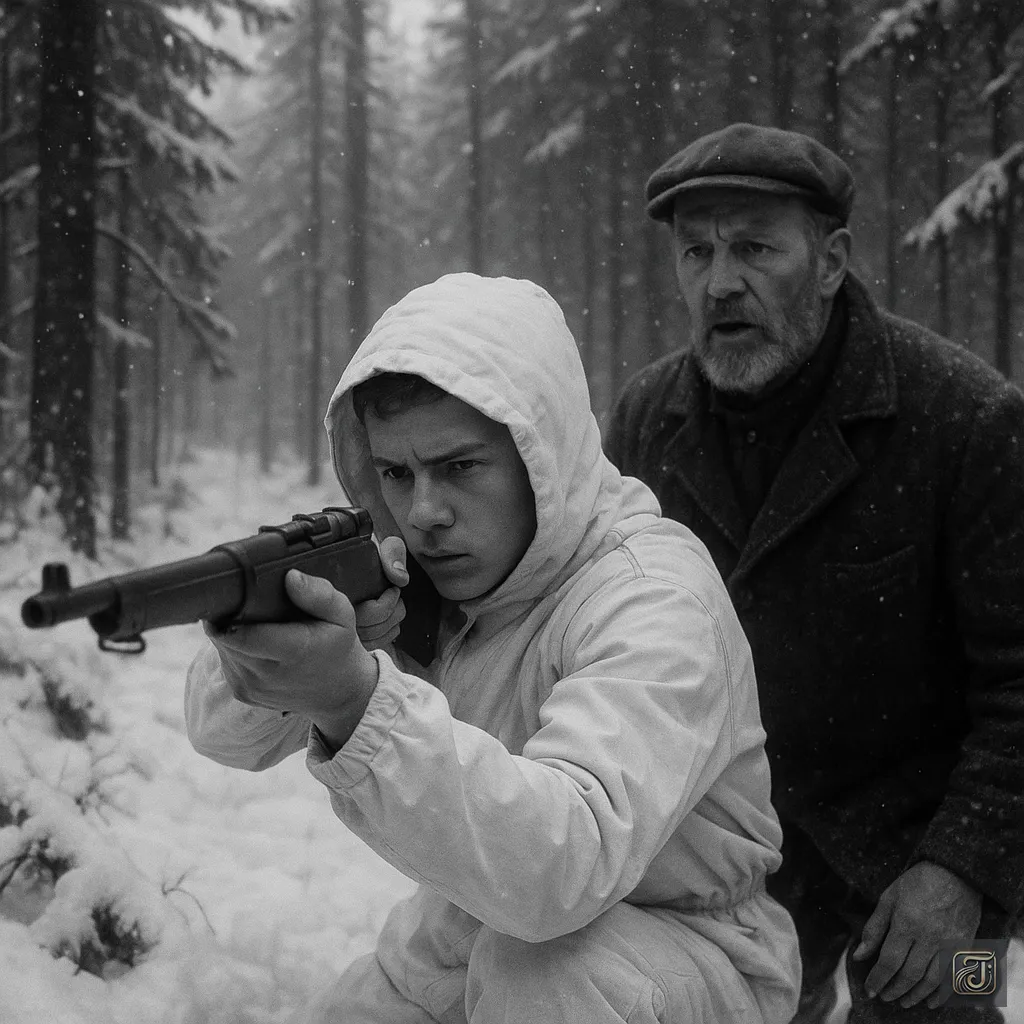
Father:
“Fire.”
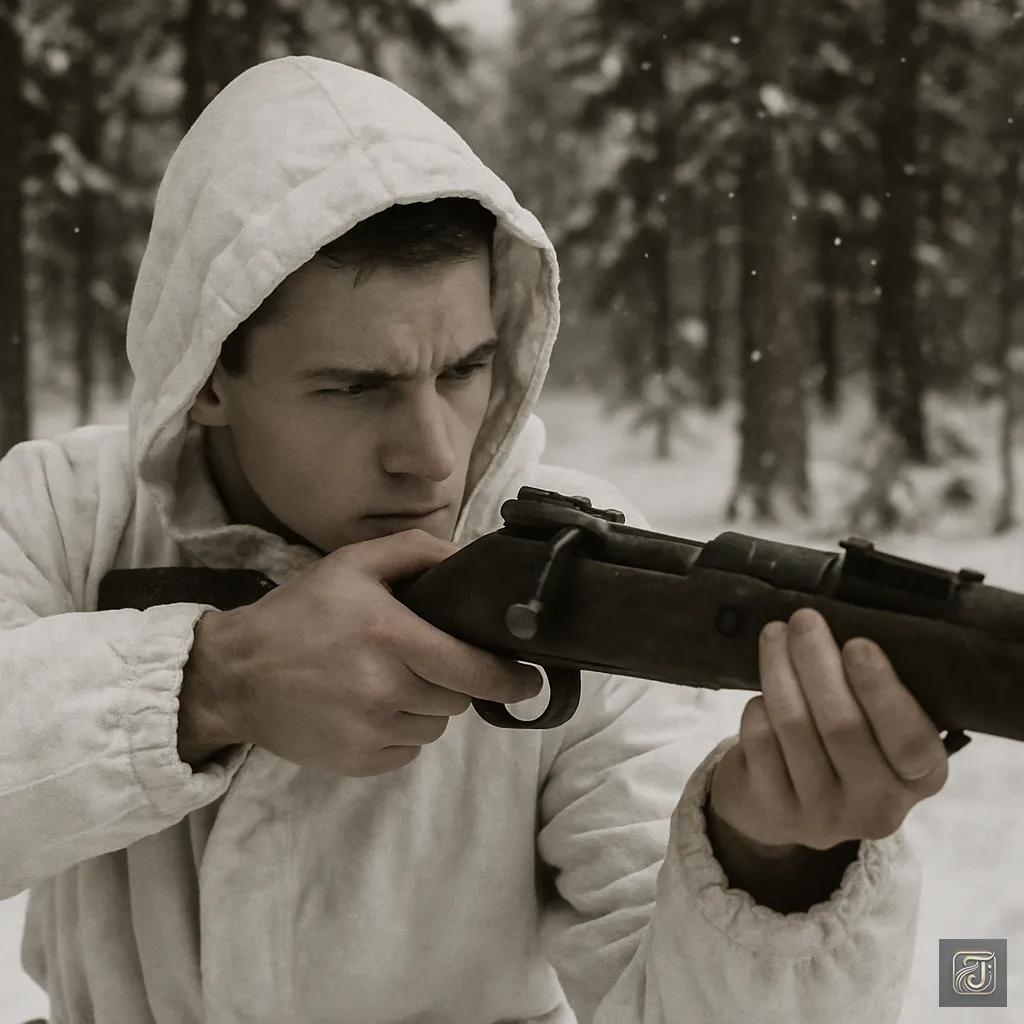
He holds his breath.
Reads the wind.
Places his finger on the trigger.
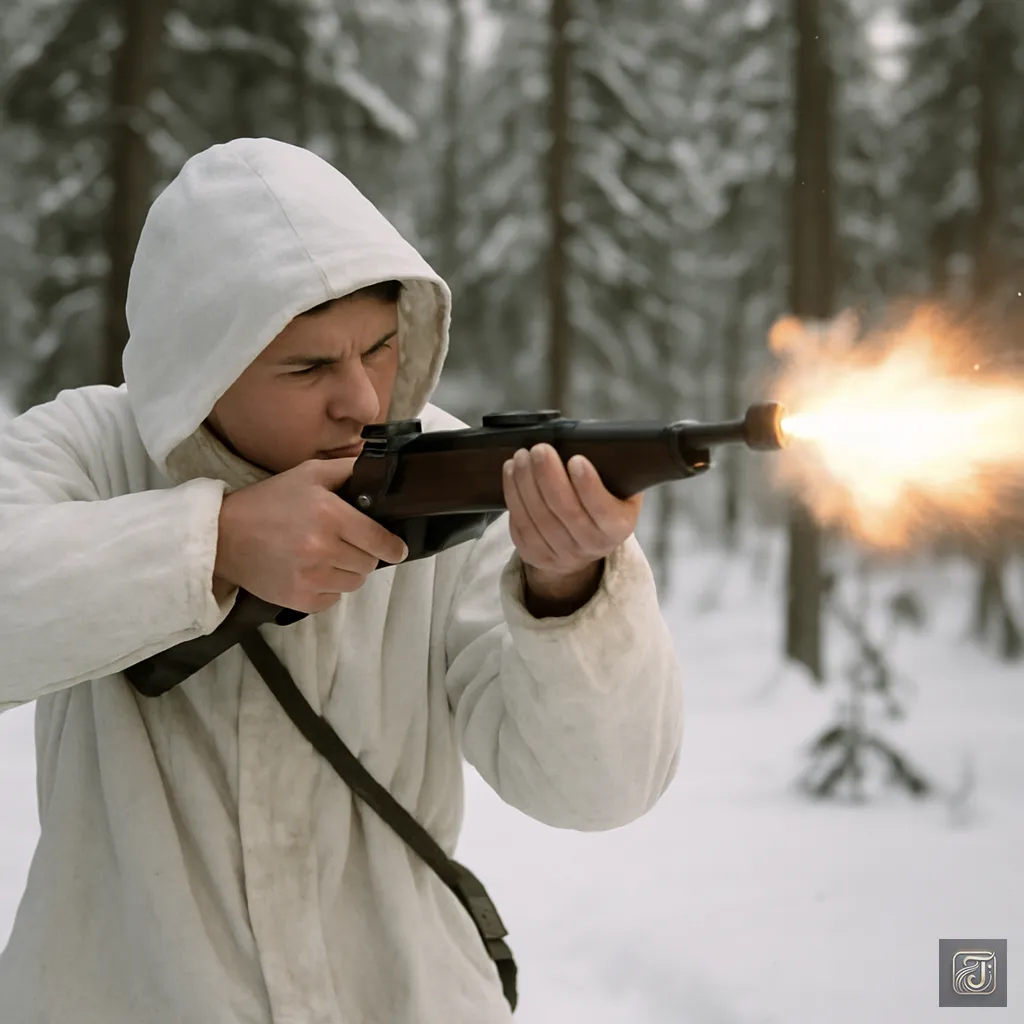
Bang!
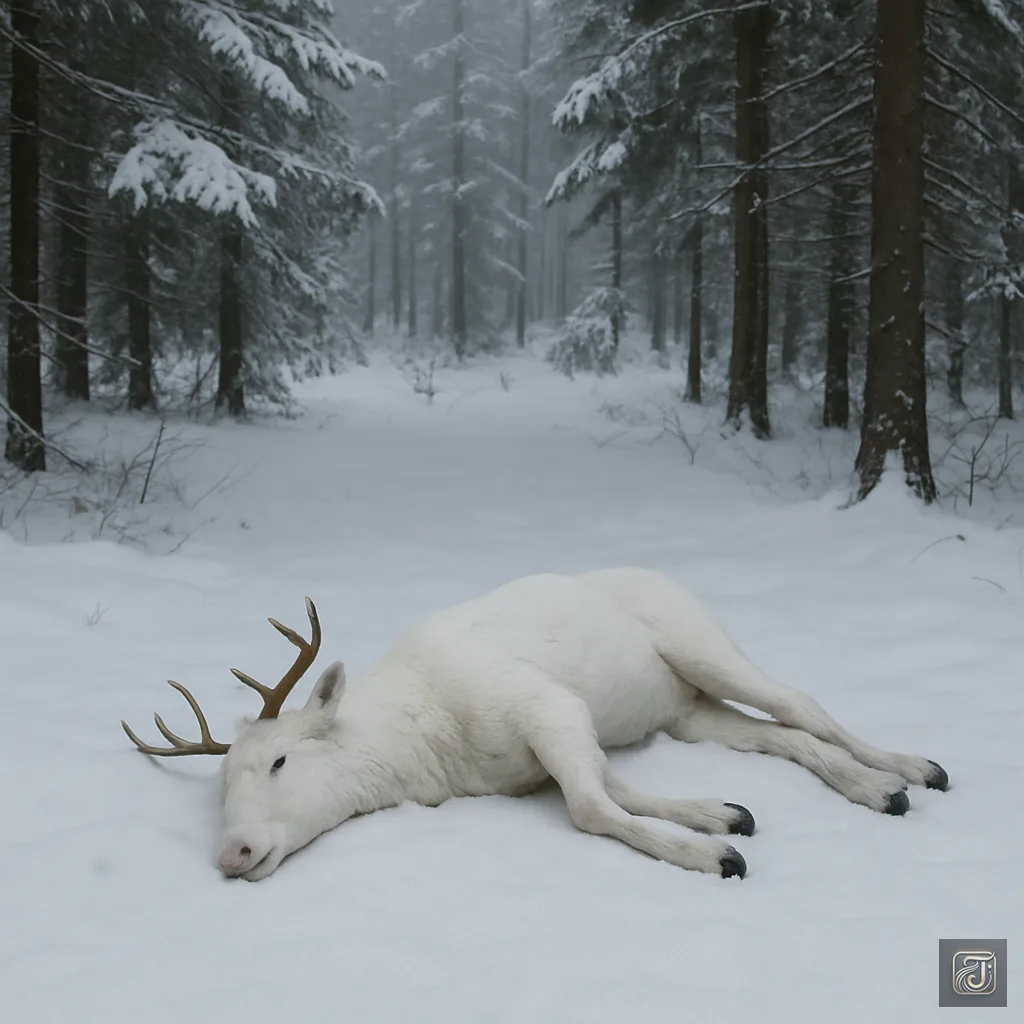
The gunshot tore through the snowy forest’s silence—only for a moment.
No birds flew.
No trees swayed.
Only the white deer fell.
After a long silence, his father spoke slowly.
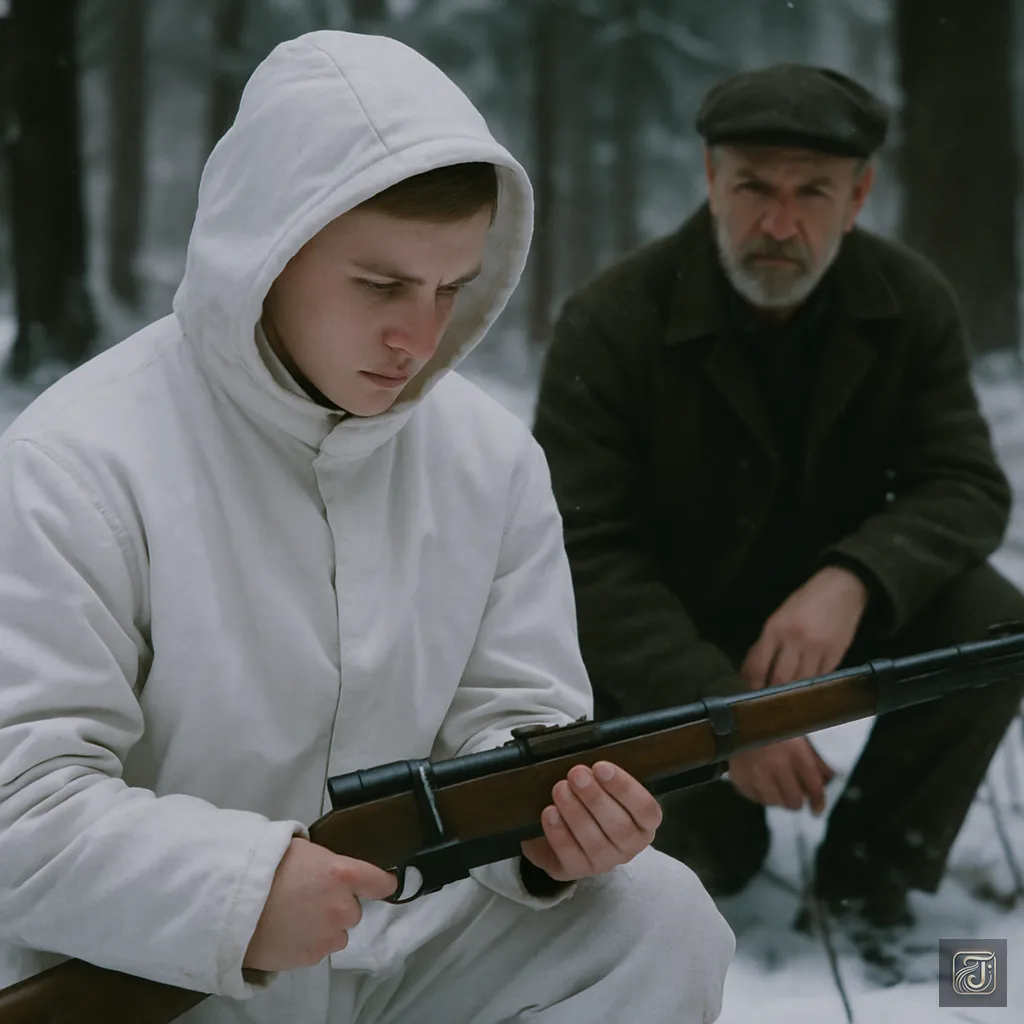
Father:
“…You got it.”
Simo said nothing, his eyes fixed on the rifle.
There was no joy in his gaze.
Only one thing remained—
The weight of taking a life.
He looked down at his rifle.
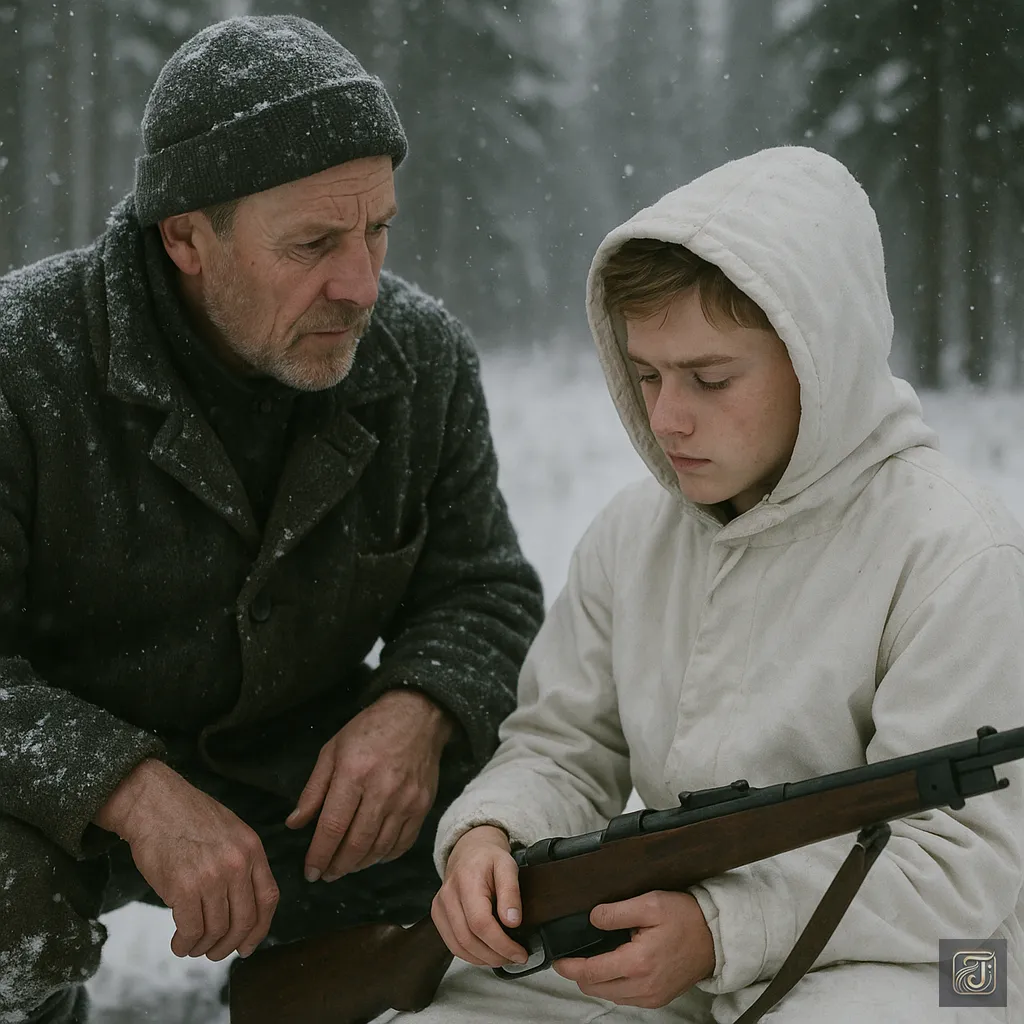
Simo Häyhä:
“…Does it hurt, being shot?”
Father:
“It does.”
“Shooting means taking someone’s life.”
“That’s why you must finish it with a single shot—so you cause as little pain as possible.”
“That’s the respect you owe your target.”
Those words sank deep into Simo’s heart in the stillness of the snow.
Chapter 2: A Will of Iron and the Skill to Strike True
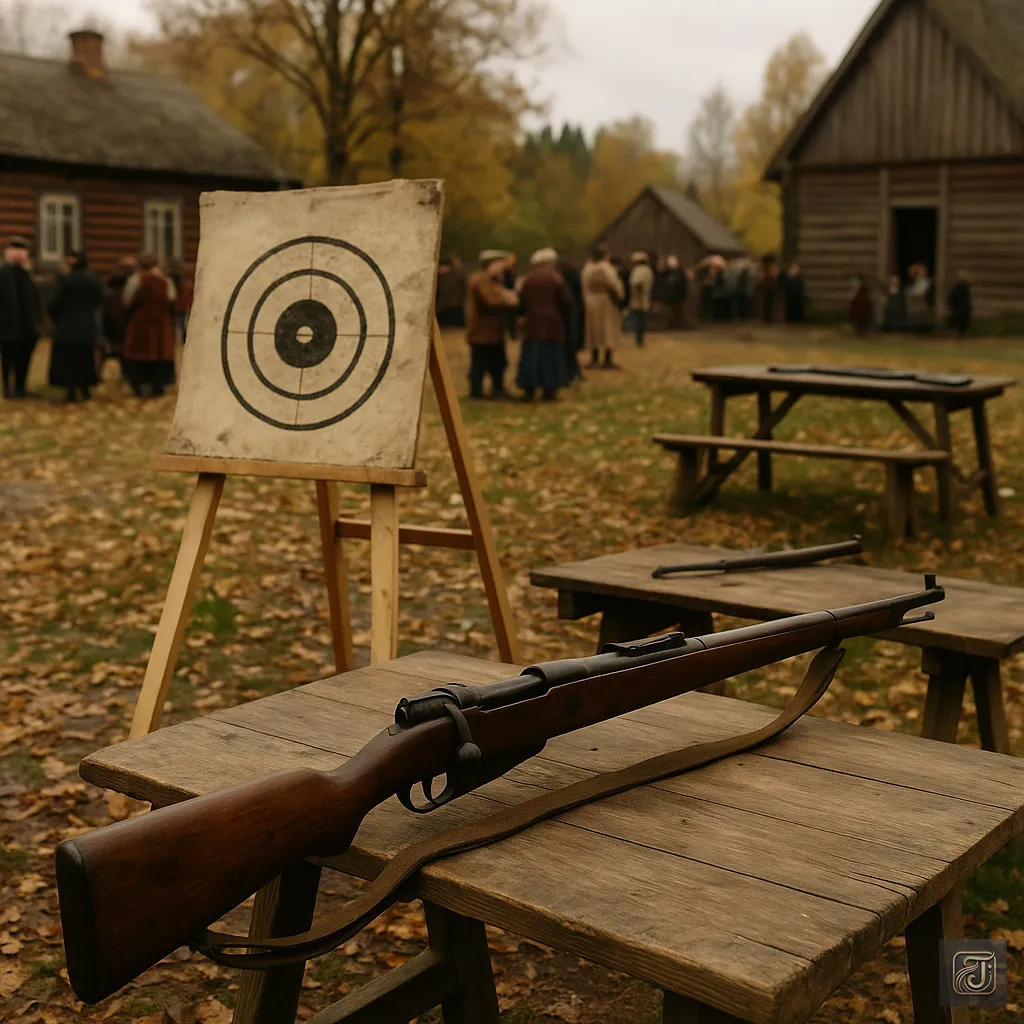
The autumn village festival.
In the town square, handmade targets and rifles were lined up.
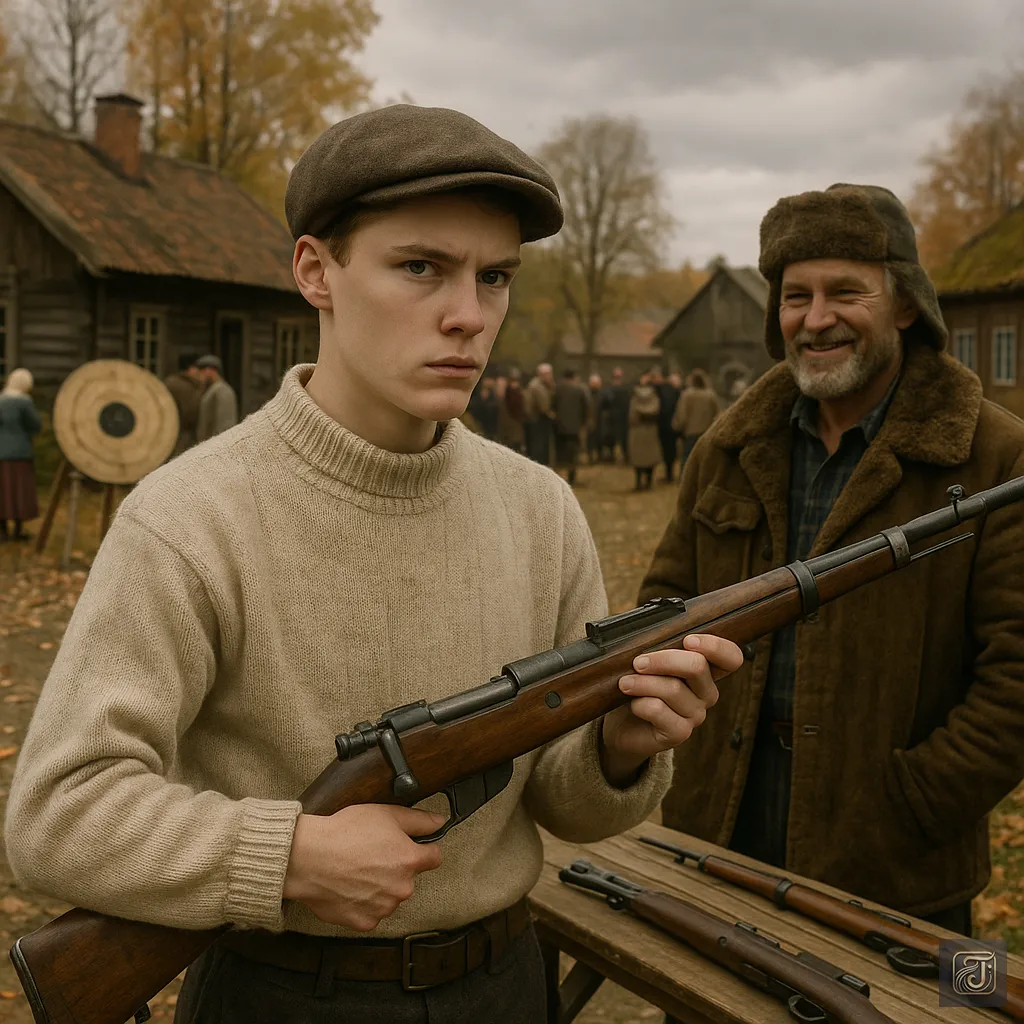
Jonas:
“Oh? Simo’s joining too?”
Jonas, the village hunter, chuckled.
Simo didn’t respond.
He simply stepped into line, quietly.
Slung over his shoulder was an old rifle with no scope.
His turn came.
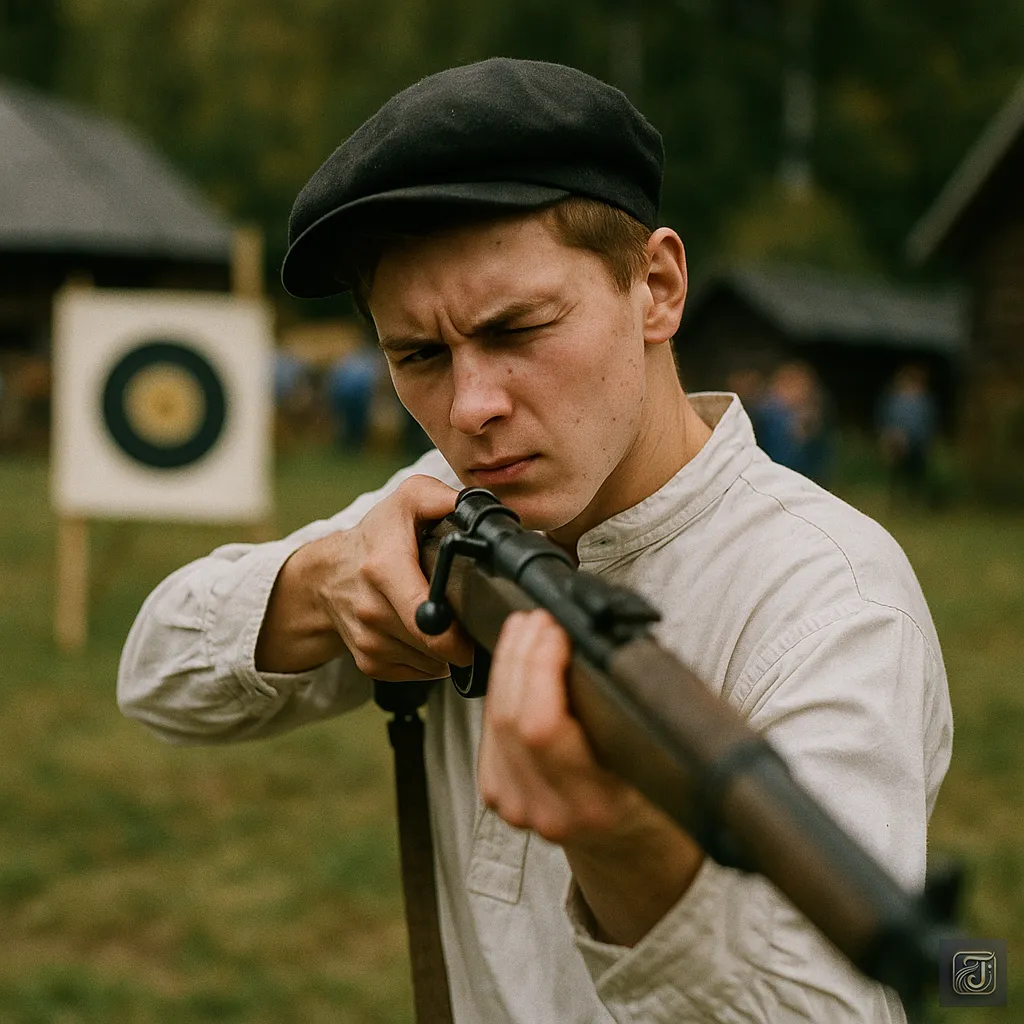
Simo silently fixed his eyes on the target and raised his rifle.
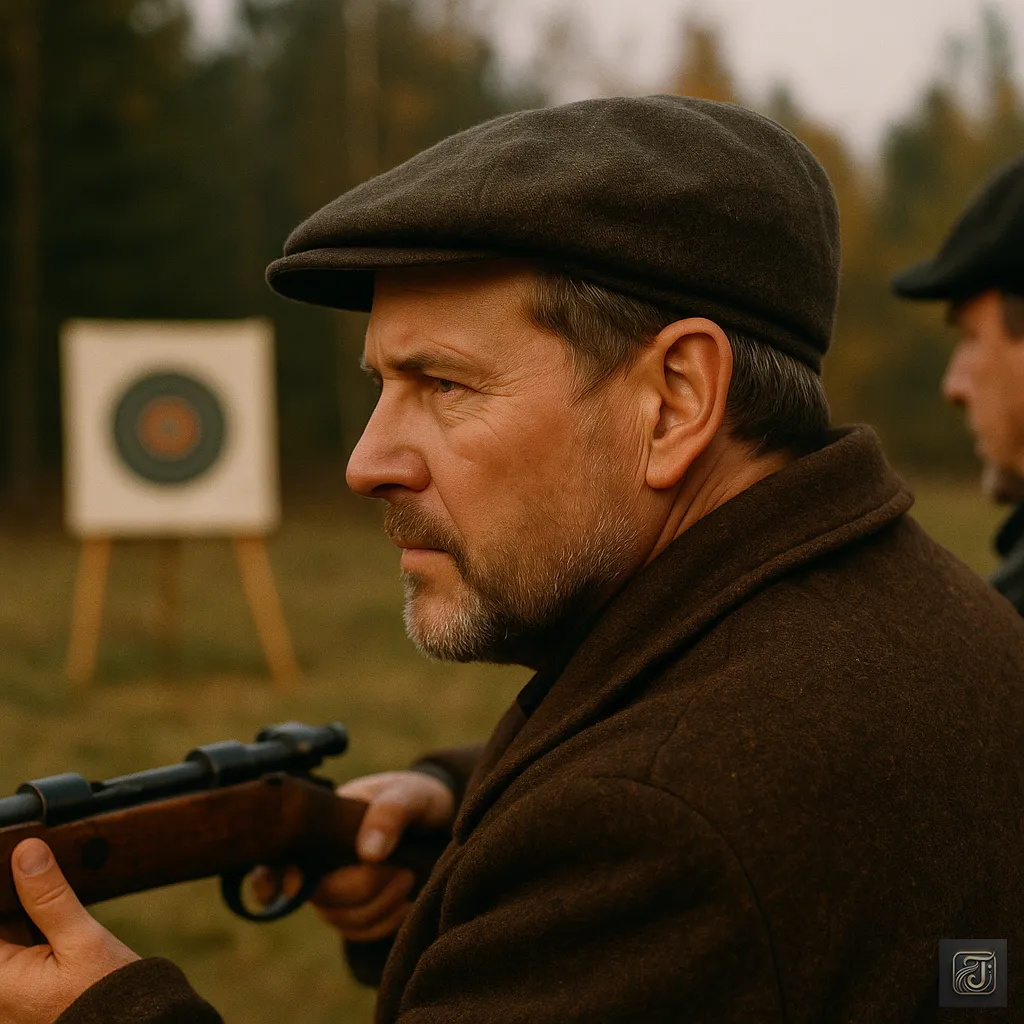
The man:
“The wind’s from the west.”
“Just a slight sway…”
murmured one of the onlookers.
Bang!
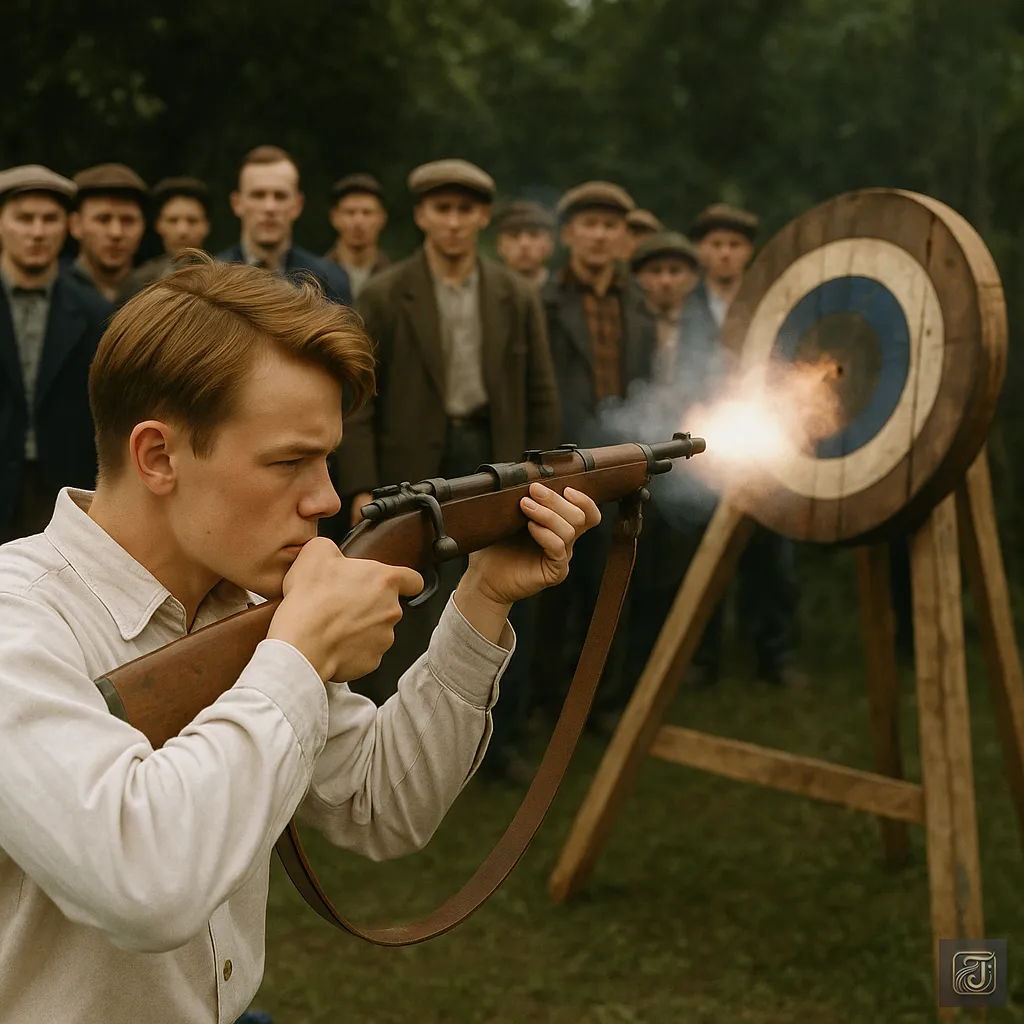
The first shot pierced the center.
A stir ran through the crowd.
Second shot.
Third shot.
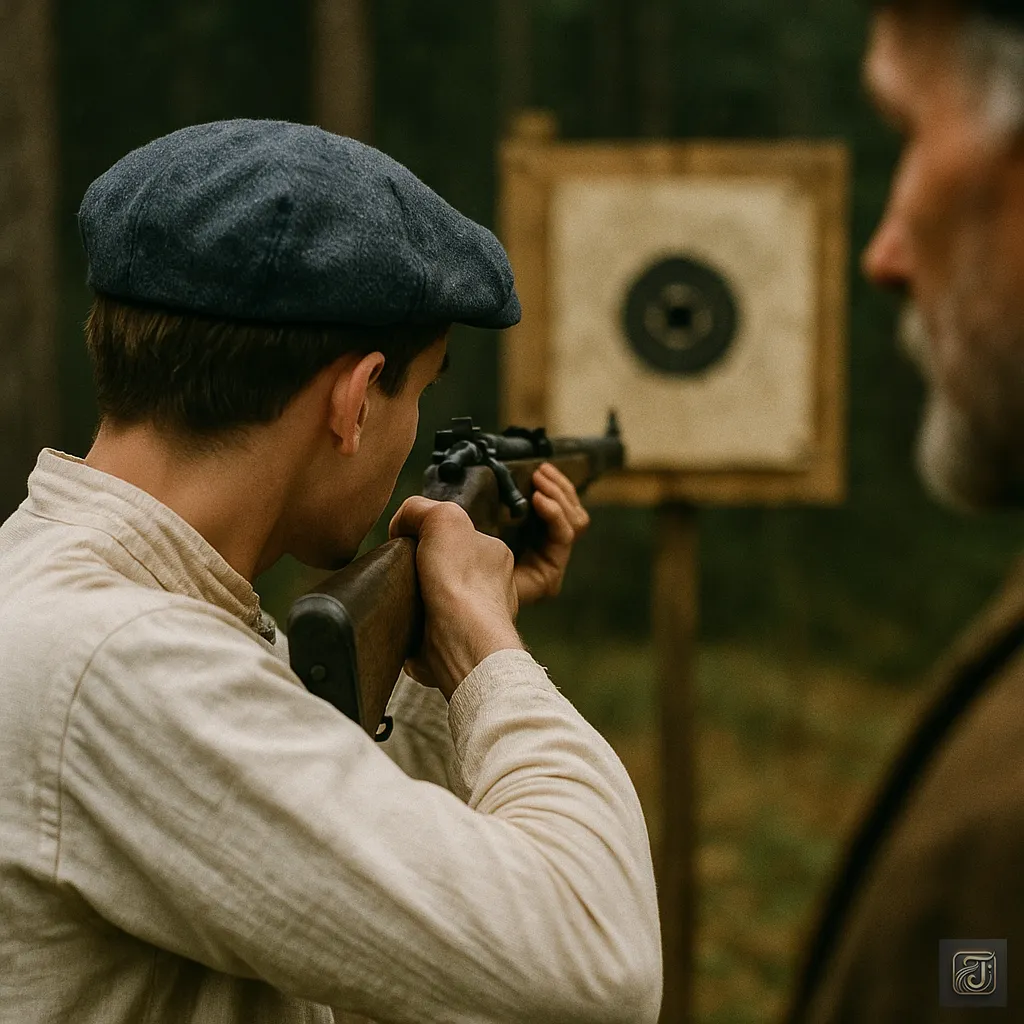
Murmur:
“All dead center… seriously?”
“He doesn’t miss… What is this guy?”
The judges exchanged glances.
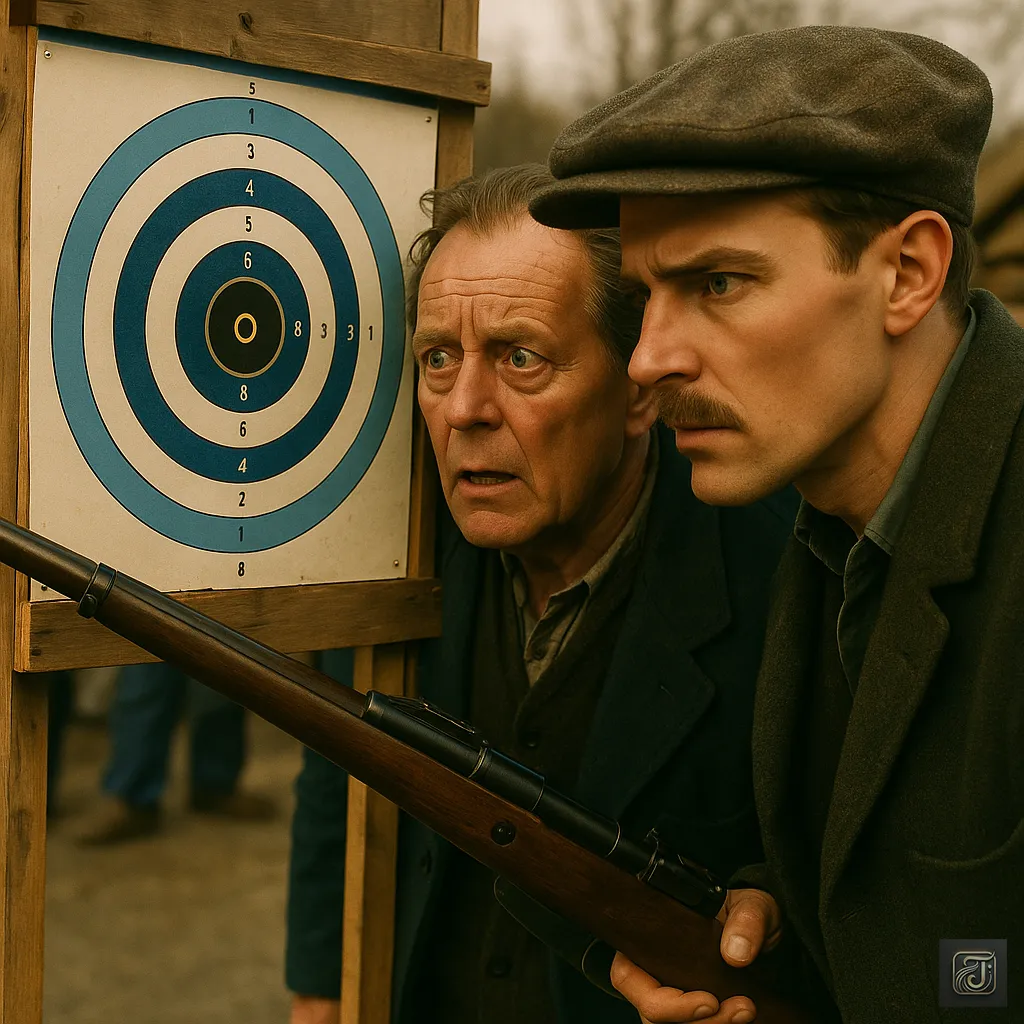
Judges:
“Perfect score.”
“Unbelievable.”
“What on earth is going on?”
That day, he won the competition.
After it ended, Jonas approached him.
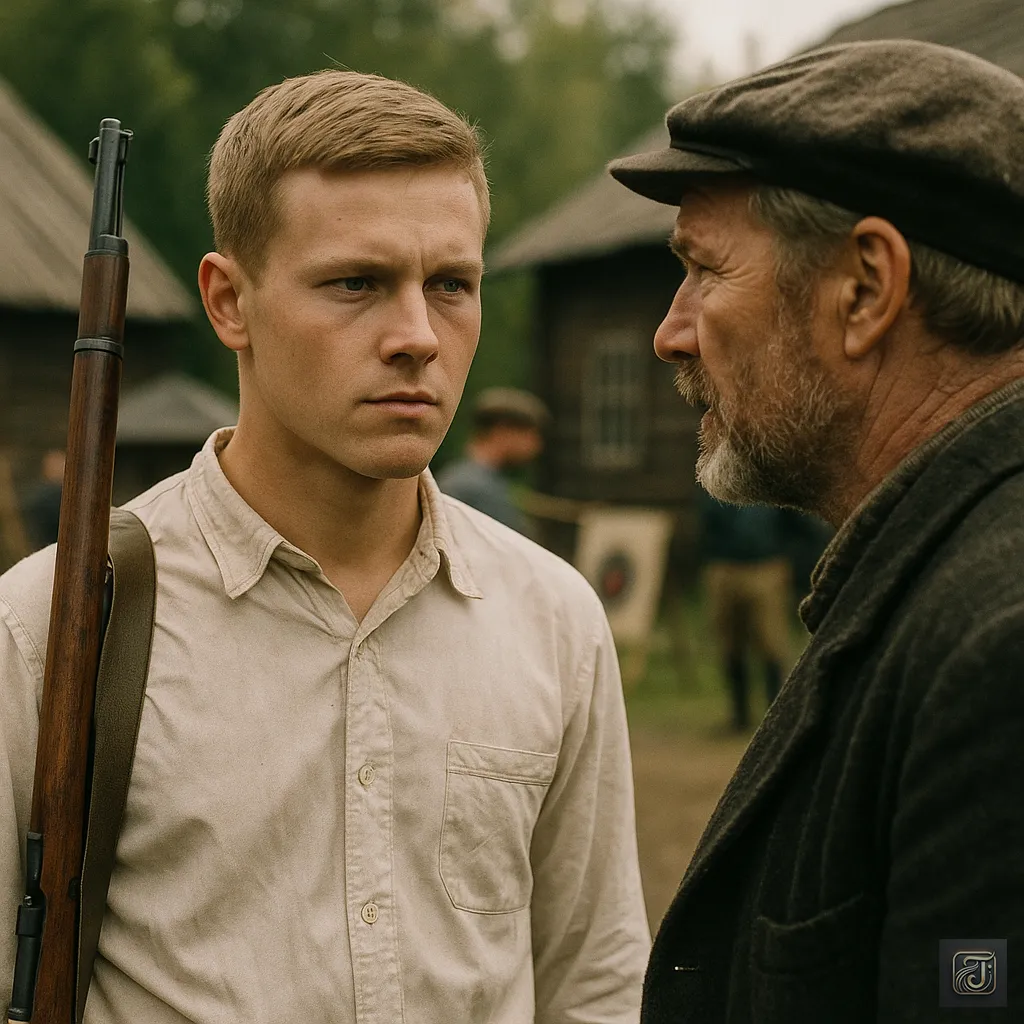
Jonas:
“How the hell are you so accurate?”
Simo Häyhä:
“If I miss, the animal suffers.”
“So I don’t miss.”
“That’s all there is to it.”
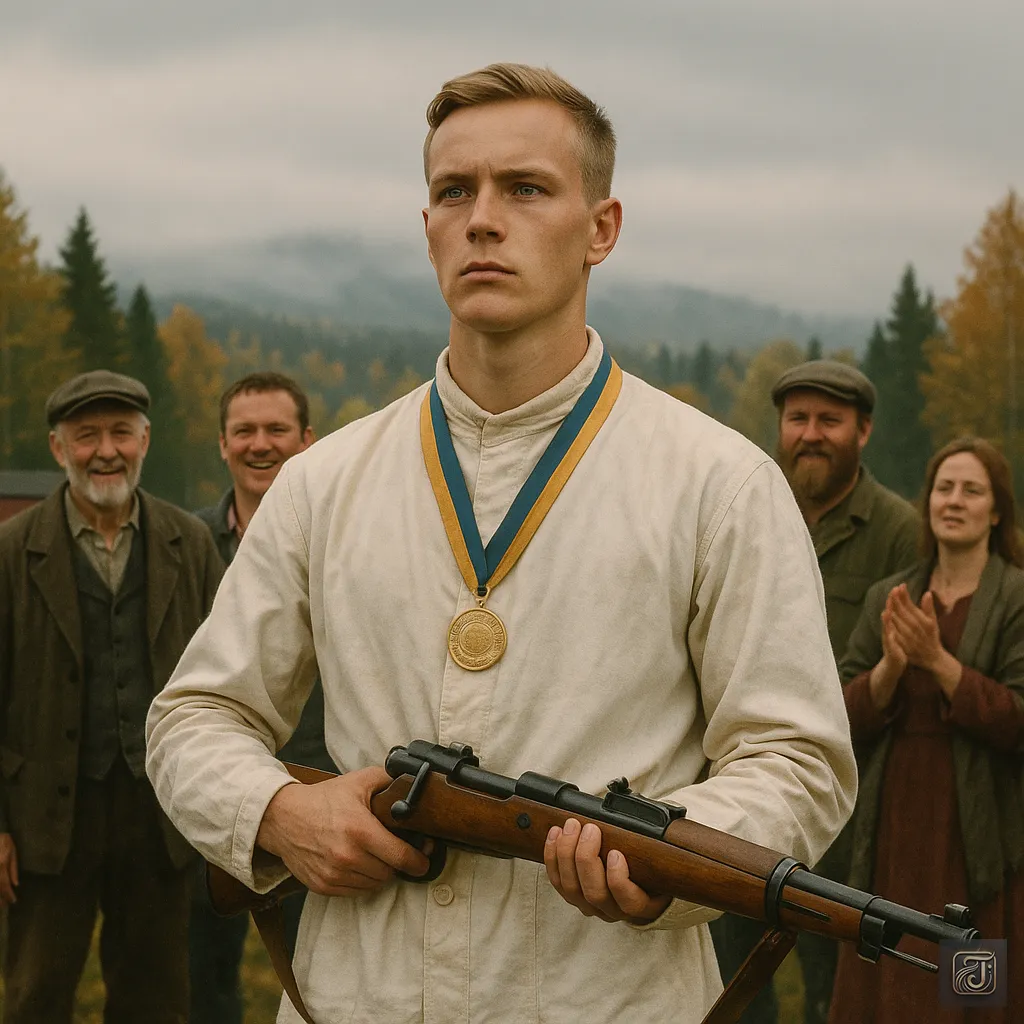
He kept shooting at the targets in silence.
The next year, and the year after that, he remained undefeated.
Chapter 3: The Silent Barracks
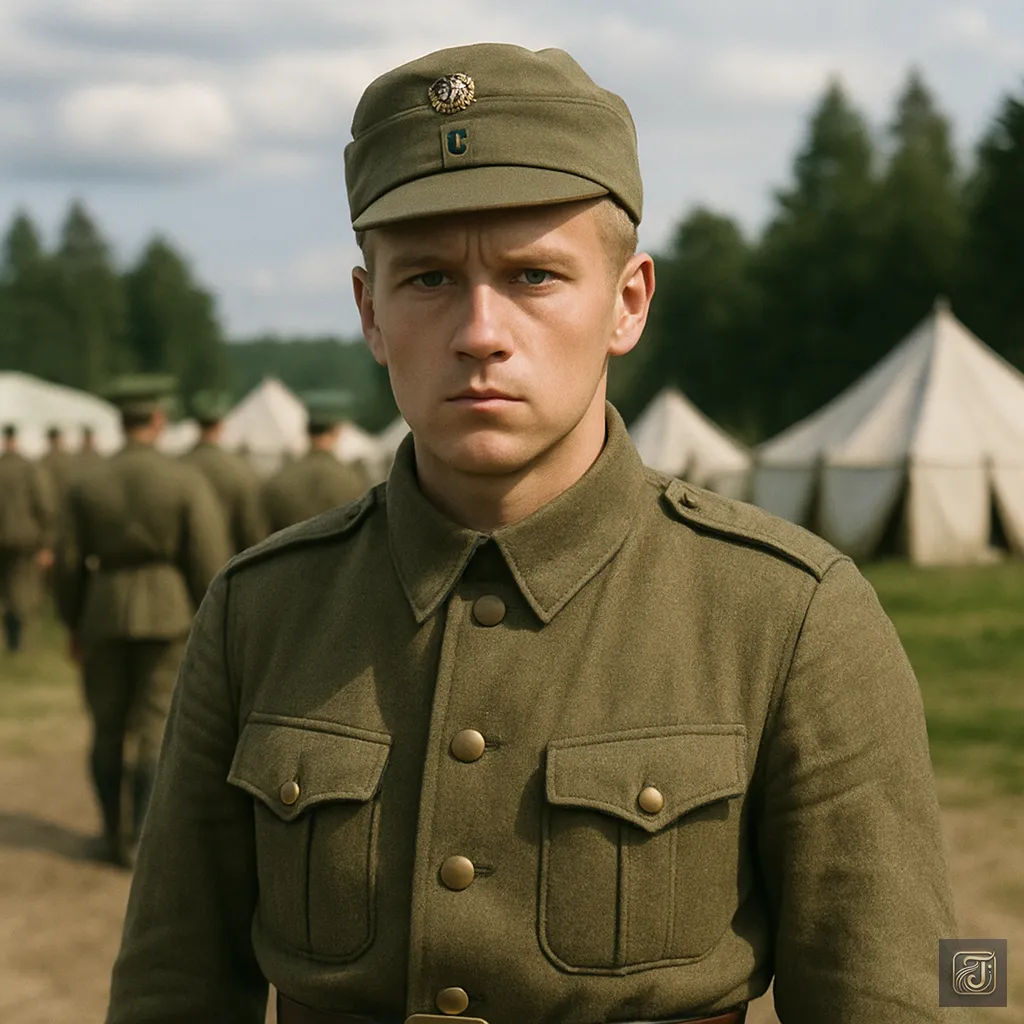
In his early twenties, Simo was conscripted and served in the Finnish military.
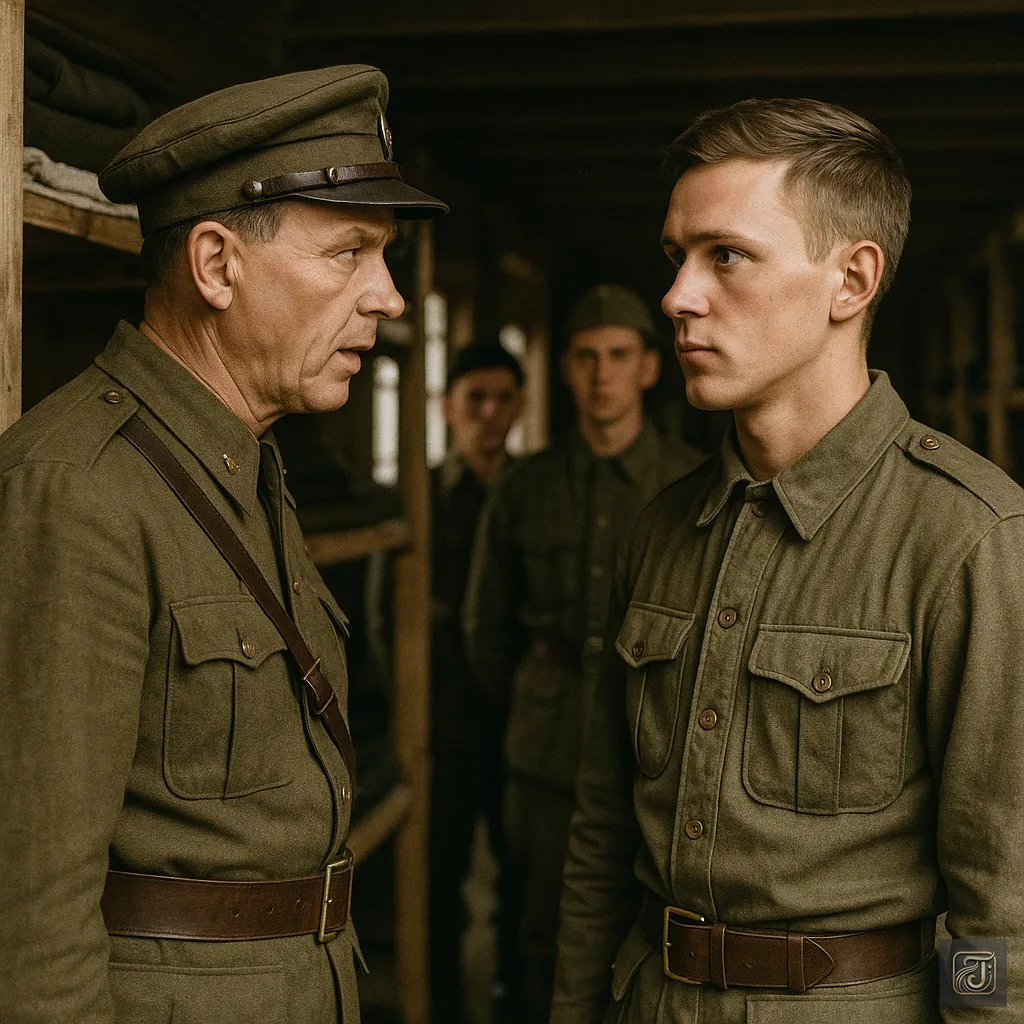
Instructor:
“You—what’s your name?”
Simo Häyhä:
“…Simo Häyhä.”
Instructor:
“Finnish, huh? Farm boy?”
Simo Häyhä:
“Yes.”
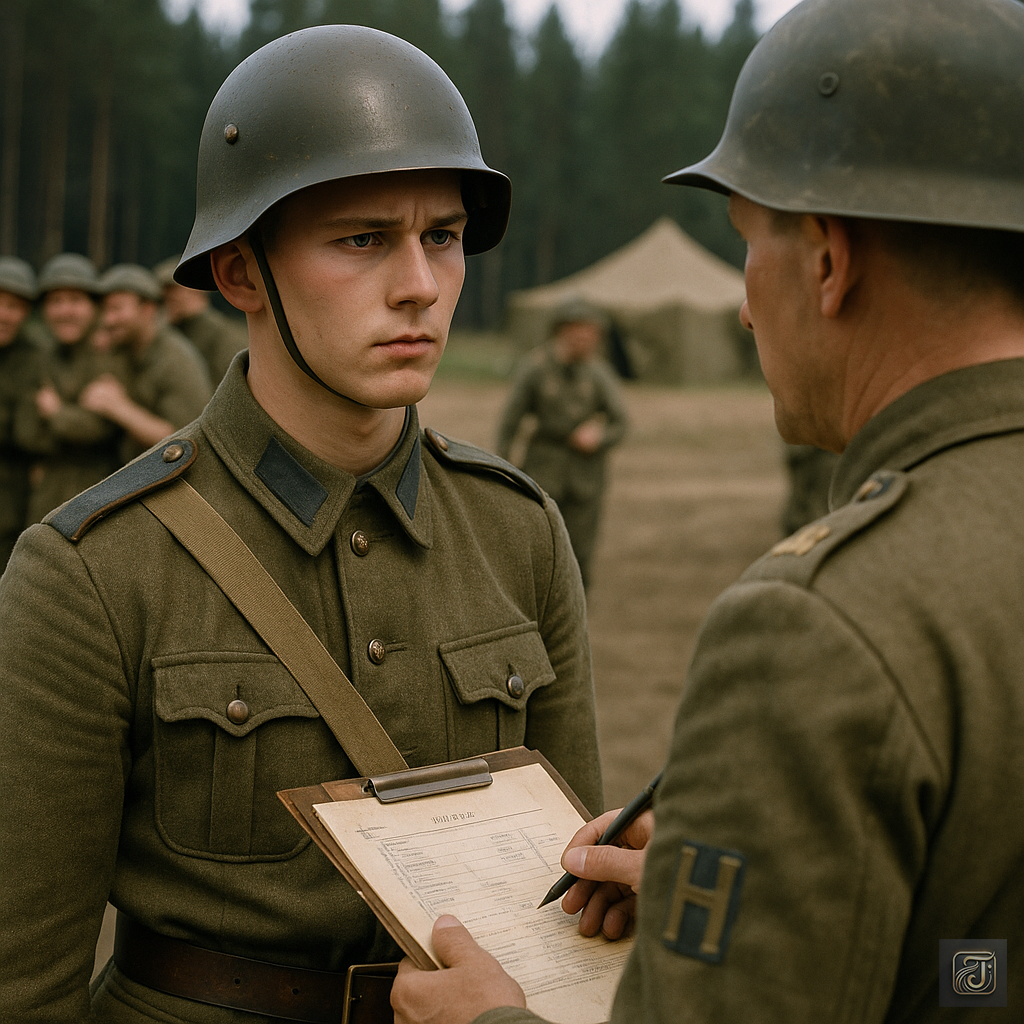
At the military training camp, noise was the norm.
Drill instructors are shouting.
Young men are laughing.
Discipline and chaos lived side by side.
But Simo belonged to neither.
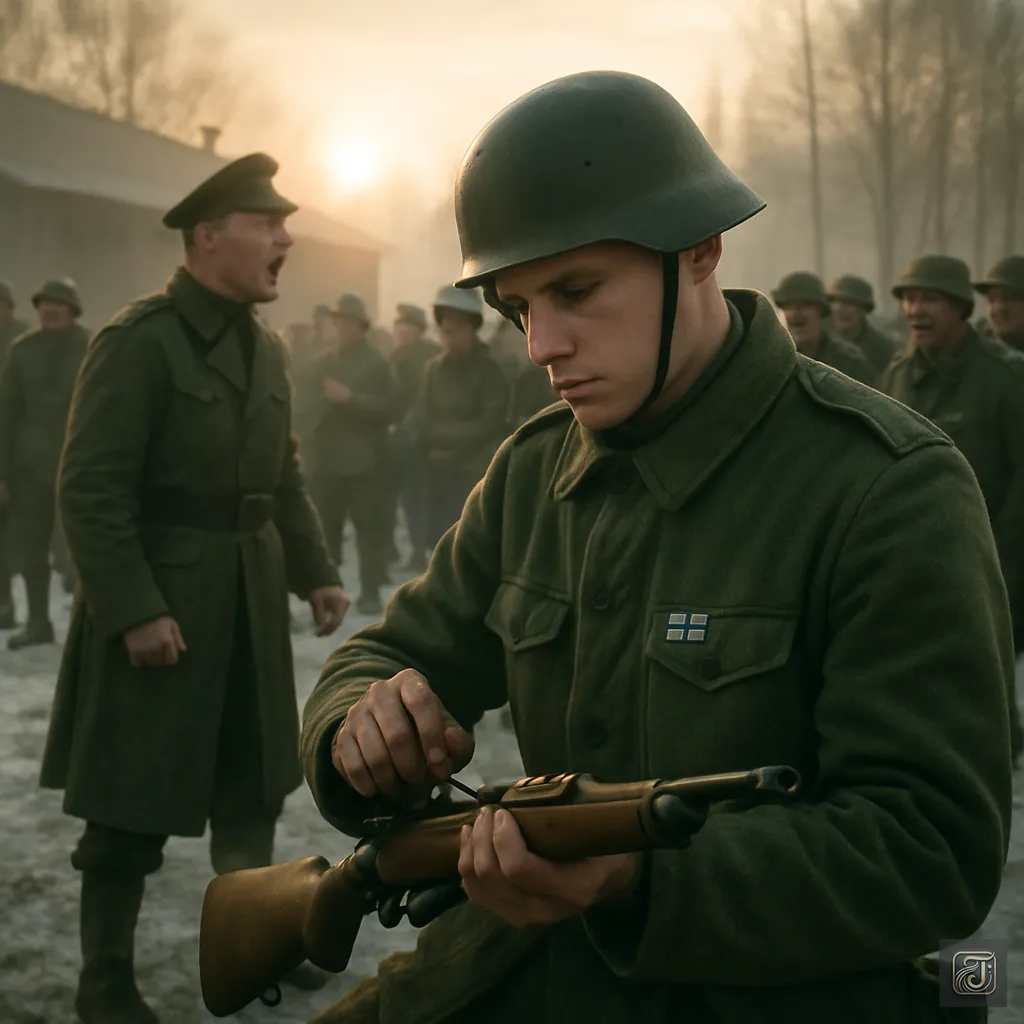
He stayed silent, cleaned his rifle, followed orders, woke up on time, lined up, and ran.
Never stood out. Never complained.
But when he stood before a target, that was different.
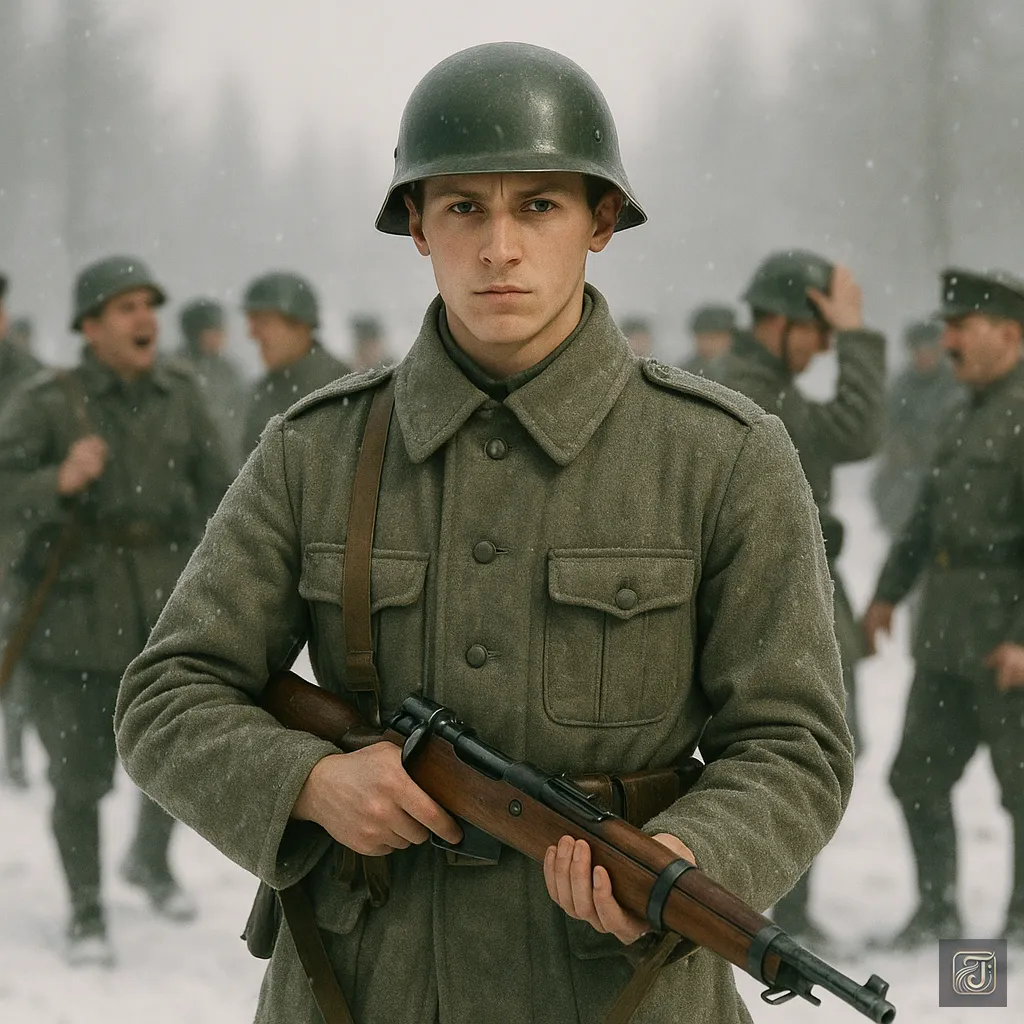
Instructor:
“Alright, next! Häyhä!”
He stepped forward without a word.
Instead of the standard-issue rifle, he raised his own—an old, scope-less rifle he had brought himself.
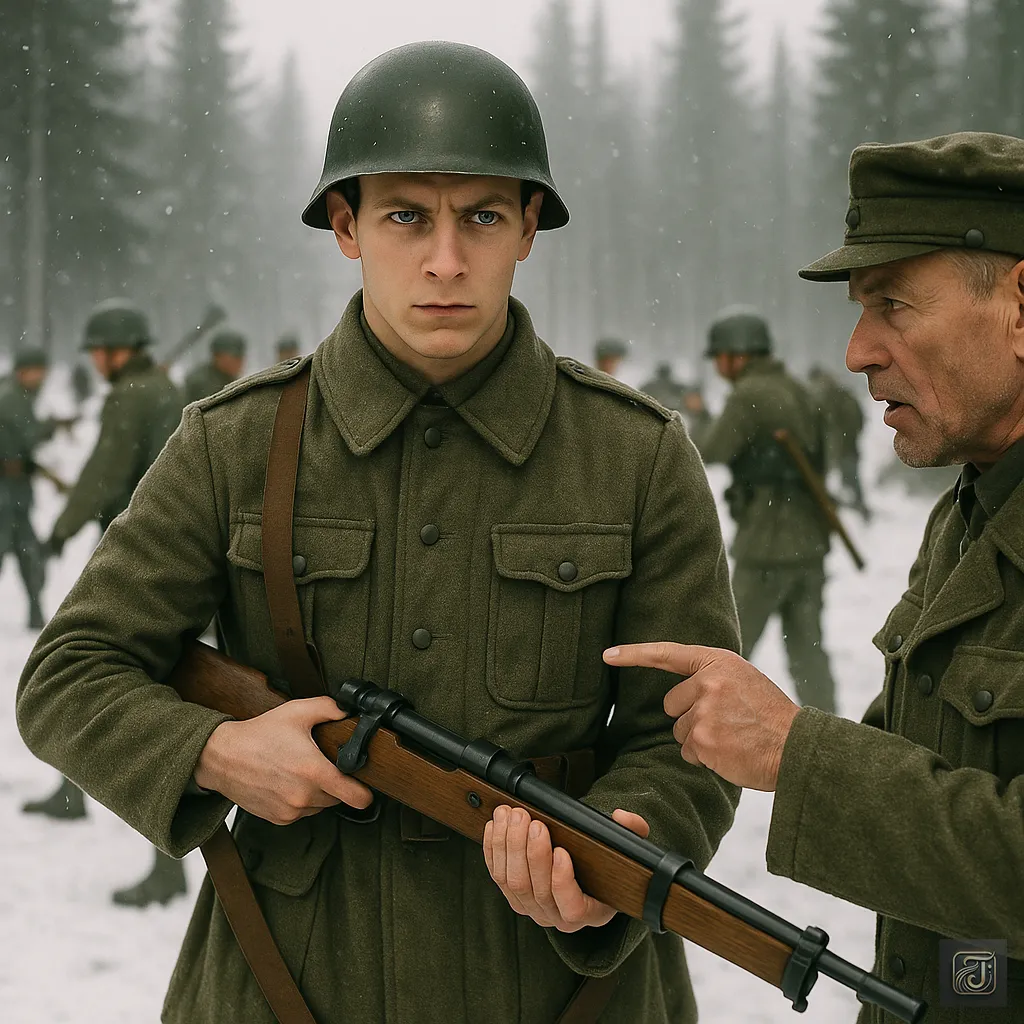
Instructor:
“Where’s your scope?”
Simo Häyhä:
“I don’t use one.”
Instructor:
“Why not?”

Simo Häyhä:
“Looking through a scope forces me to raise my head higher, making me easier to spot.”
“And the lens can reflect sunlight, revealing my position to the enemy.”
“That’s why I don’t use it.”
Instructor:
“…Hmph. Do as you like.”
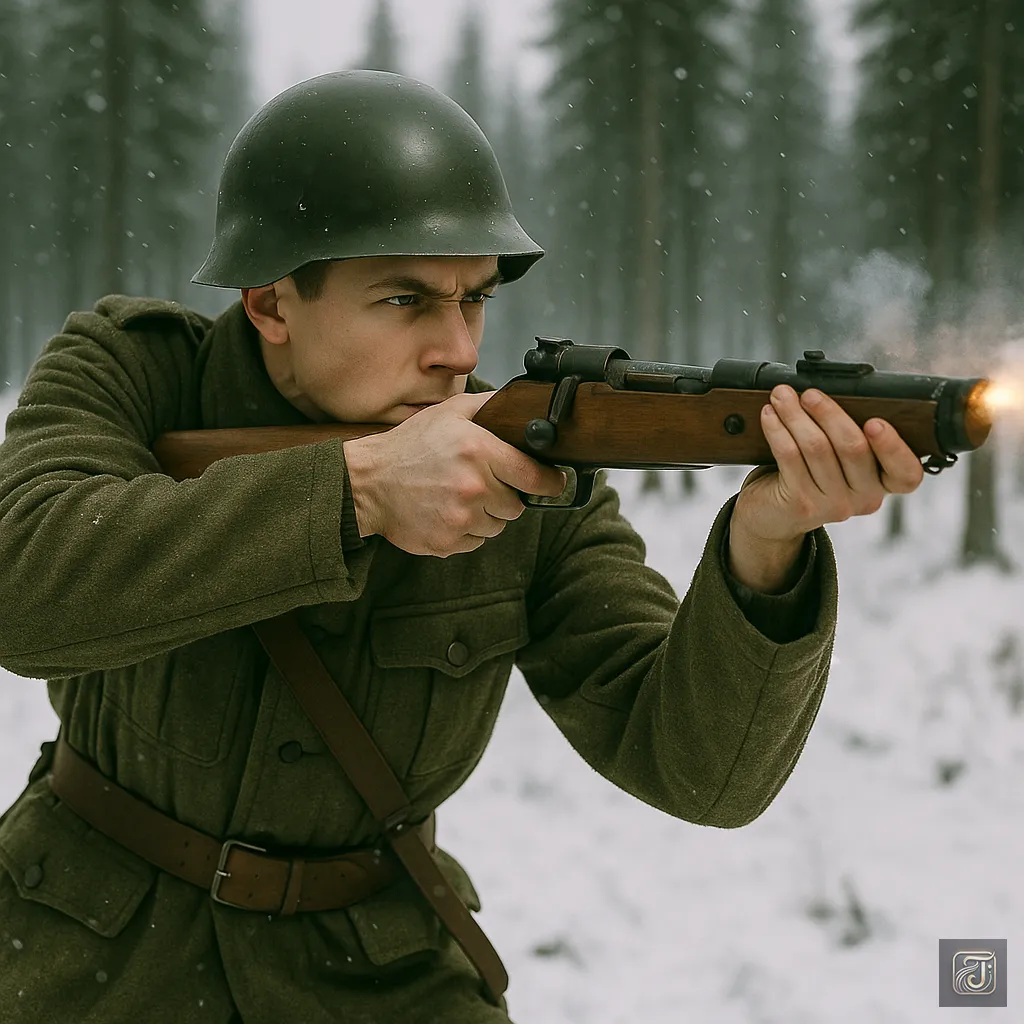
“Bang!”
The gunshot echoed.
The instructor glanced at the scoreboard.
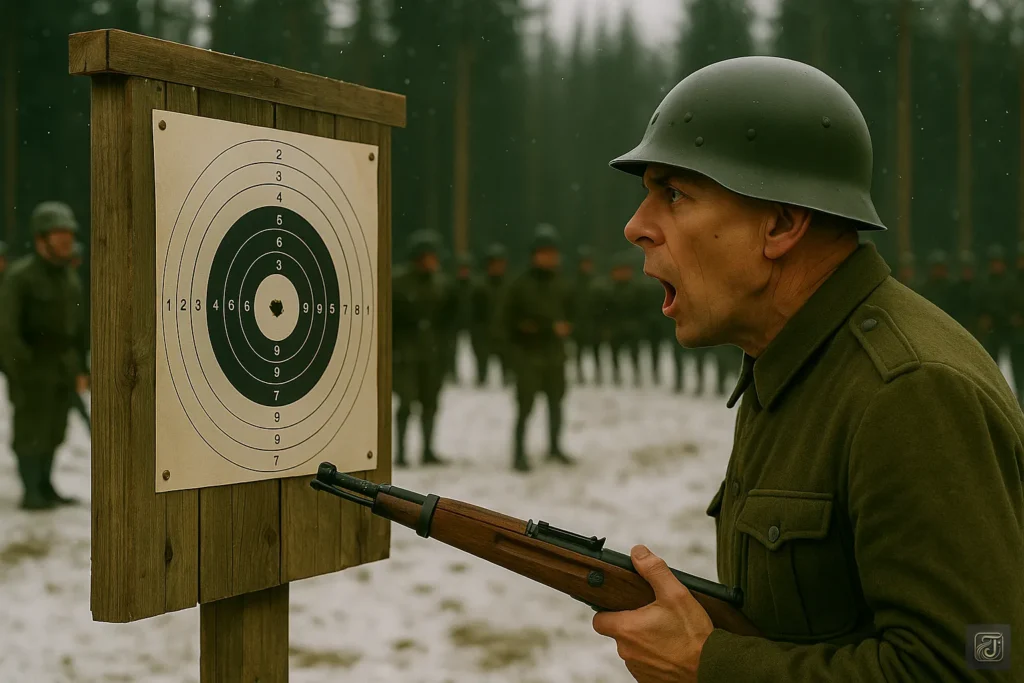
Instructor:
“….Dead center?”
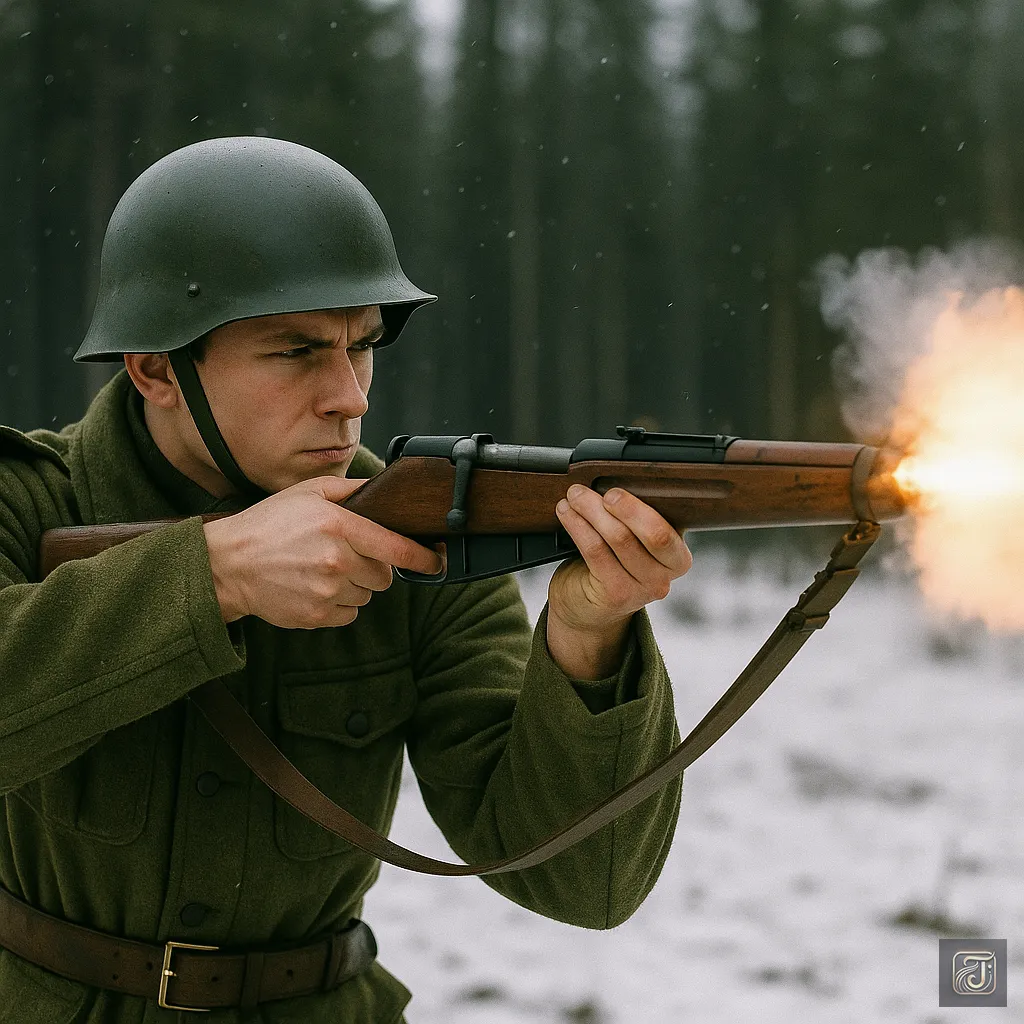
“Bang!”
“Bang!”

Murmur:
“Hey, they’re all dead center…”
The trainees murmured in disbelief.
He never missed a target.
Whispers began to spread among the instructors.
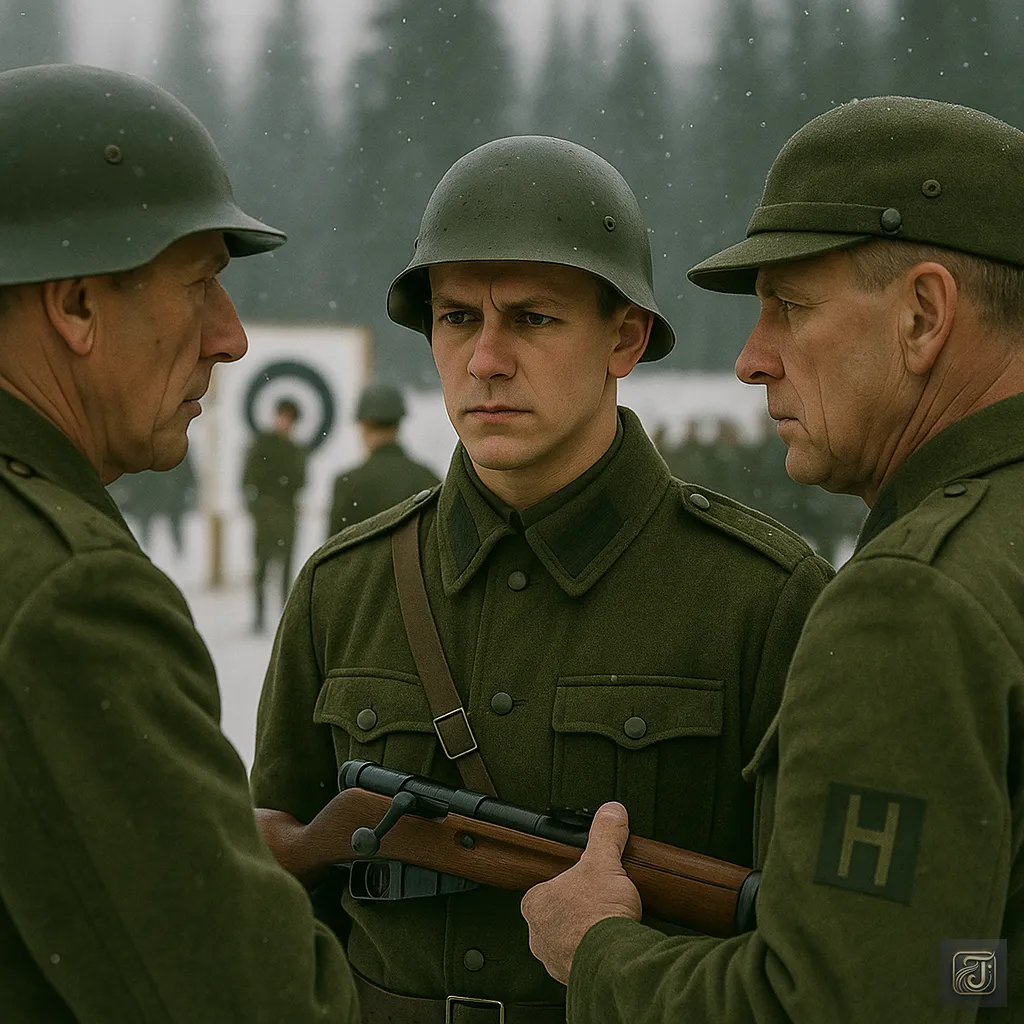
Instructors:
“That guy’s made for a sniper.”
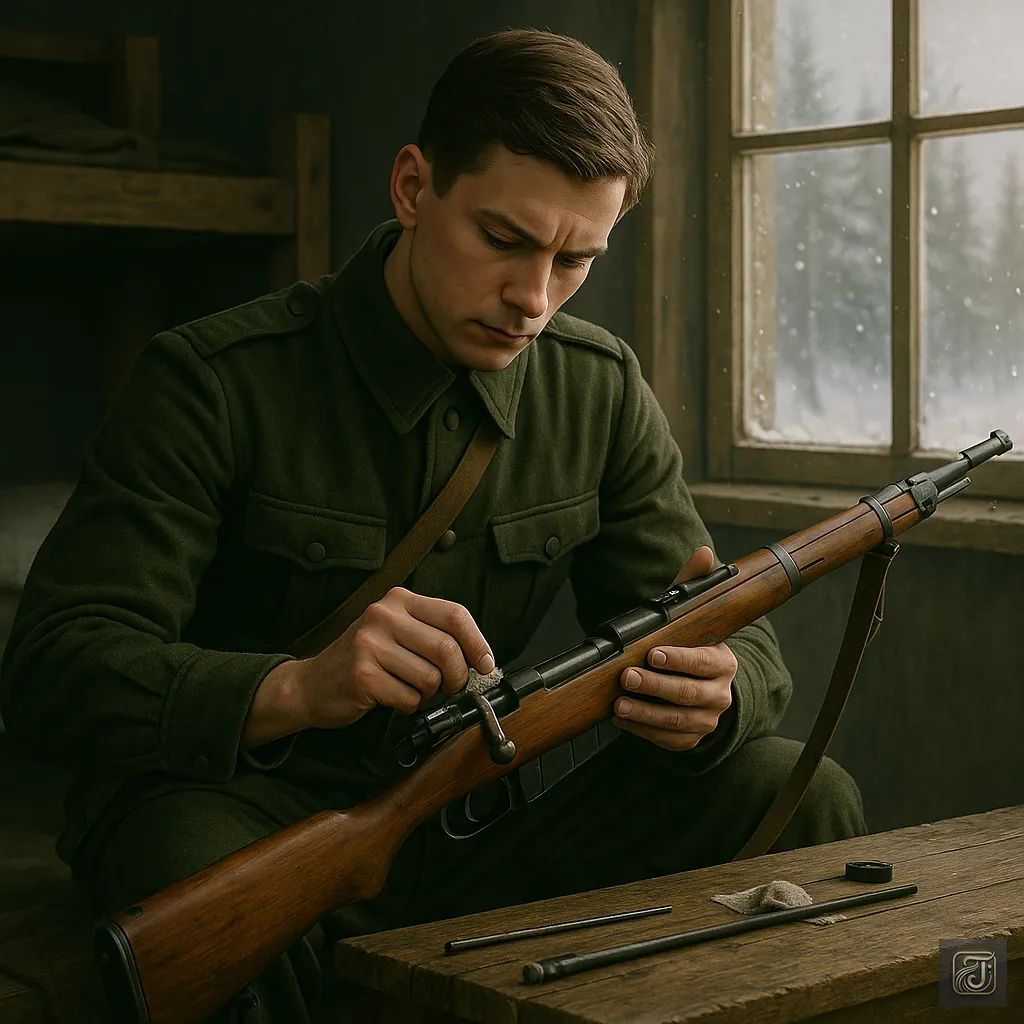
Simo simply spent his days repeating shooting practice.
He exchanged no unnecessary words with others, silently polishing his rifle and going over his shooting procedures.
Not to win shooting competitions, nor to excel as a soldier.
He did it purely to hone his own shooting skills.
Chapter 4: The Beginning of the Flames of War
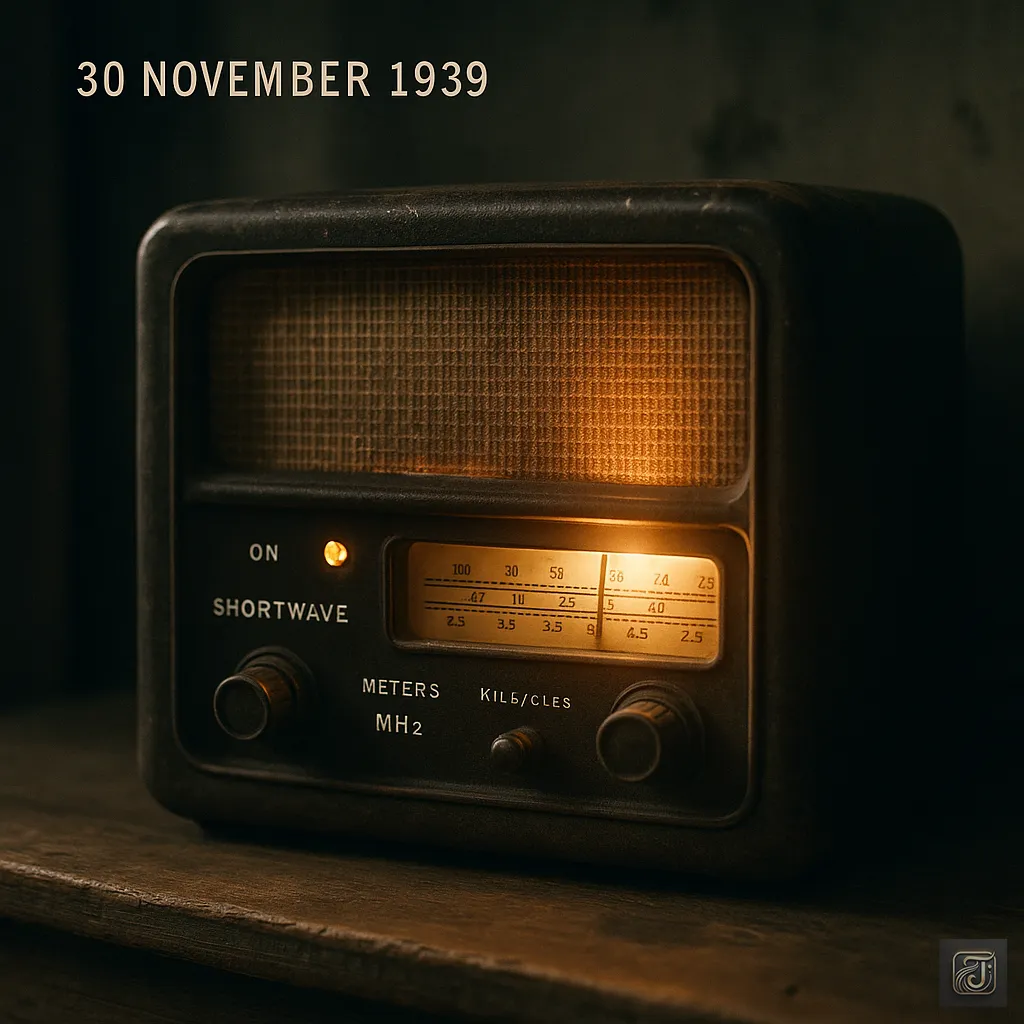
November 30, 1939.
The radio was shouting, as if it were yelling.
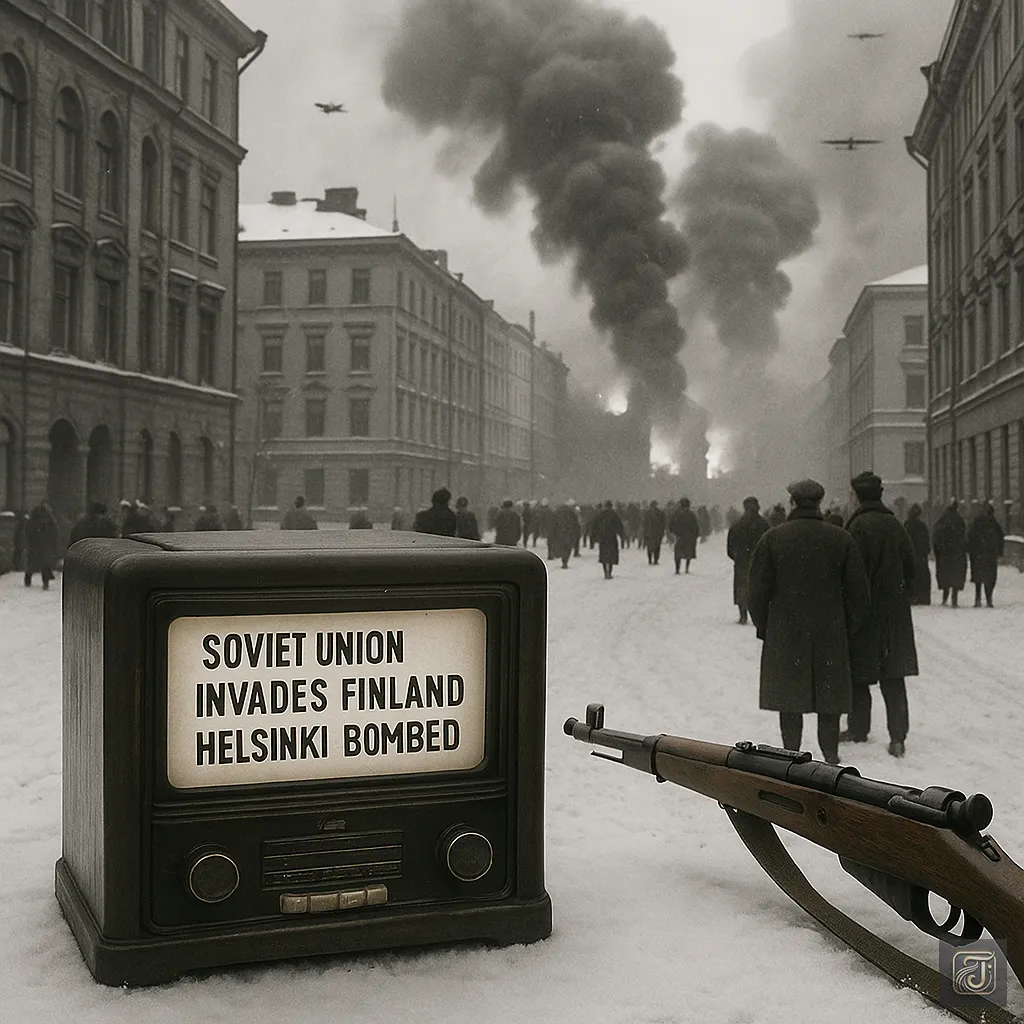
Radio:
“The Soviet Union has invaded Finland!”
“Bombing in Helsinki!”
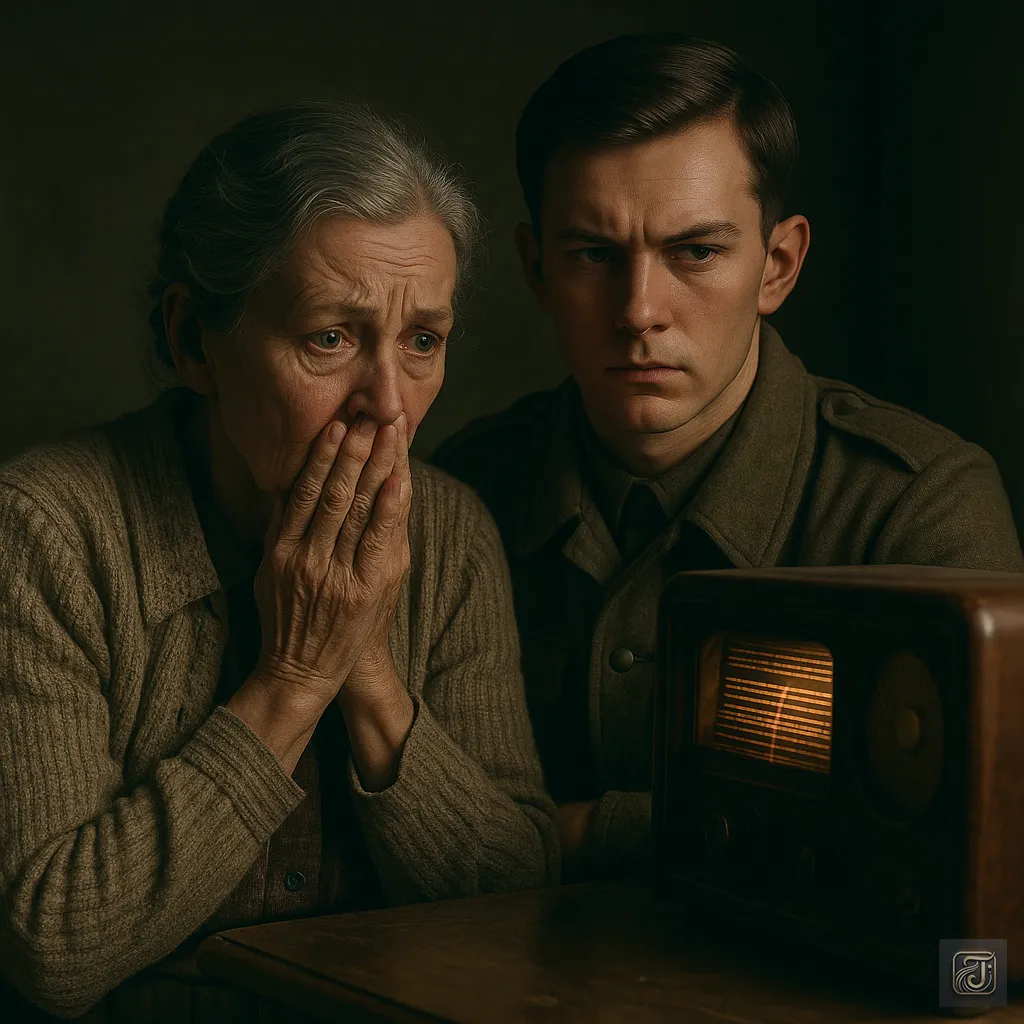
Mother:
“…So it’s begun…”
Simo sat quietly, staring at the radio without a word.
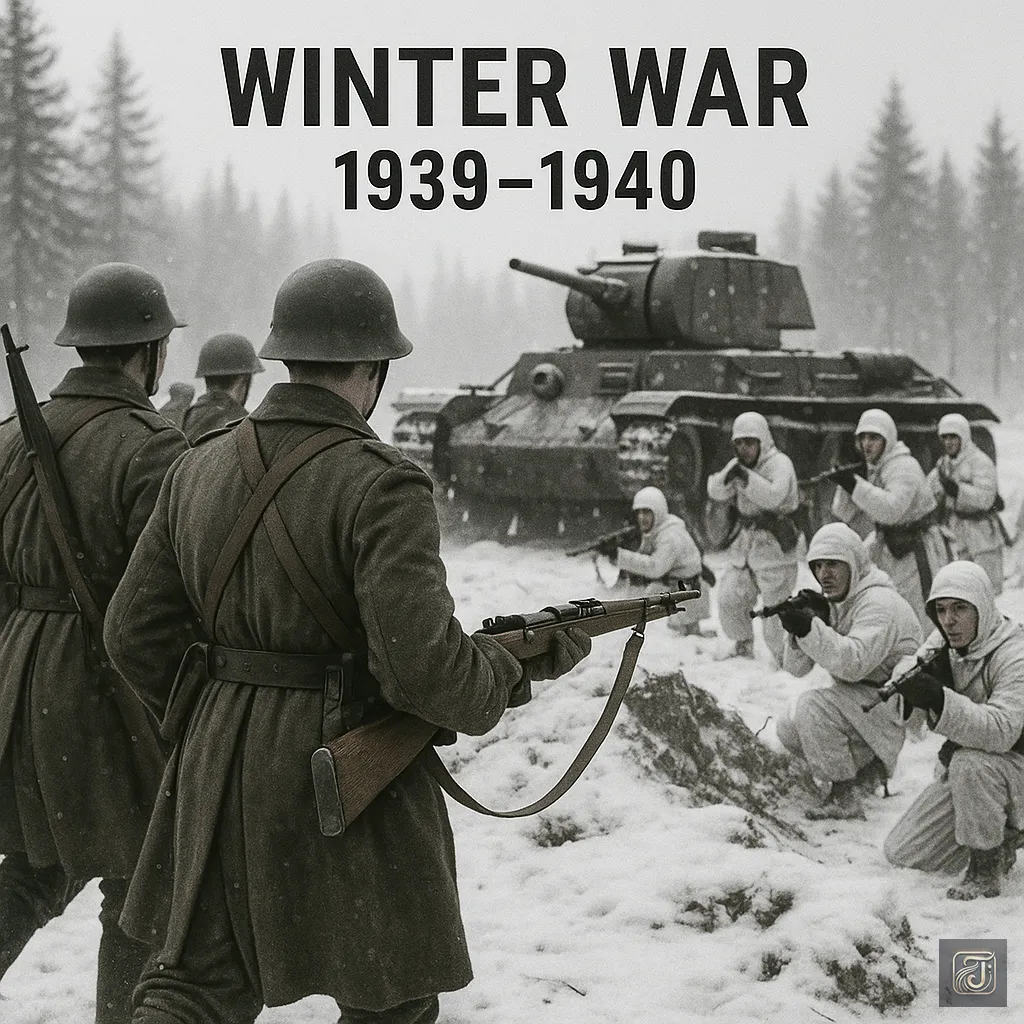
The Winter War (1939–1940)
In November 1939, the Soviet Union invaded Finland, marking the beginning of the Winter War.
The Soviet Union sought to expand its territory and demanded that Finland concede land in order to protect Leningrad (now St. Petersburg).
When Finland refused, the Soviet Union resorted to military force, and the war broke out.
Finland, with a small military and limited resources, stood against the powerful Soviet forces, facing immense challenges.
However, Finland continued to resist, utilizing guerrilla tactics like the “Motti strategy,” which inflicted heavy losses on the Soviet army.
The war continued until March 1940, when the Moscow Peace Treaty was signed. Finland was forced to cede some territory, but it maintained its independence.
This war became a symbol of Finland’s proud resistance and garnered global attention.
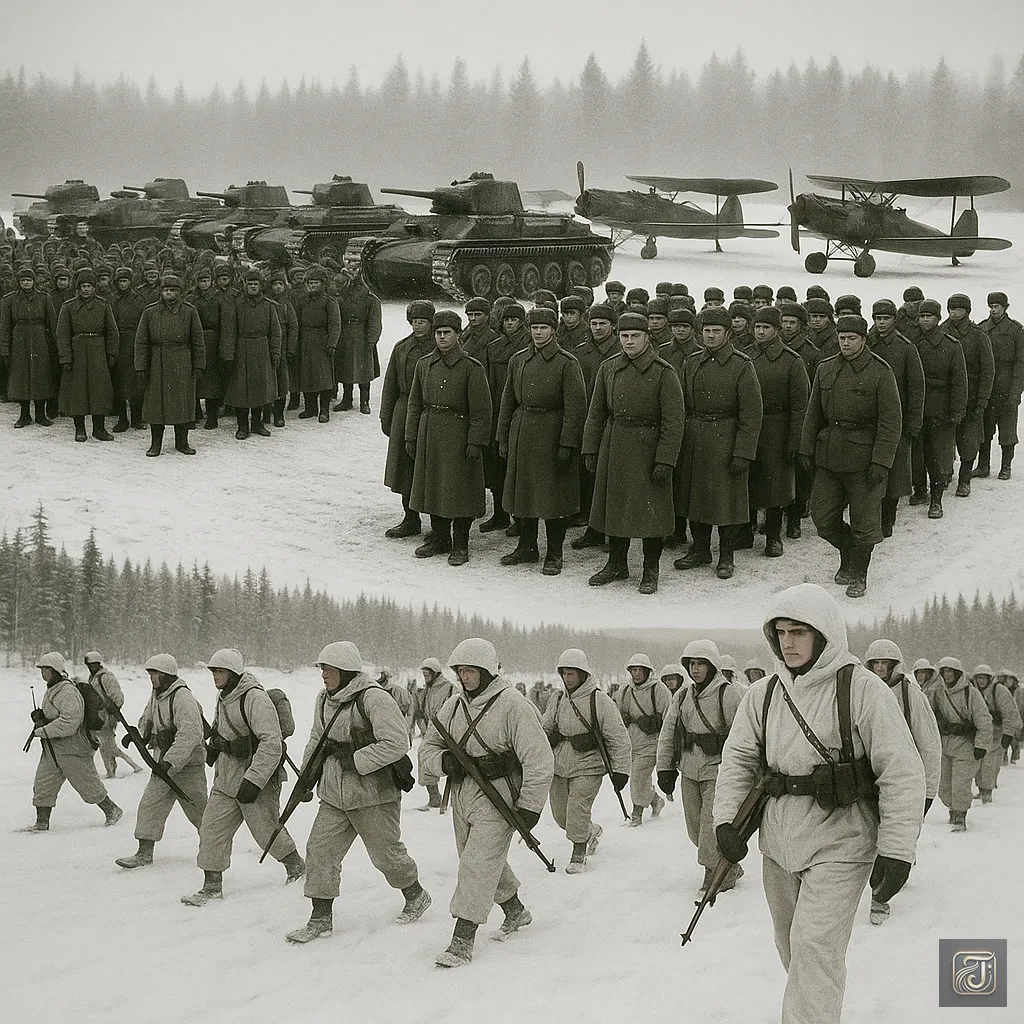
For the Finnish army, the disparity in strength during this war seemed utterly hopeless.
Soviet Union: Approximately 450,000 soldiers, 2,000 tanks, over 1,000 aircraft
Finland: Approximately 300,000 soldiers, a handful of tanks, and only a few aircraft.
It was a battle where, by any measure, there seemed to be no hope of victory.
A few days later, a draft notice arrived.
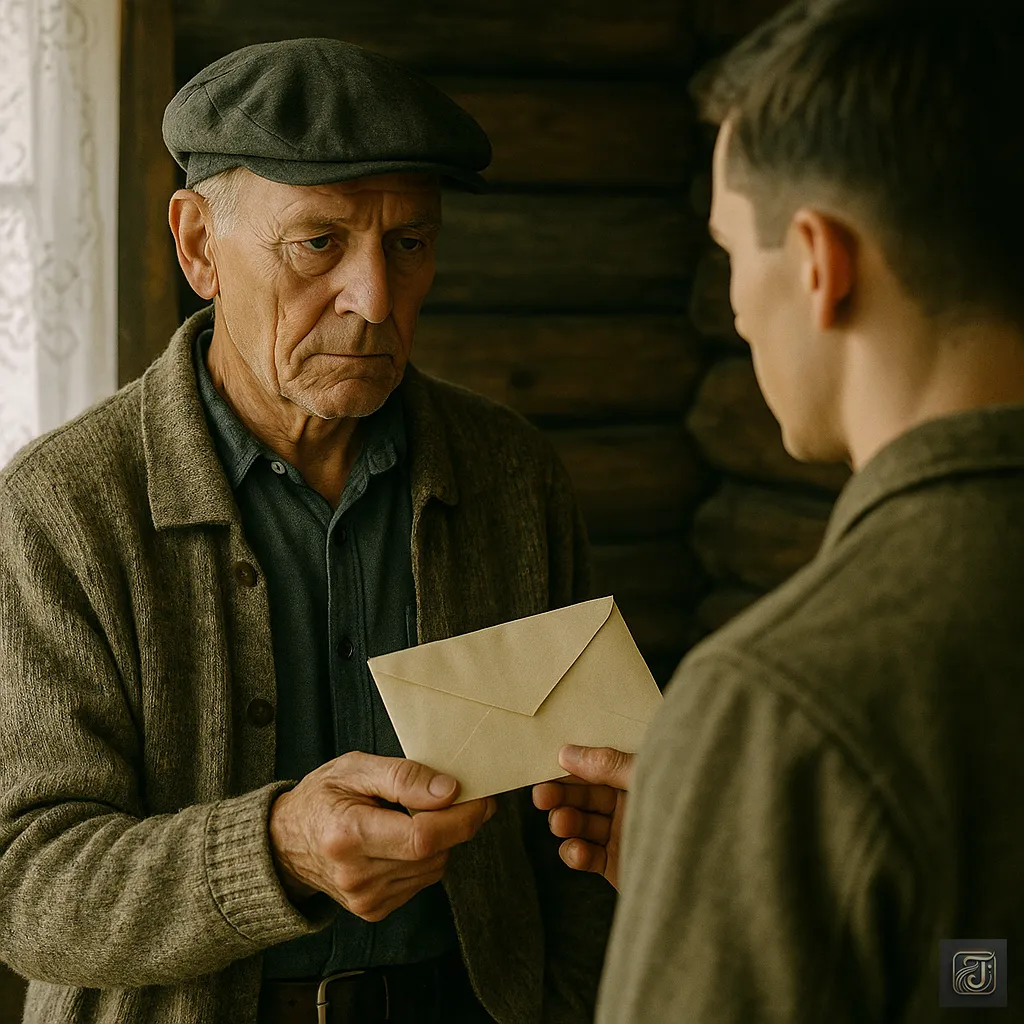
His father silently handed him the envelope without opening it.
Simo took it, glanced at it, and immediately tucked it into his bag.
His mother asked.
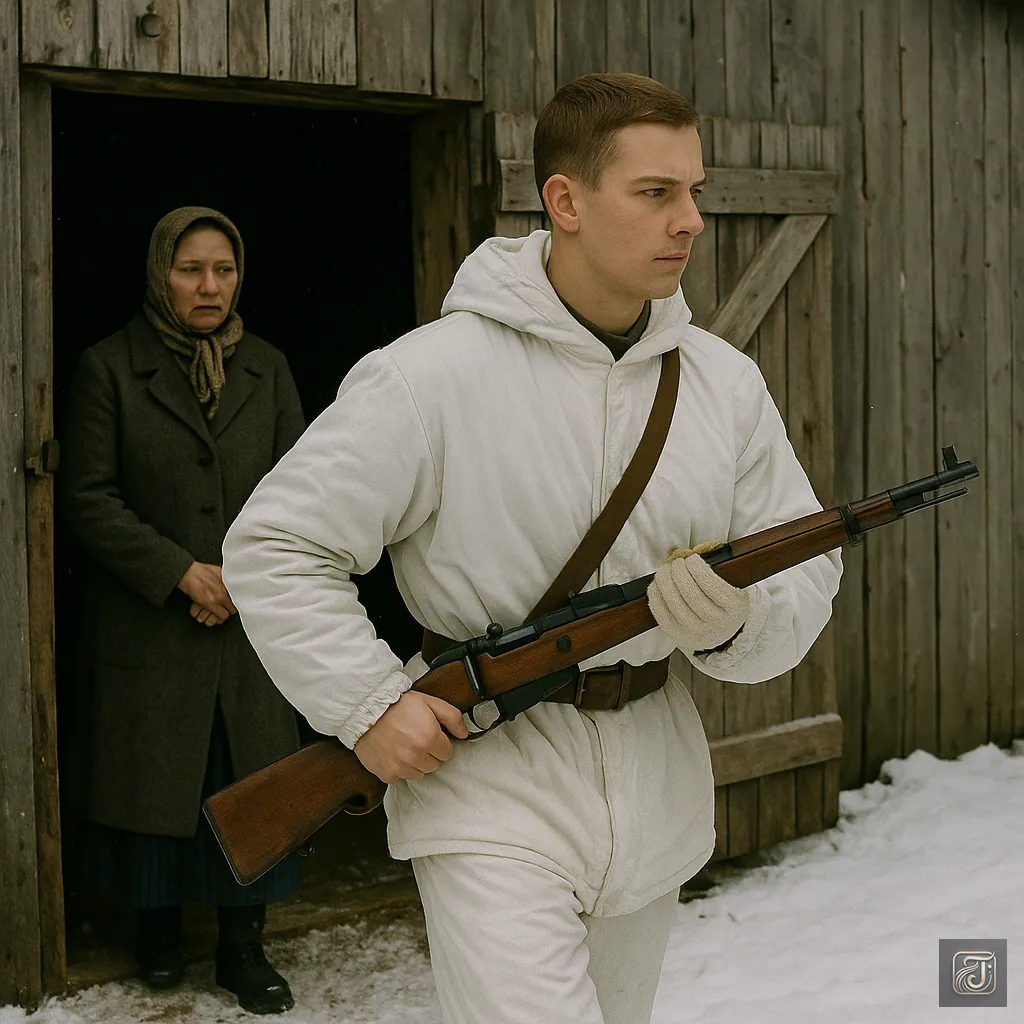
Mother:
“Are you going?”
Simo Häyhä:
“…Yeah.”
With that simple reply, he headed toward the barn.
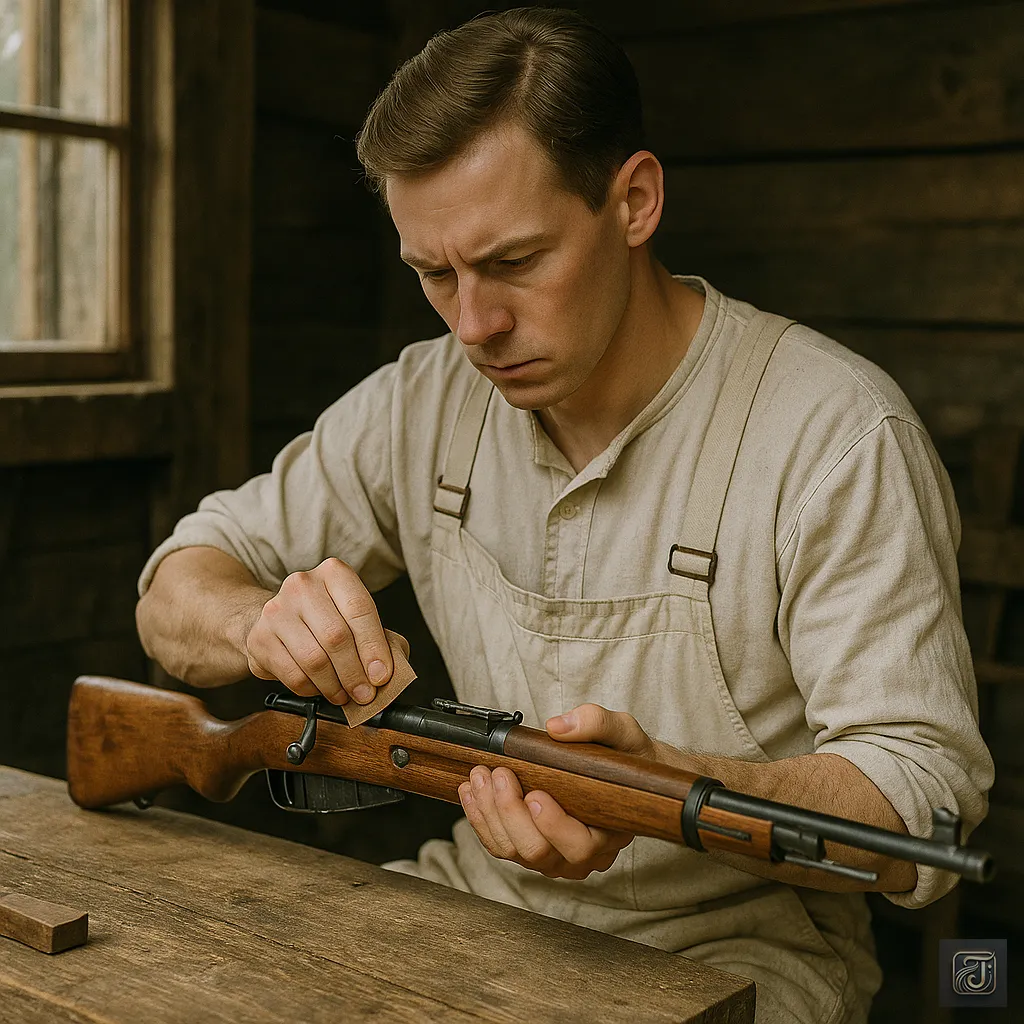
He began cleaning his old rifle.
He carefully disassembled it, polished each part, and gently sanded the wooden stock.
Watching him, his father murmured softly.
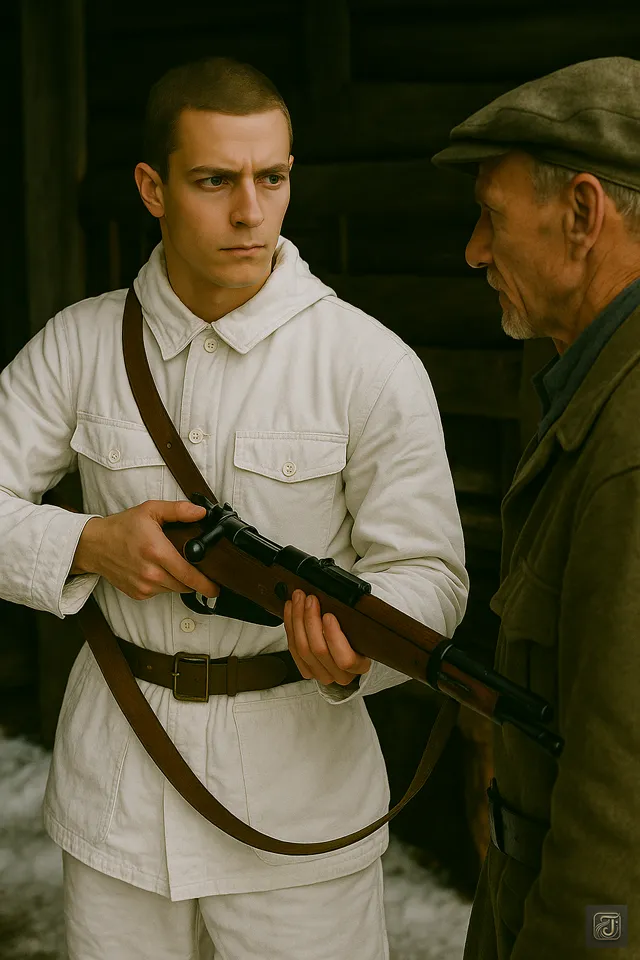
Father:
“It’s not the same as the forest.”
“The enemy isn’t a beast.”
“If you shoot, they’ll shoot back.”
Simo Häyhä:
“…Even so, I’ll take them down with a single shot.”
“I won’t let them suffer.”
On the morning of his departure, the village was still dark.
His breath hung in the air, white and misty, as clouds hung low in the sky.
Jonas, the neighbor, called out to him.
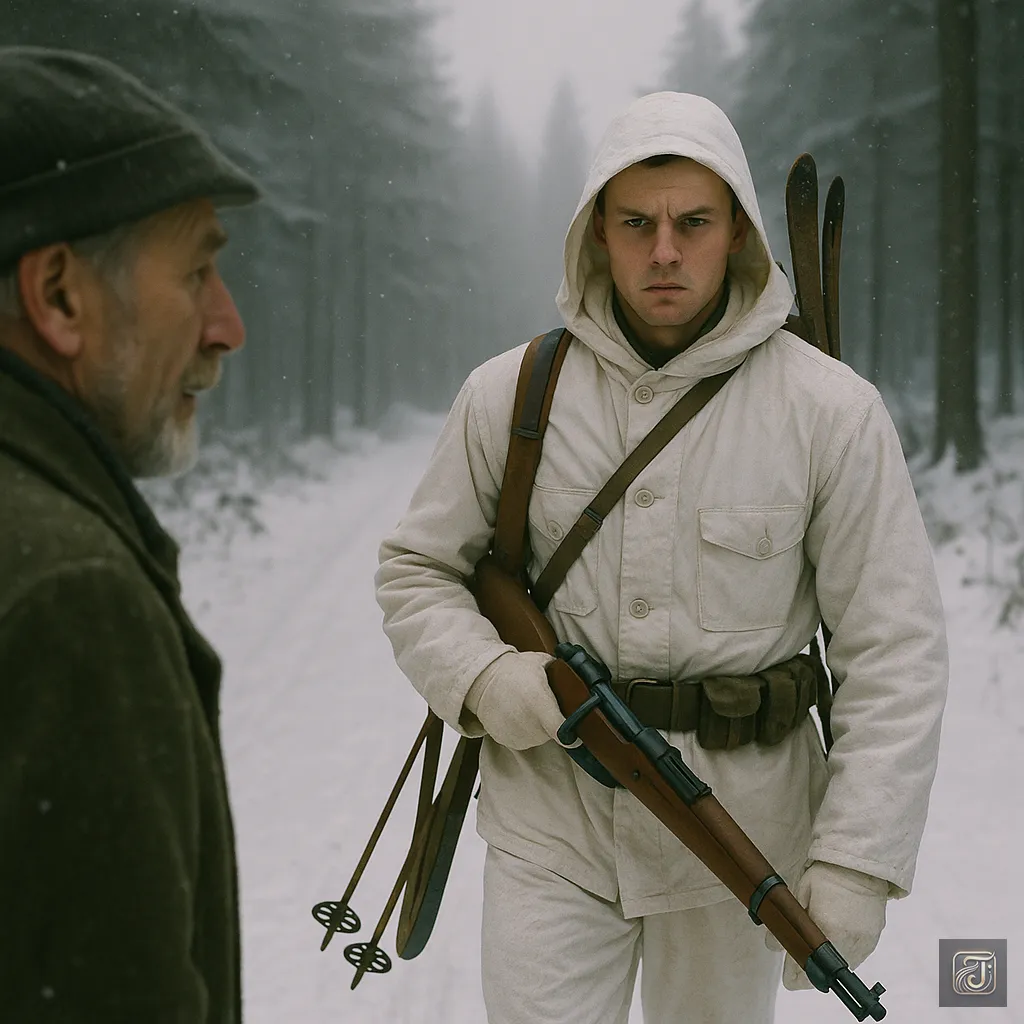
Jonas:
“Simo, aren’t you afraid?”
Simo Häyhä:
“Of course I’m afraid…”
“But if I don’t go, I feel like I’ll lose something important.”
His belongings were few.
A rifle, ammunition, skis, and a small notebook with nothing written in it.
On the way to the station, Jonas asked.
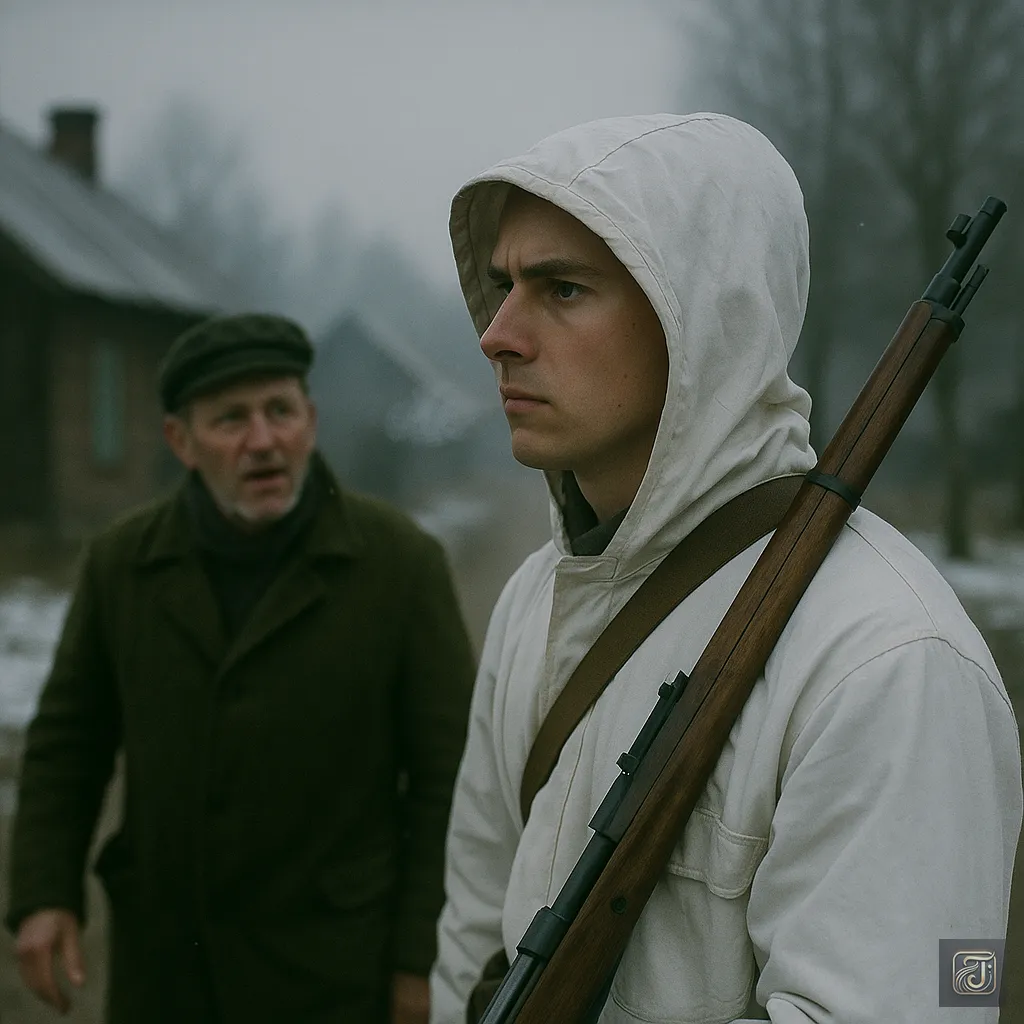
Jonas:
“Make sure you come back,”
Simo nodded, but didn’t look back.
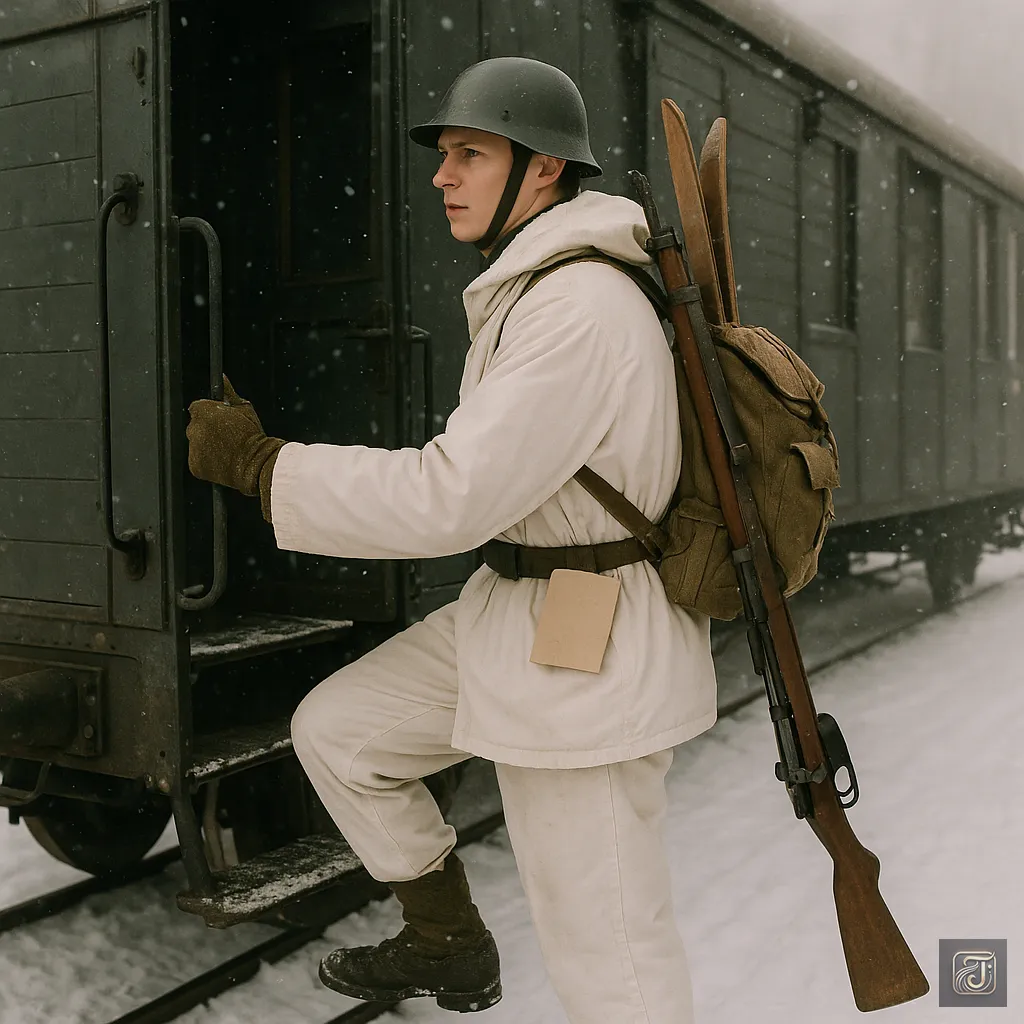
He boarded the train.
The whistle blew.
The snow fell silently.
Chapter 5: The Awakening of the White Death
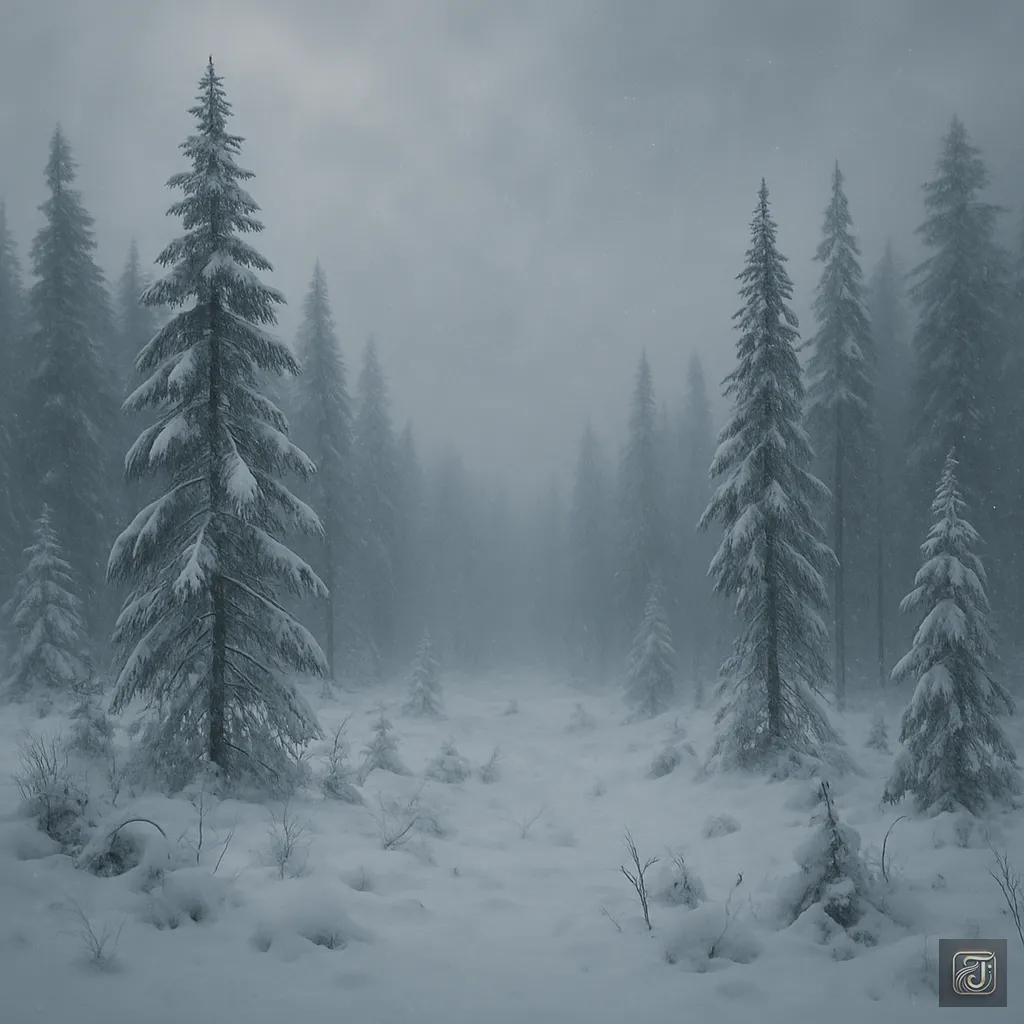
The forest of Räty was quiet.
The snow had swallowed every sound.
The sky was overcast, and the temperature had fallen below minus 40 degrees Celsius.
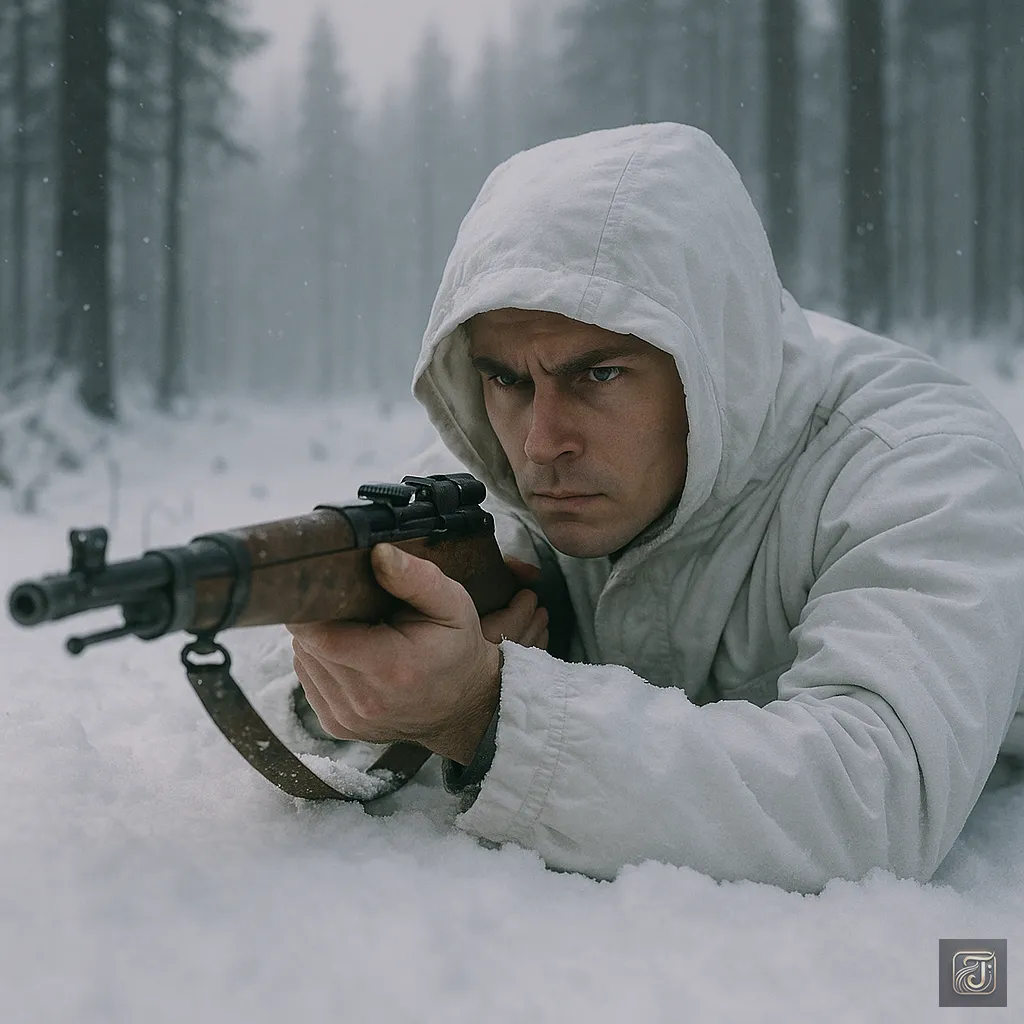
Simo lay prone in the snow, holding his breath.
Dressed in a pure white snow suit that blended seamlessly with the snow, enhancing his camouflage.
In his right hand, his trusted Mosin-Nagant M28-30.
No scope.
He relied on his eyes. He read the presence of his target through instinct.
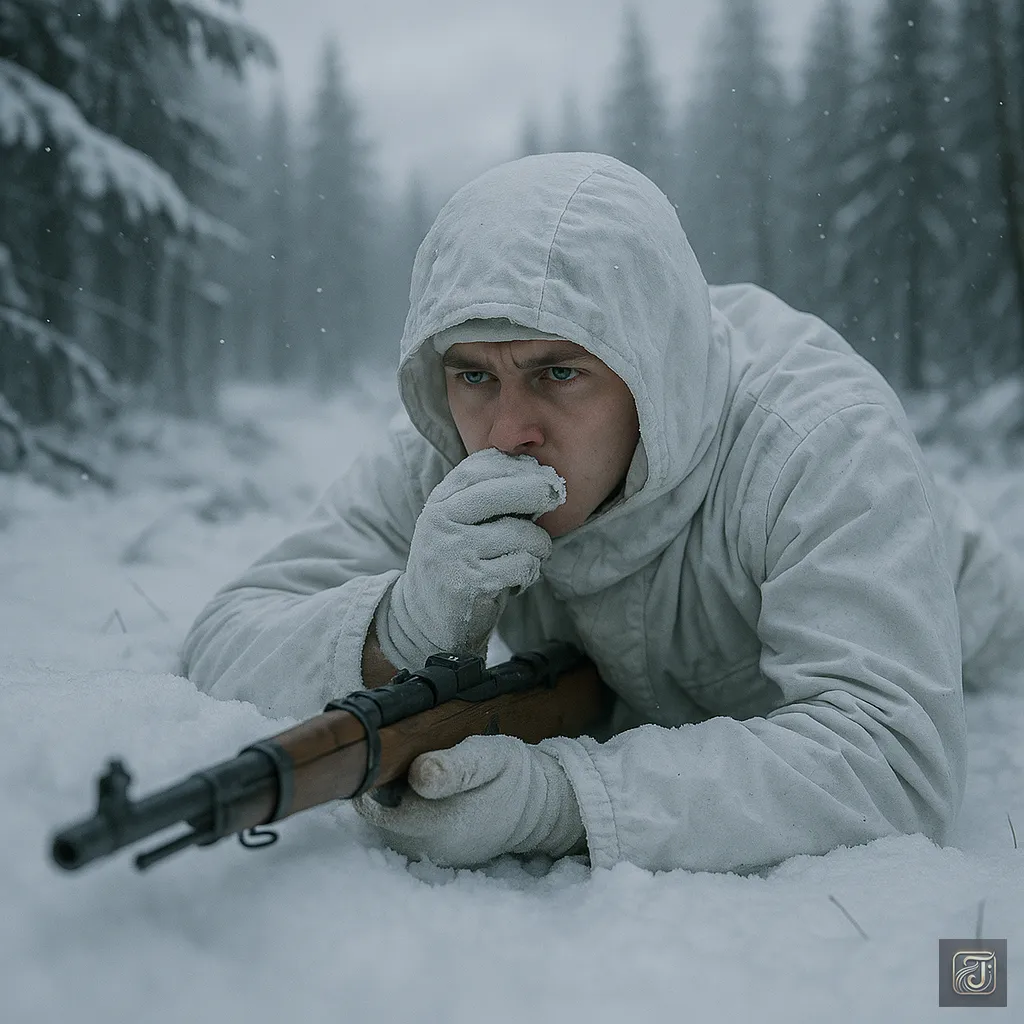
To prevent his white breath from giving away his position in the extreme cold, he placed snow in his mouth, silencing his presence.
He would do anything to remain undetected.
“Never reveal your position.”
That was the essence of being a sniper.
In the distance, a group of Soviet soldiers appeared.
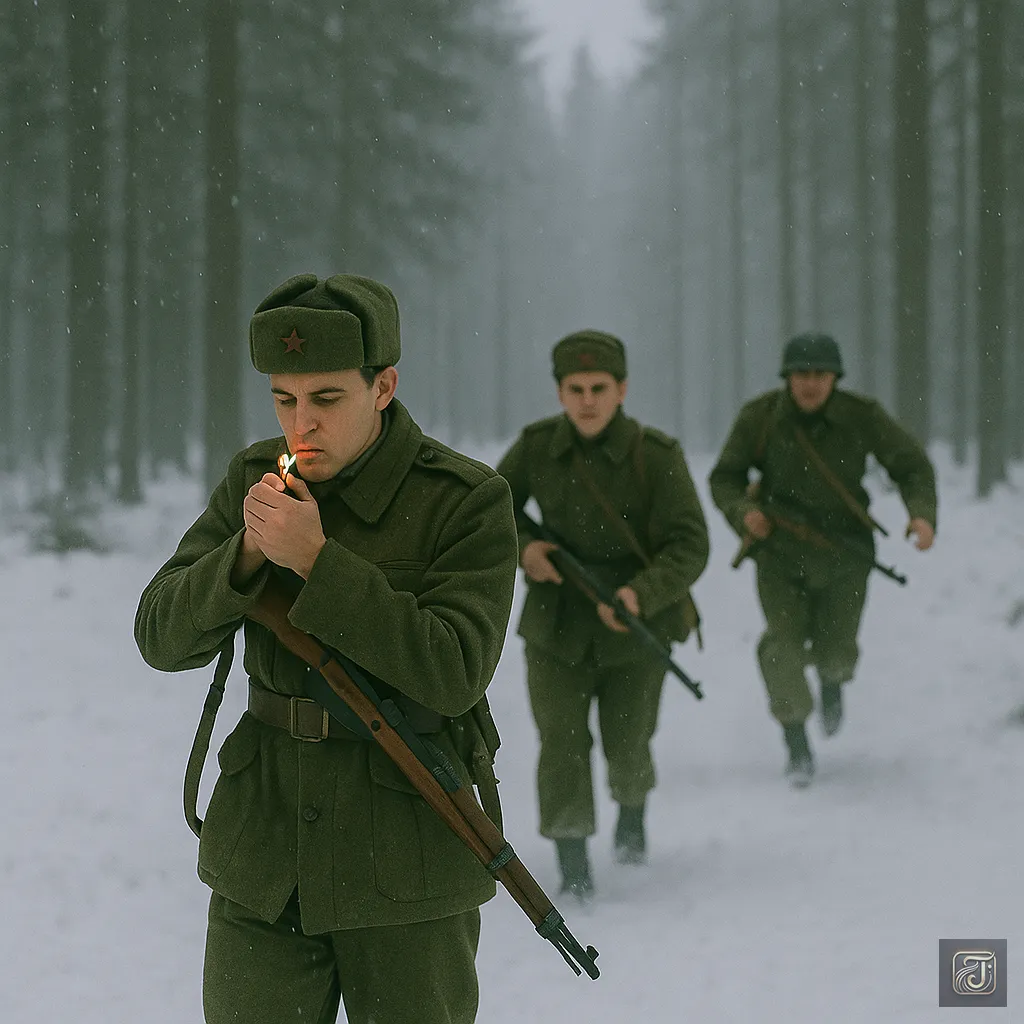
Three of them.
The lead soldier lit a cigarette, laughing.
Behind him, one of his comrades kicked up some snow.
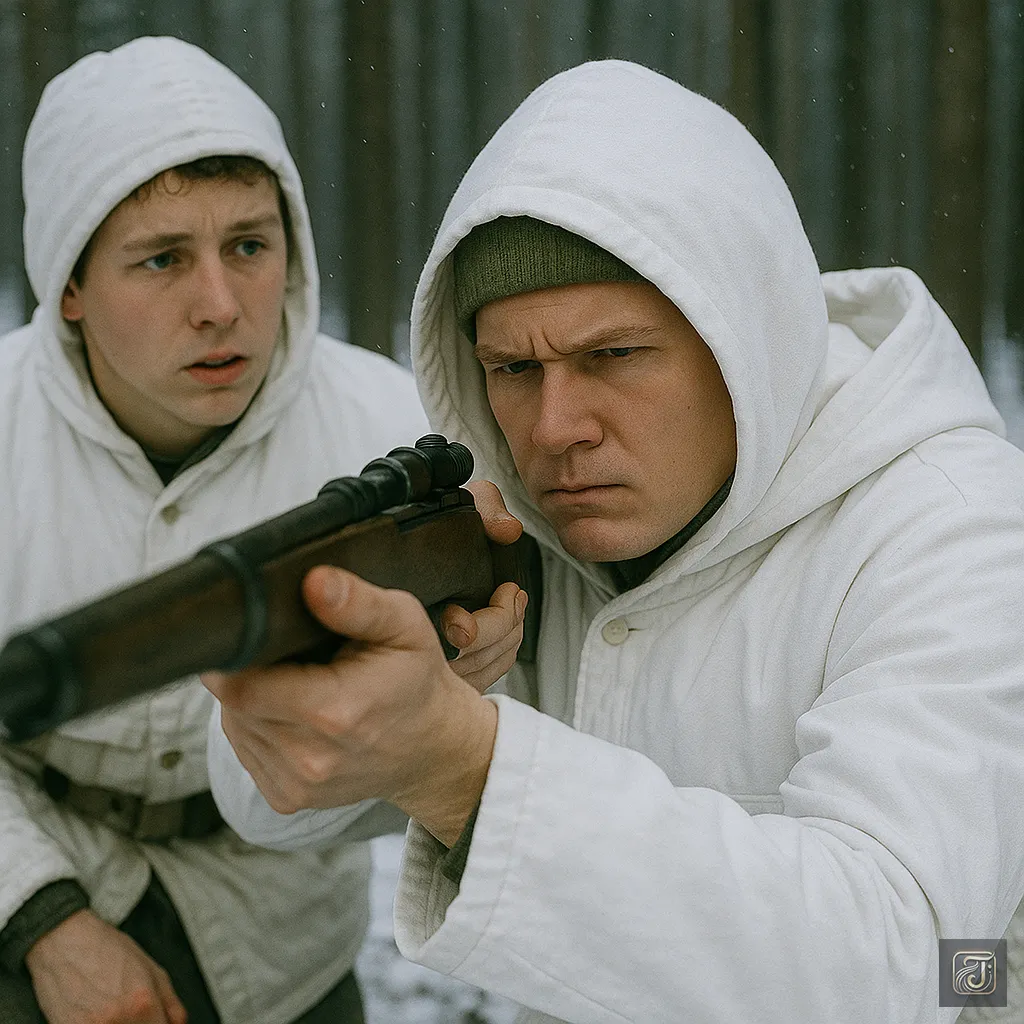
squadmates:
“Still young…”
One of the squadmates murmured. But Simo didn’t respond.
He had rules.
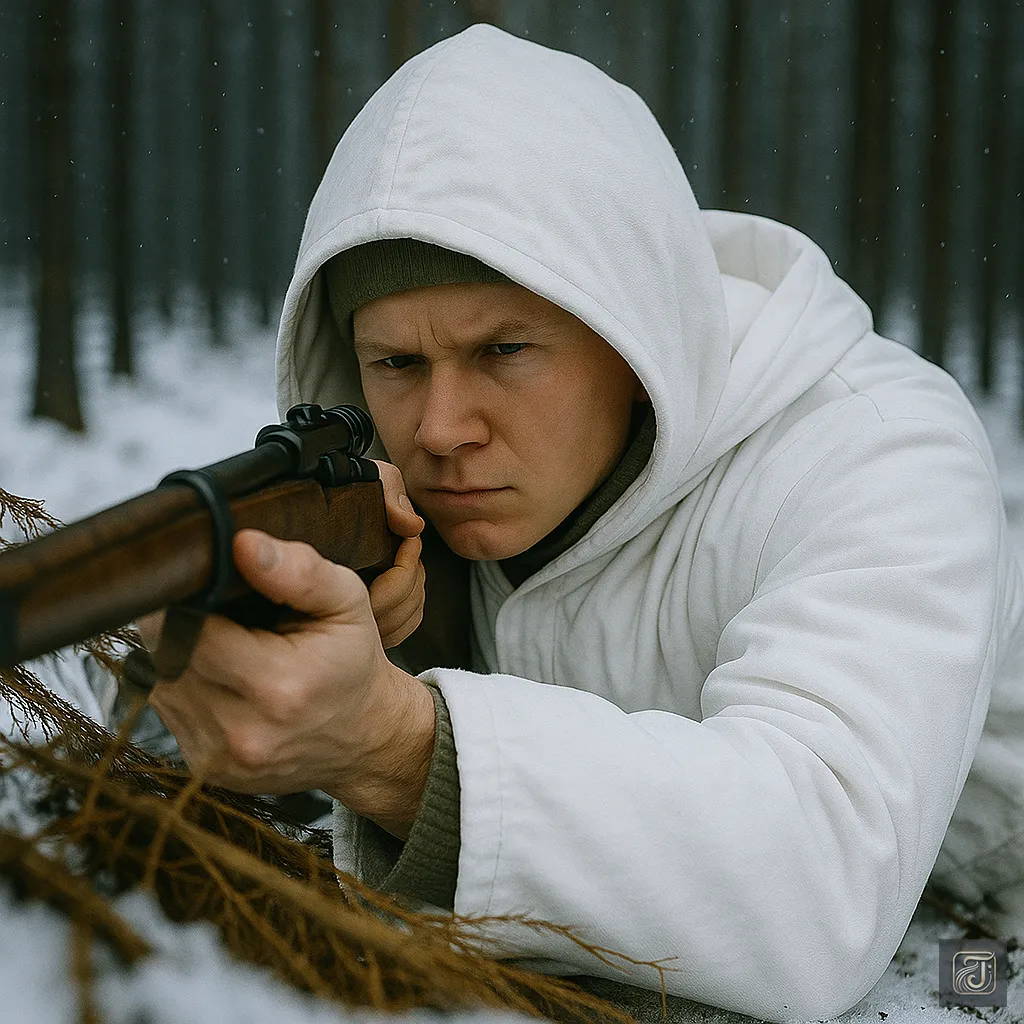
“Take them down with one shot.”
“Don’t reveal your position.”
“Stay low.”
The wind was from right to left.
Humidity, body temperature, breathing—everything was aligned.
He fired.
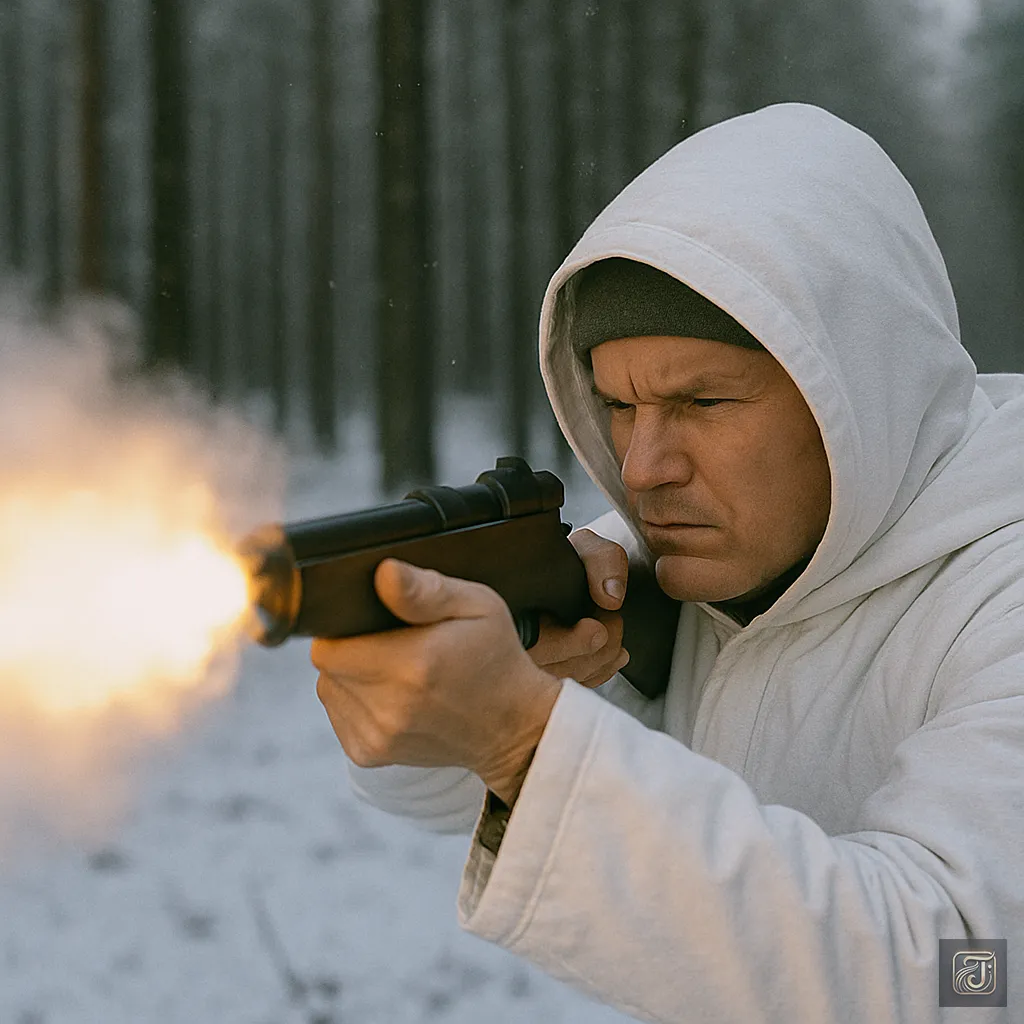
“Bang!”
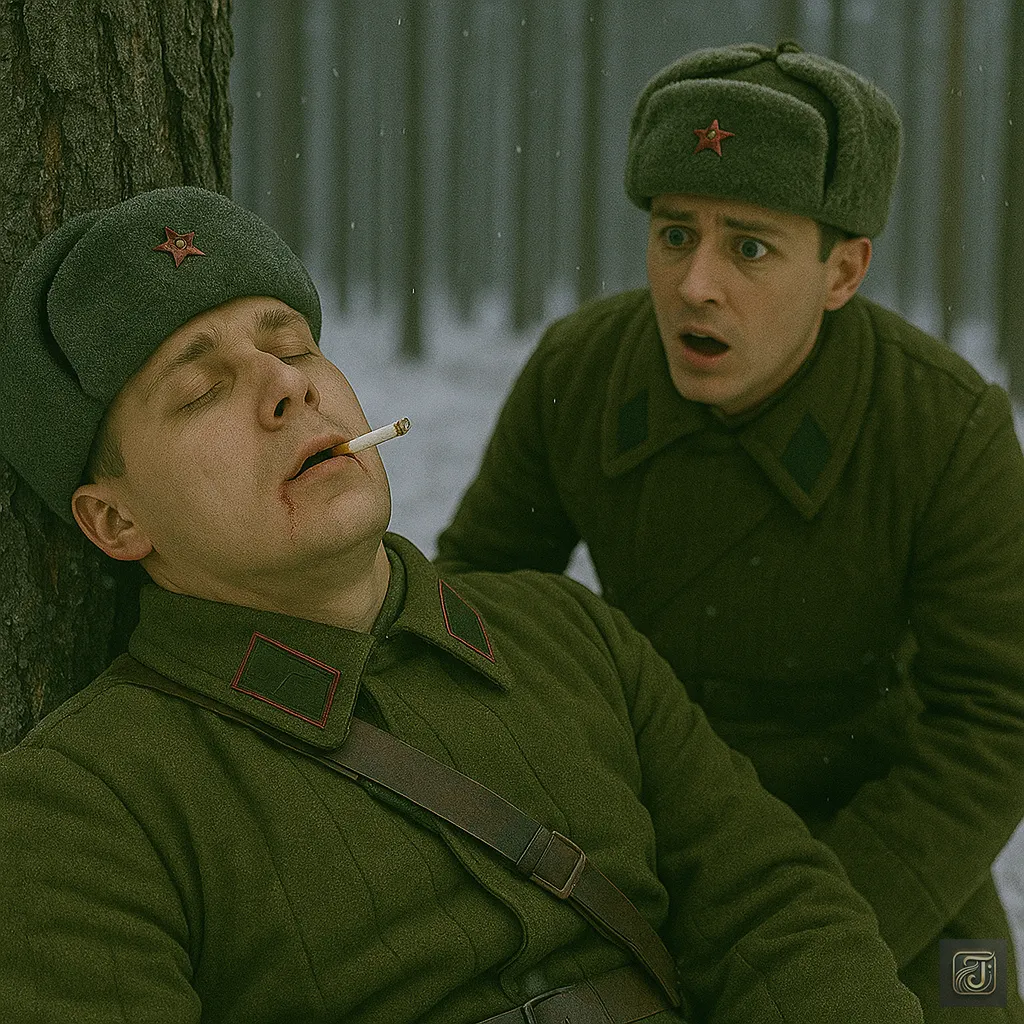
The Soviet soldier with the cigarette in his mouth fell without a word.
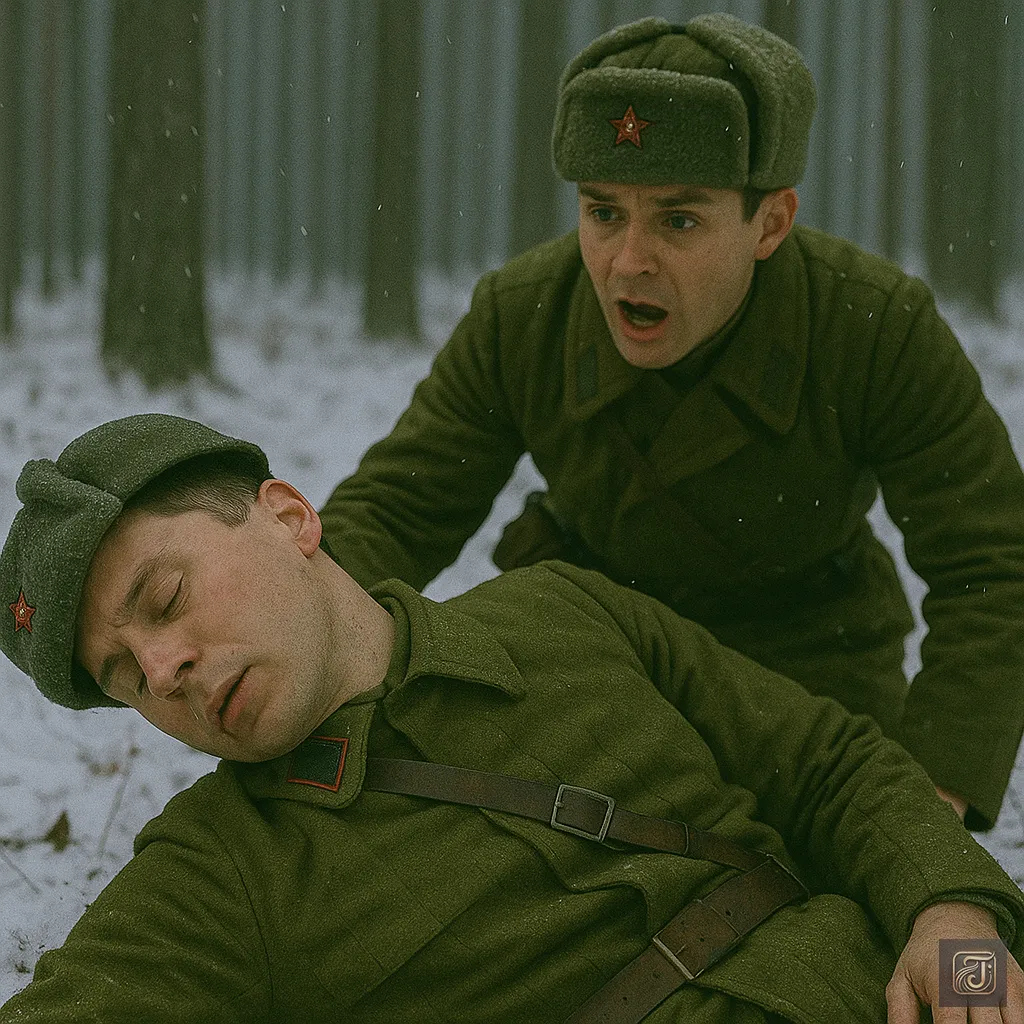
Before his comrade could shout, the second shot rang out.

“Bang!”
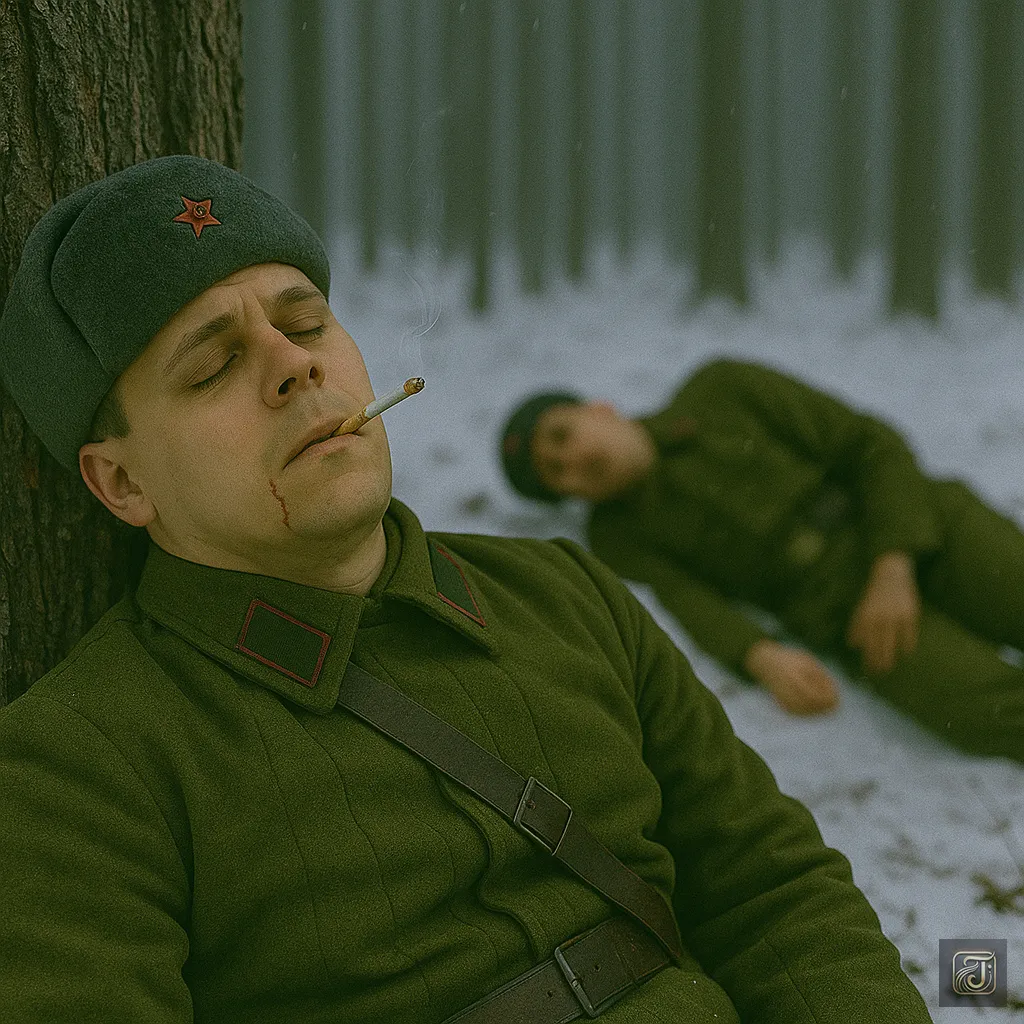
The helmet of the next soldier was blown off.
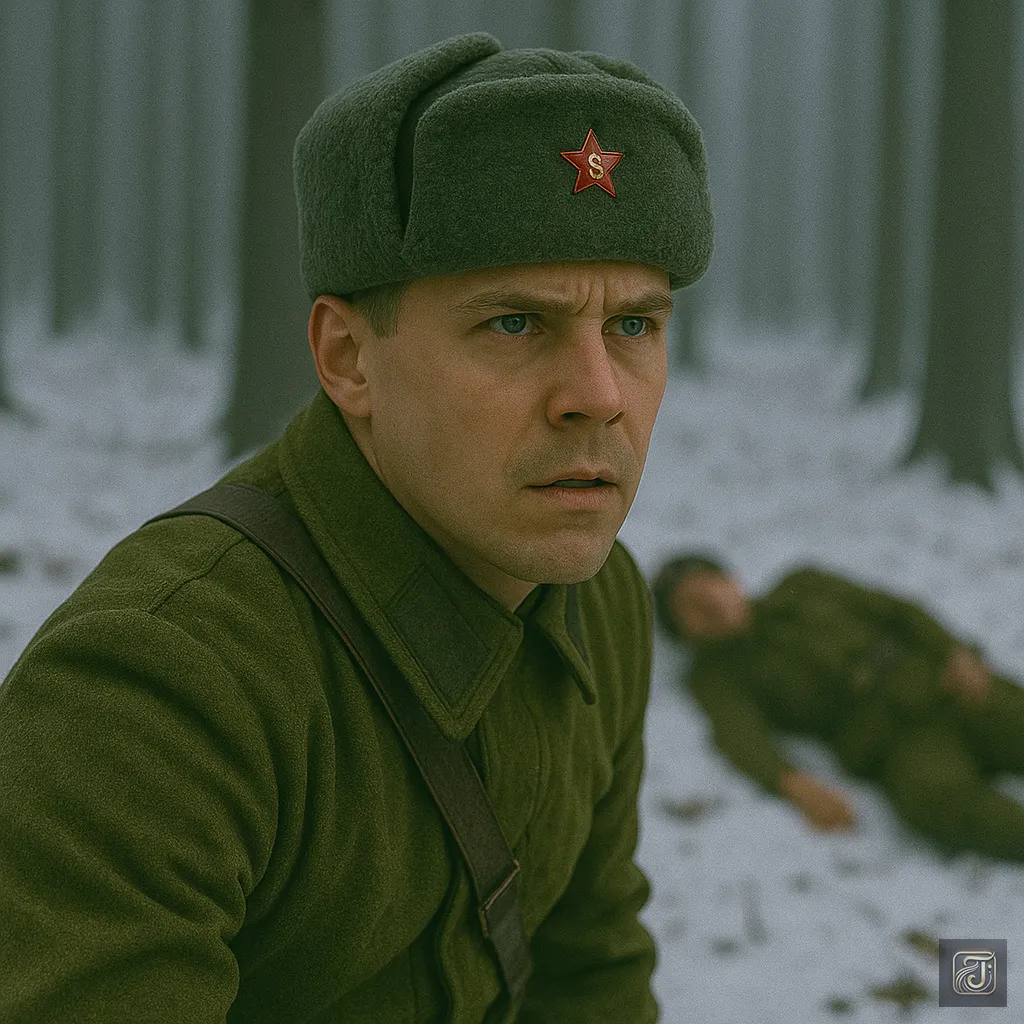
The third soldier tried to run, but Simo read his movement and fired the third shot.

“Bang!”
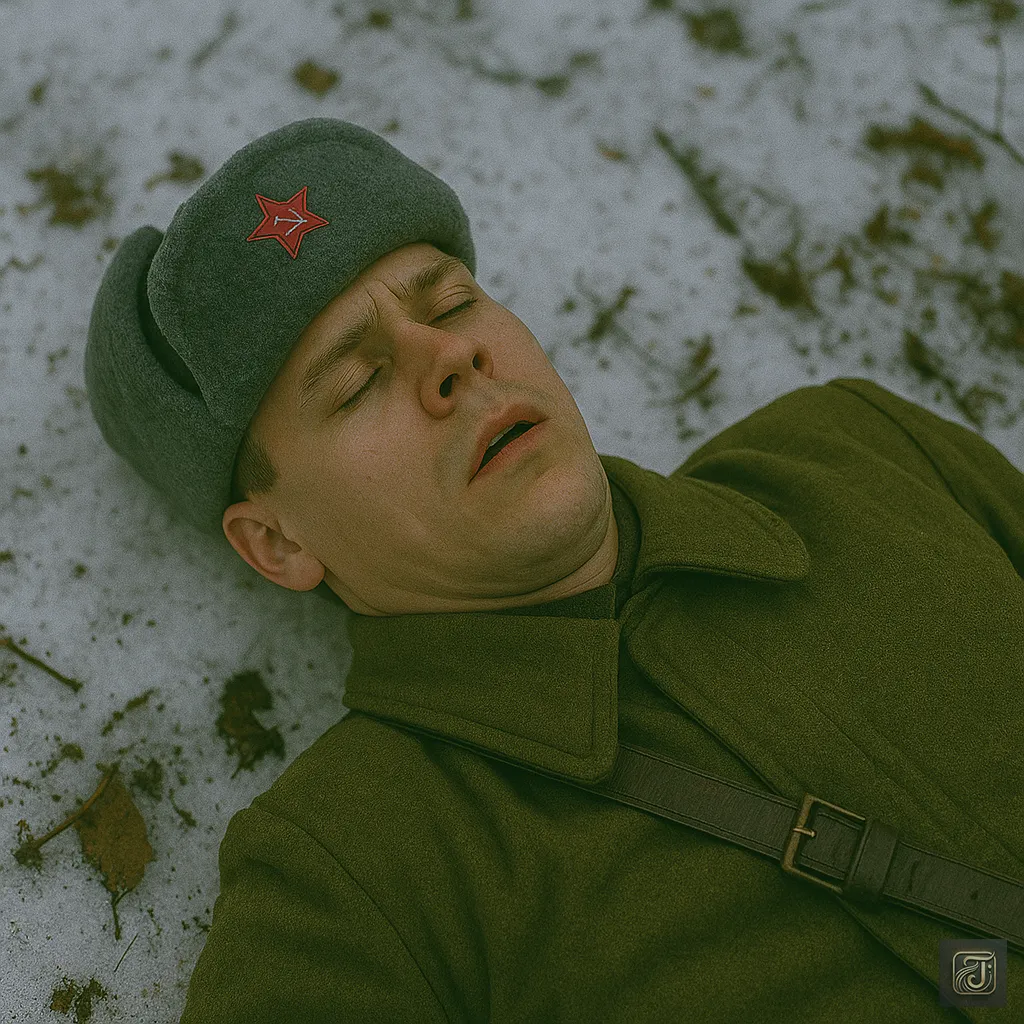
It was quiet.
Everything happened in the span of five seconds.
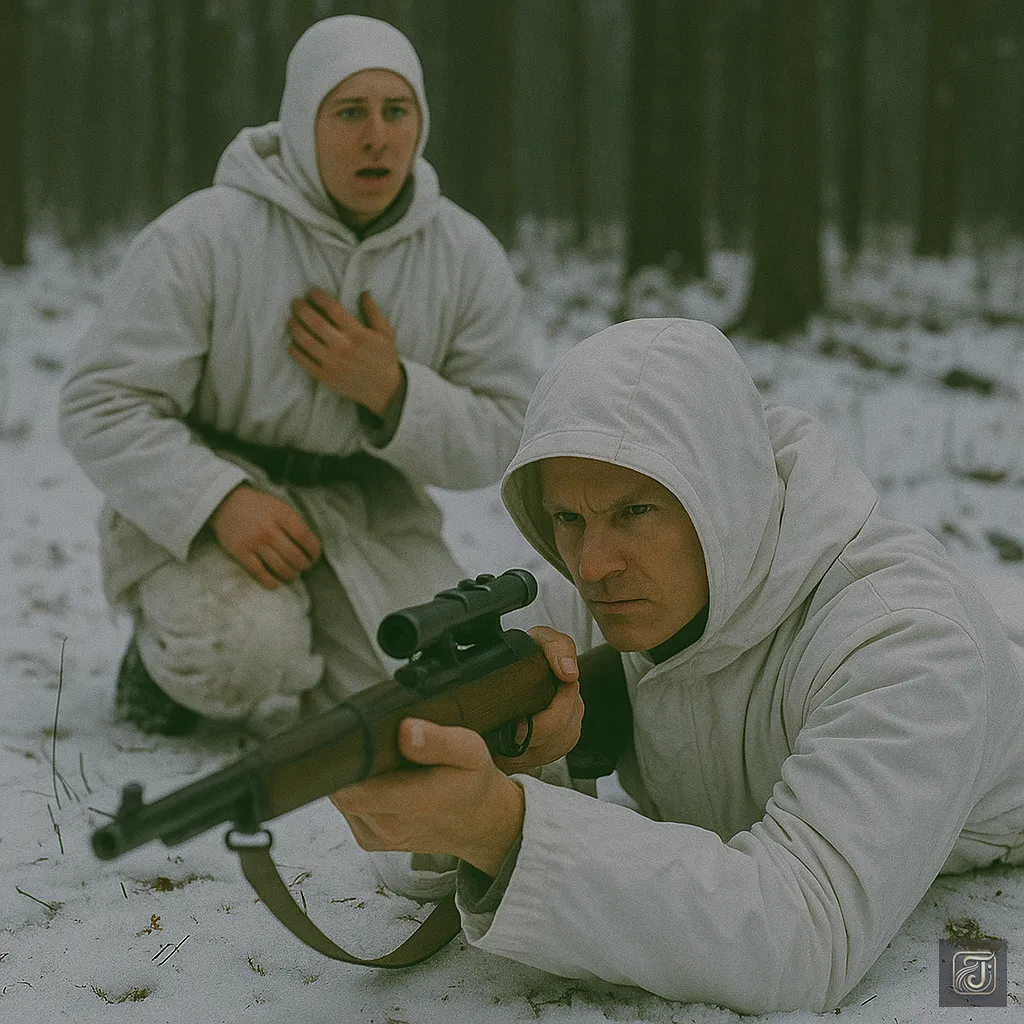
Soldier:
“…Did you see that?”
“The shot just now?”
“Where did it come from? …Wait, was that Simo?”
The soldier next to him gasped, trembling.
By the time his comrades noticed, Simo had already reloaded.
Once again, he aimed the scopeless rifle at the snowy field.
At night, by the campfire, someone asked.
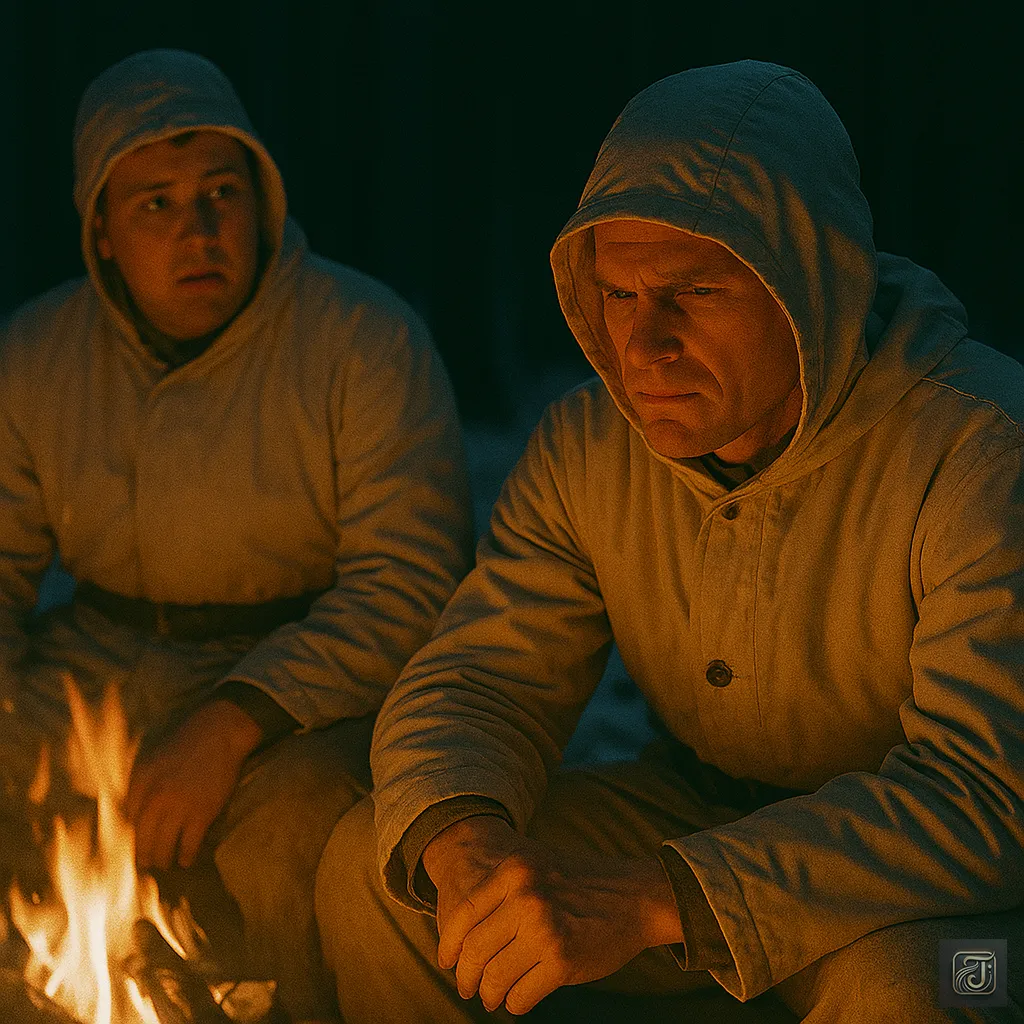
Soldier:
“Hey, Simo, how many did you take down today?”
Simo Häyhä:
“Three.”
Soldier:
“…Is that all?”
Simo Häyhä:
“That’s enough.”
“For a sniper, what’s important isn’t killing many.”
“It’s killing without being seen.”
And that night, he put on his skis and disappeared once again into the forest.
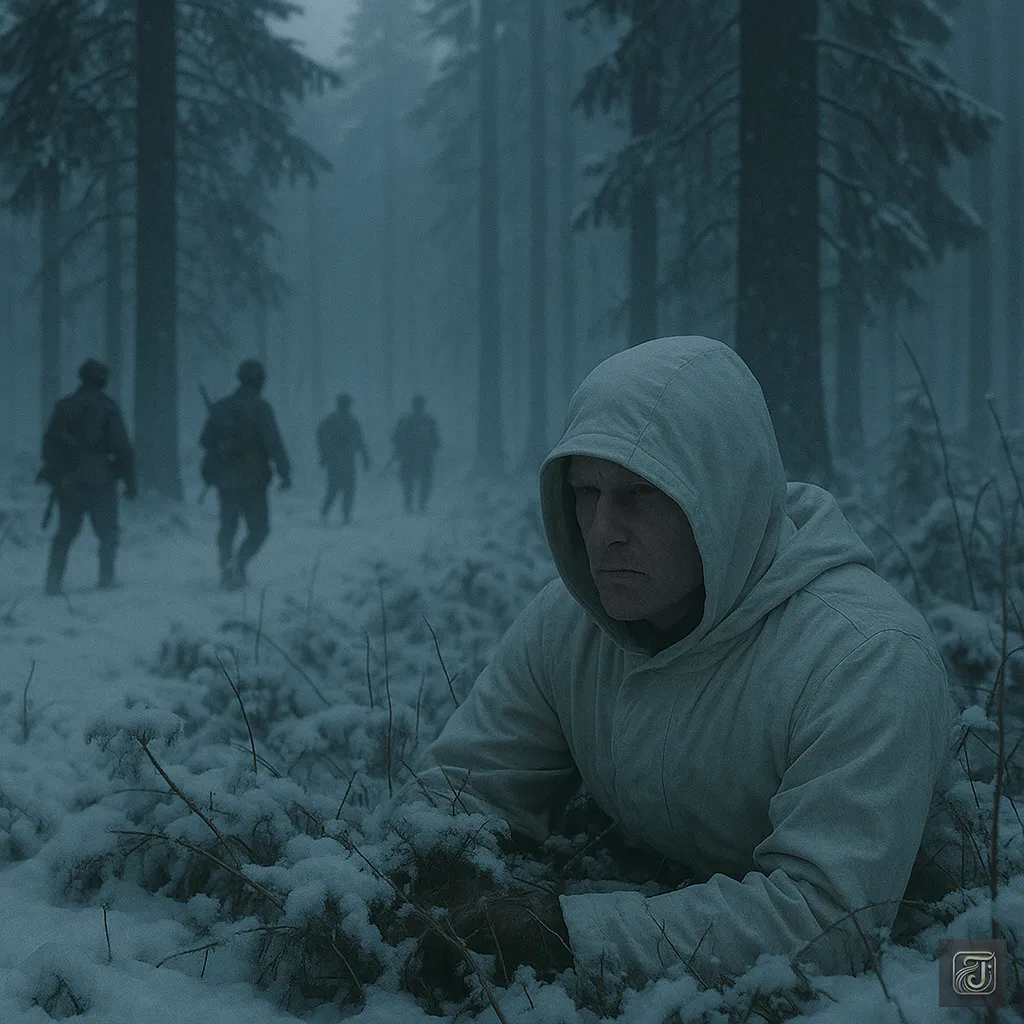
Every day, he entered the forest, taking down 10, 15 enemy soldiers with precise shots, alone.
He shot without being noticed, and his victims died without realizing they had been shot.
The death god who appeared in the white forest.
Soon, his name would echo across the entire front line.

The next day, the enemy bodies were discovered in the snow.
Each one had been struck with a single bullet, perfectly aimed at the forehead or heart.
The precision and silence of the shots spread a single word among the Soviet soldiers.
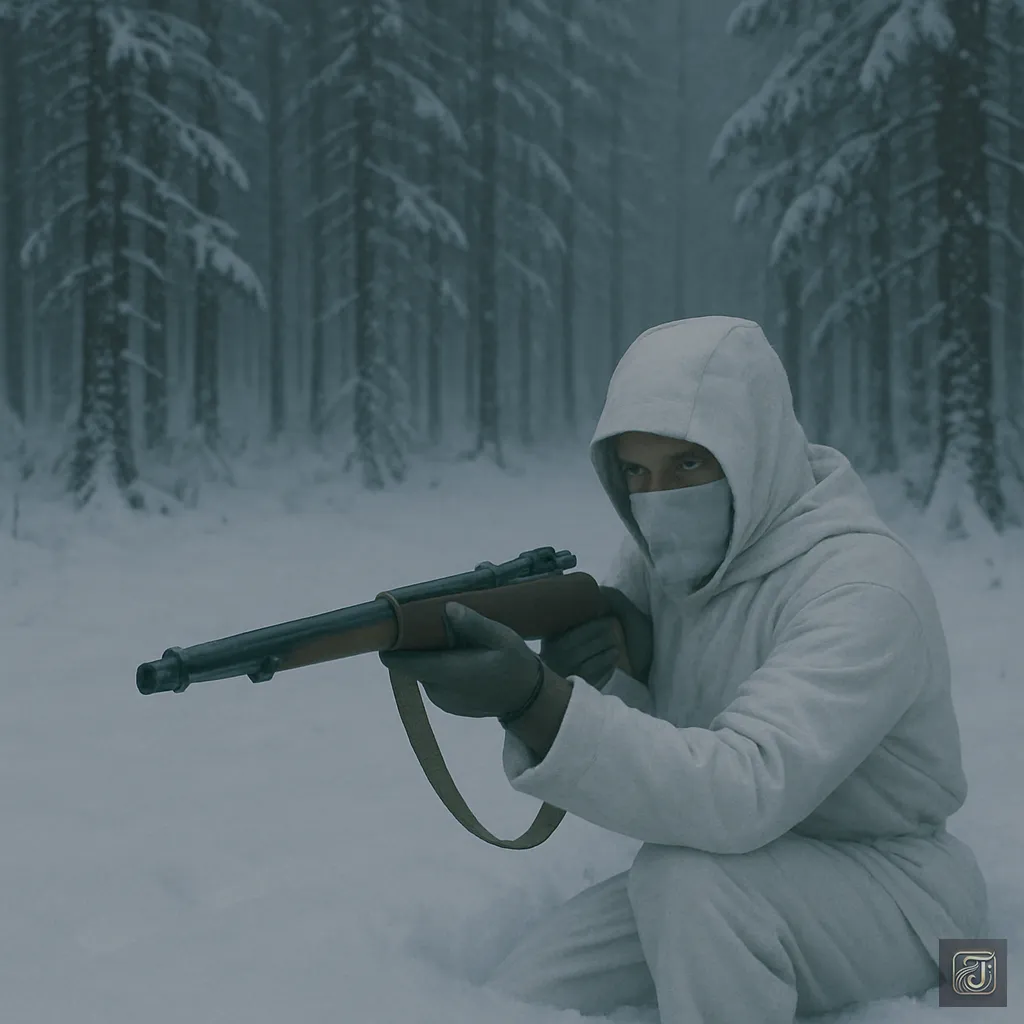
“Белая смерть” — “The White Death”
Chapter 6: The Night They Saw The White Death
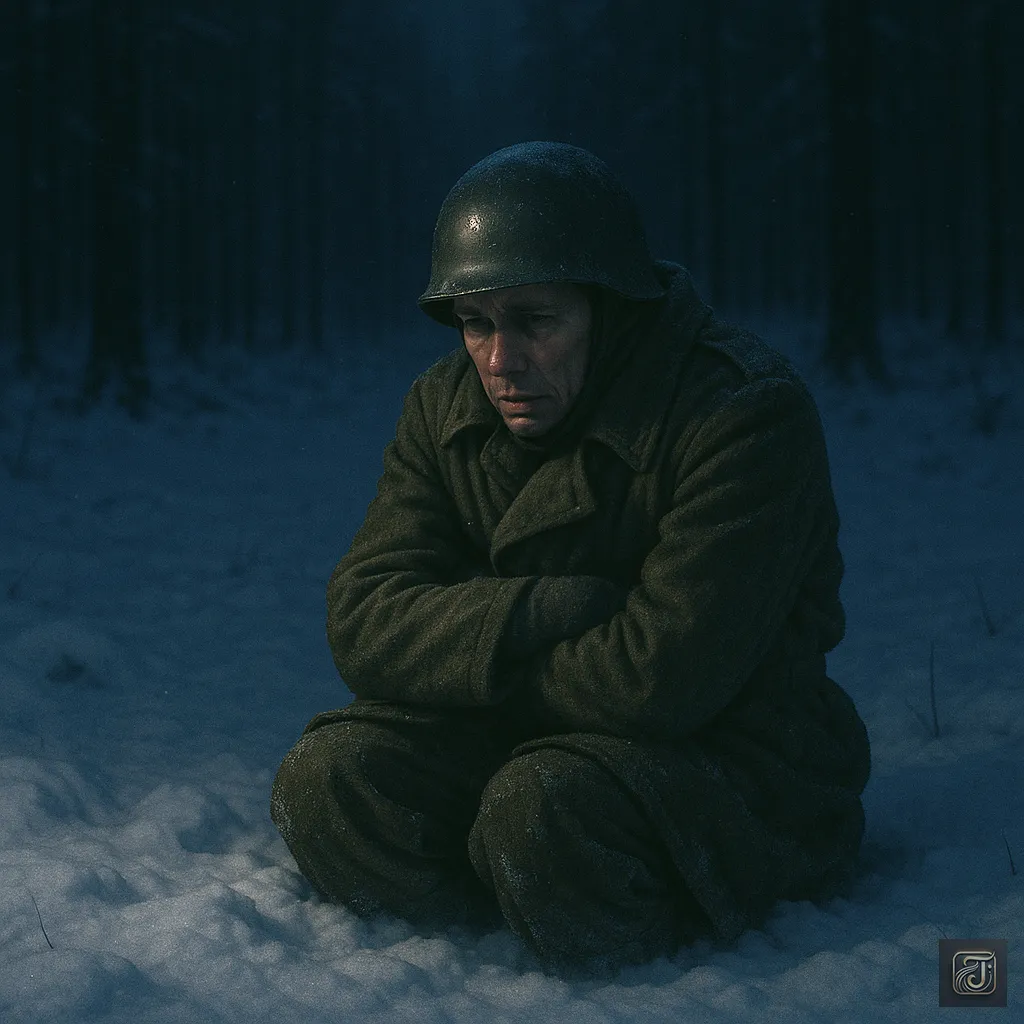
That night, they couldn’t even light a fire.

Three of their comrades had been taken down during the day.
By the time they realized it, it was too late.
They were already on the ground, just like the work of a death god.
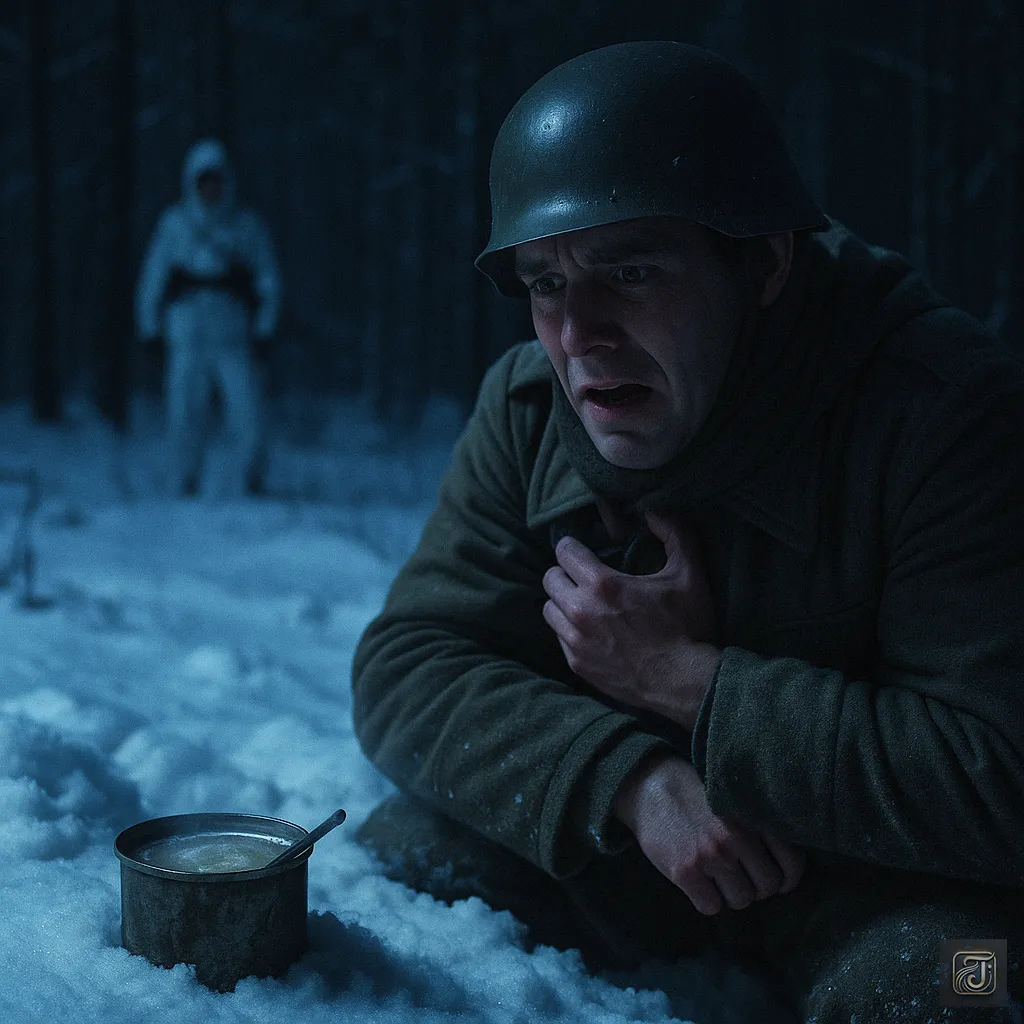
I was just trembling in the snow.
Even though the soup in front of me was cold enough to freeze, sweat was beading on my palms.
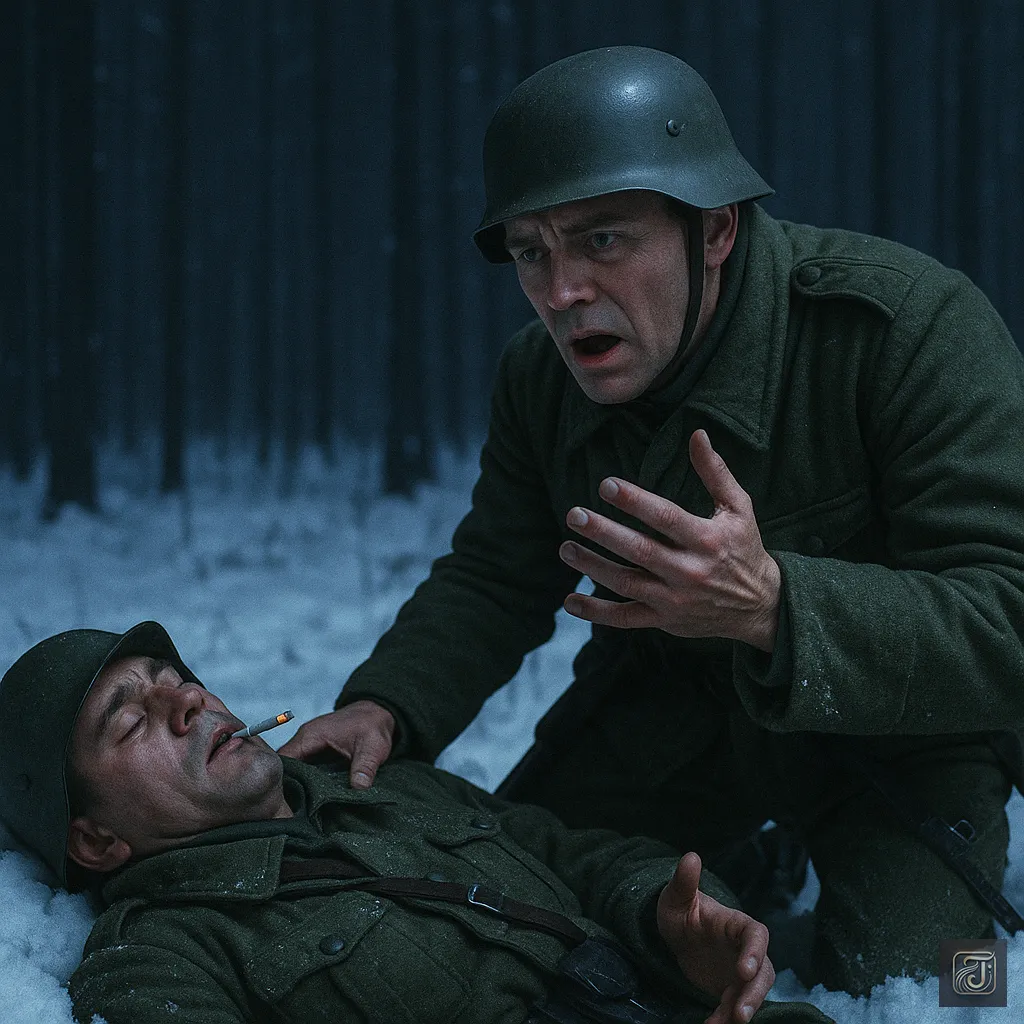
Soviet soldier:
“Who did this…?”
One of the comrades who had called out suddenly fell, a gunshot ringing through the air.
The gunshot was definitely heard.
But the shooter remained unseen.
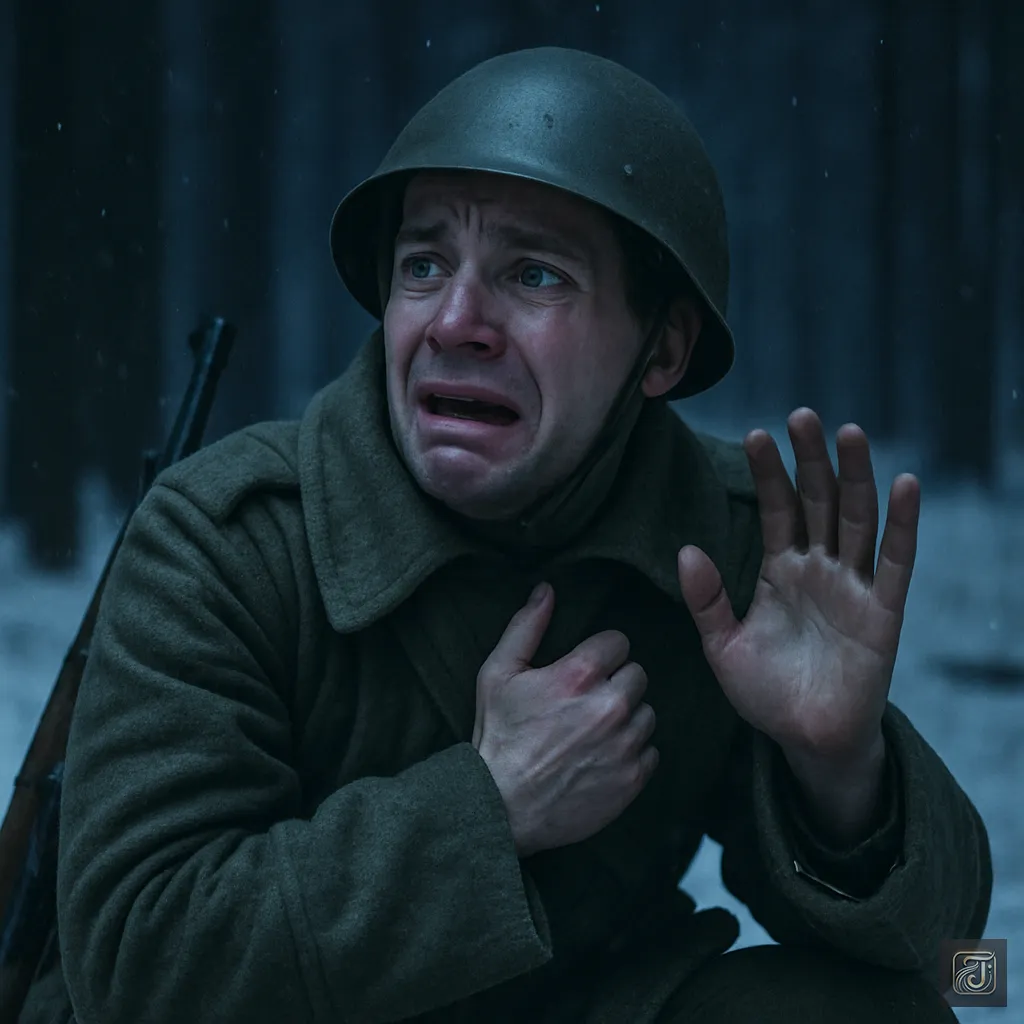
Soviet soldier:
“…Stop… please, don’t shoot…”
I didn’t even know who I was speaking to.
But there was one thing I knew for sure.
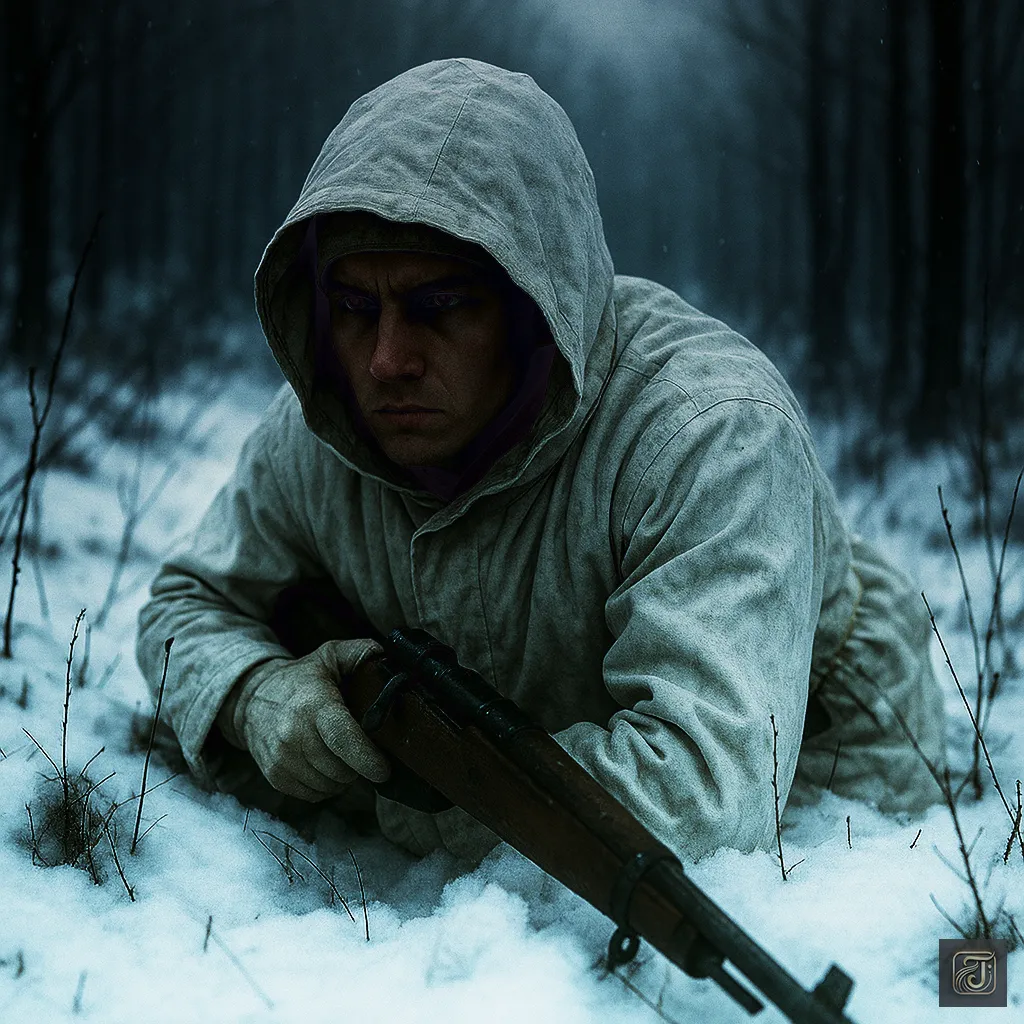
— The White Death was watching us.
The next morning, the military communication unit said this.
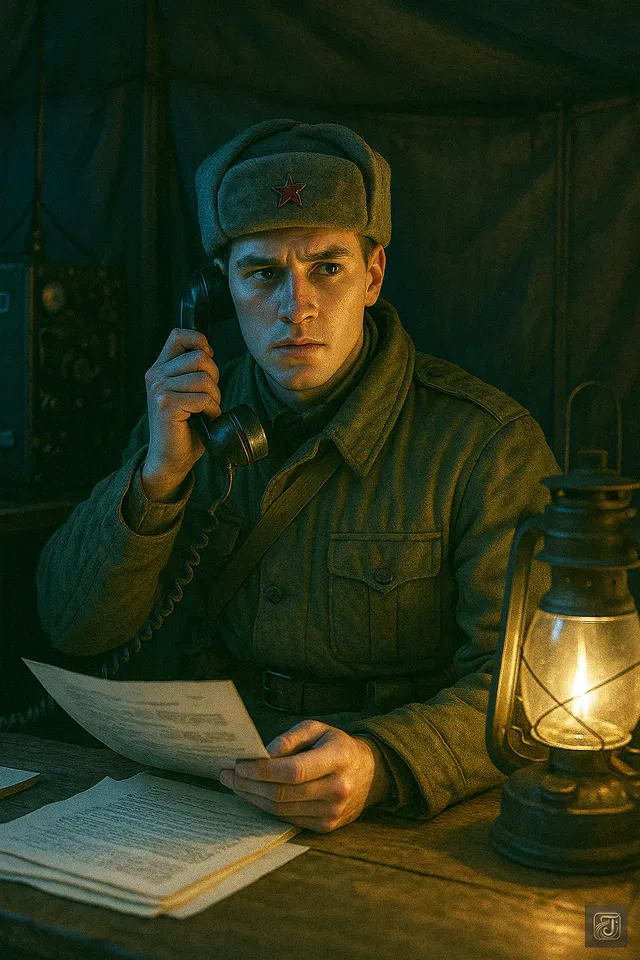
Soviet soldier:
“There’s a sniper among the enemy. “
“‘Белая смерть’ (The White Death).”
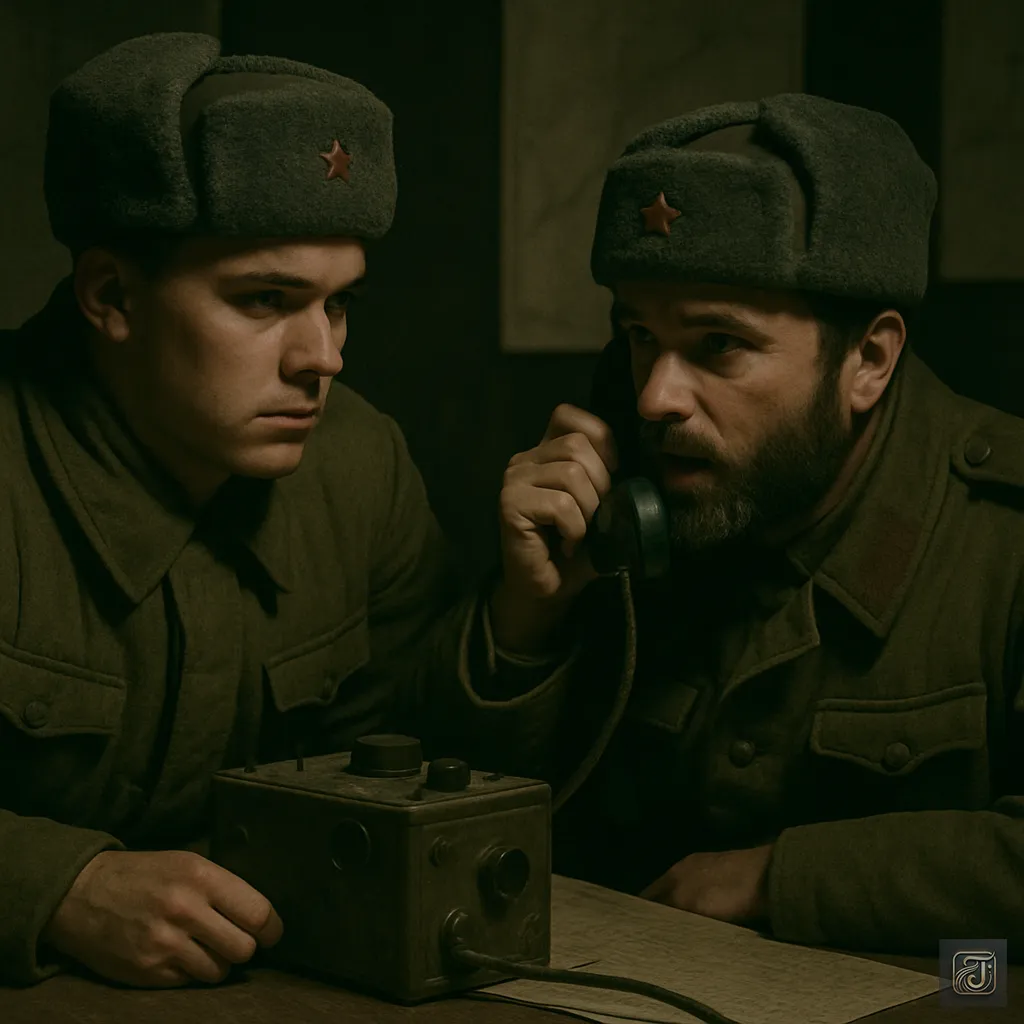
Soviet soldier1:
“‘Белая смерть'”
Soviet soldier2:
“It means ‘White Death.'”
“He blends into the snow, kills without showing himself.”
“They say if you lock eyes with him, you’re already dead.”
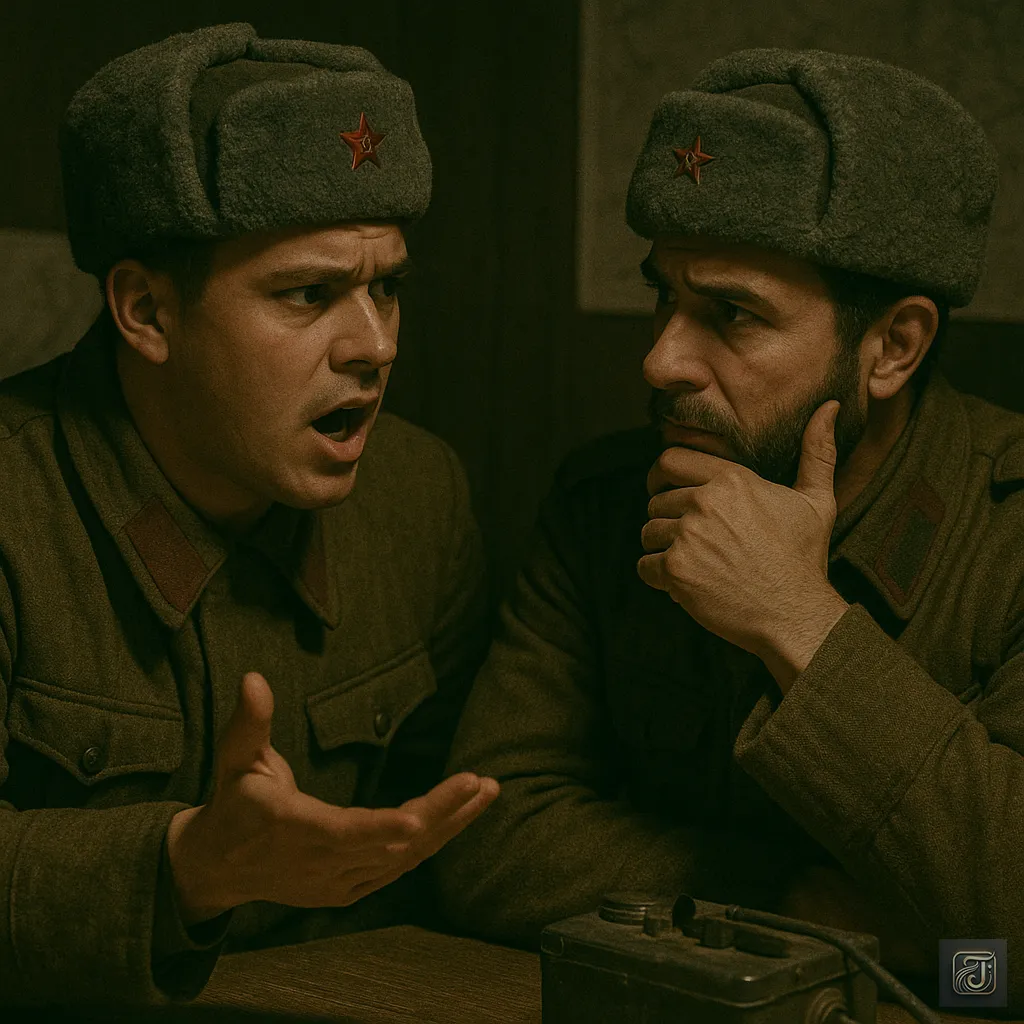
Soviet soldier1:
“A death god? There’s no such thing!”
Soviet soldier2:
“…Then what do you call the three men who were taken out this morning by superstition?”
From that day on, we couldn’t sleep with our backs turned to the forest.
More terrifying than
landmines, more frightening than grenades, was the “invisible shot.”
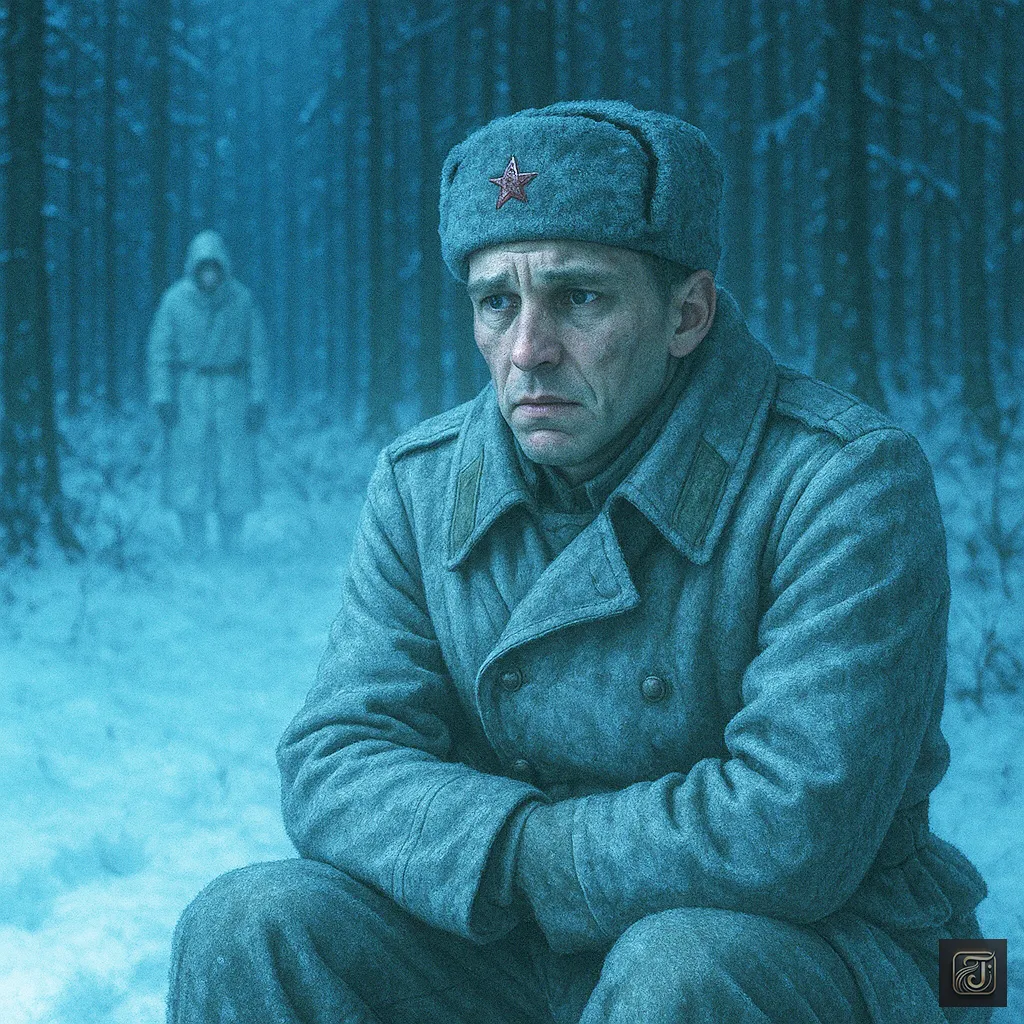
Soviet soldier:
“I ended up surviving.”
“But even now, when I listen closely, I feel like something is lurking in that snow…”
Chapter 7: Legends and Fear
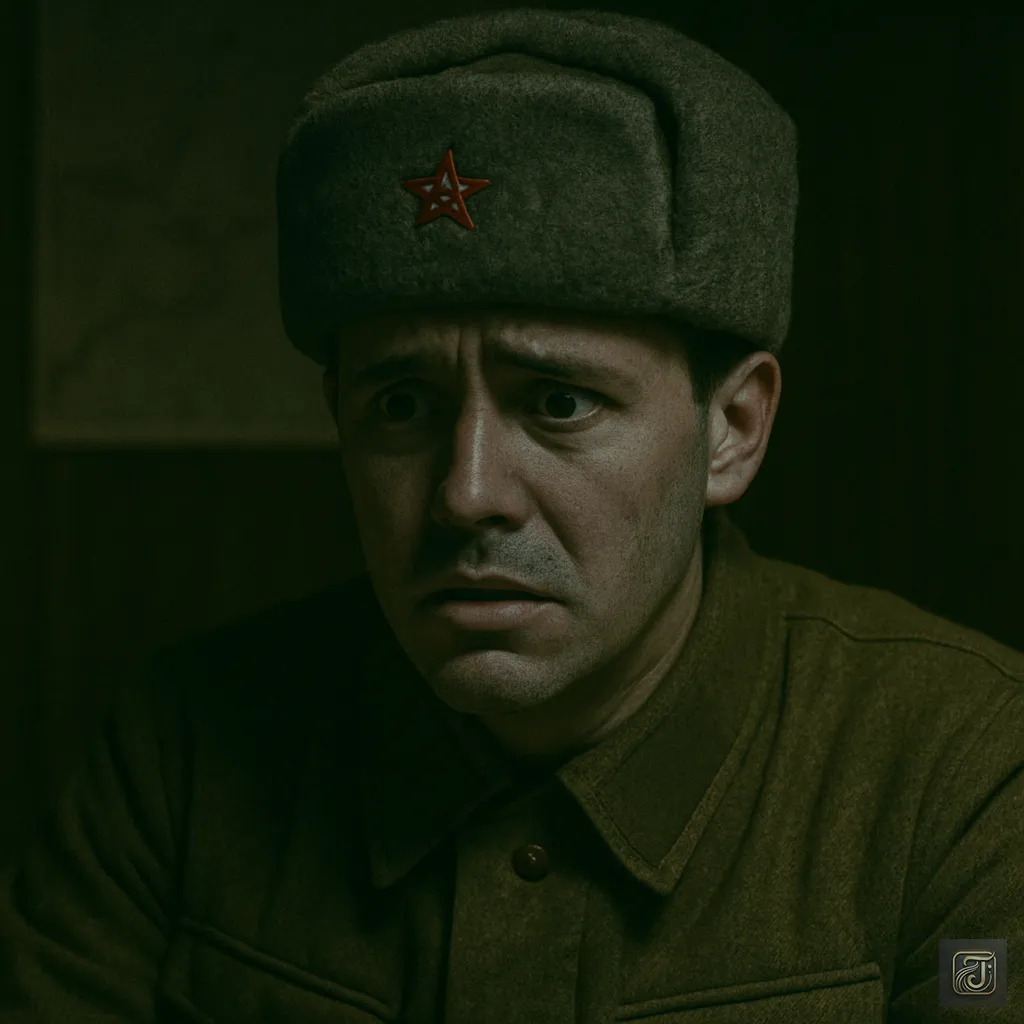
Soviet soldier:
“He doesn’t show himself.”
“Yet, someone always falls.”
The face of the Soviet soldier who muttered this was pale.
At the front line near Räty, the Soviet squad was halved overnight.
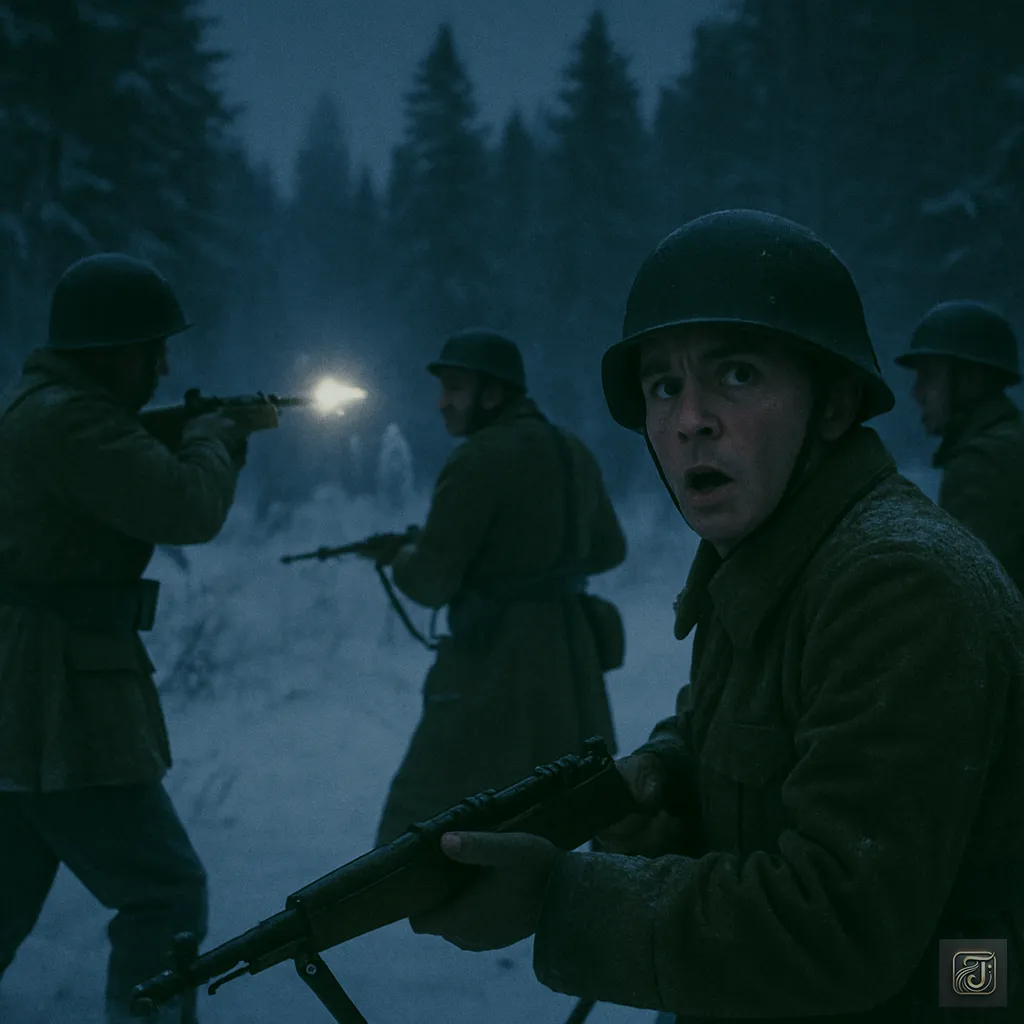
Soviet soldier:
“Who fired?”
“From where?”
“There was no reflection from a scope.”
Every time the rifle shot rang out, someone fell.
It was like the ringing of a bell announcing the end of life.
That was the way of the “White Death.”
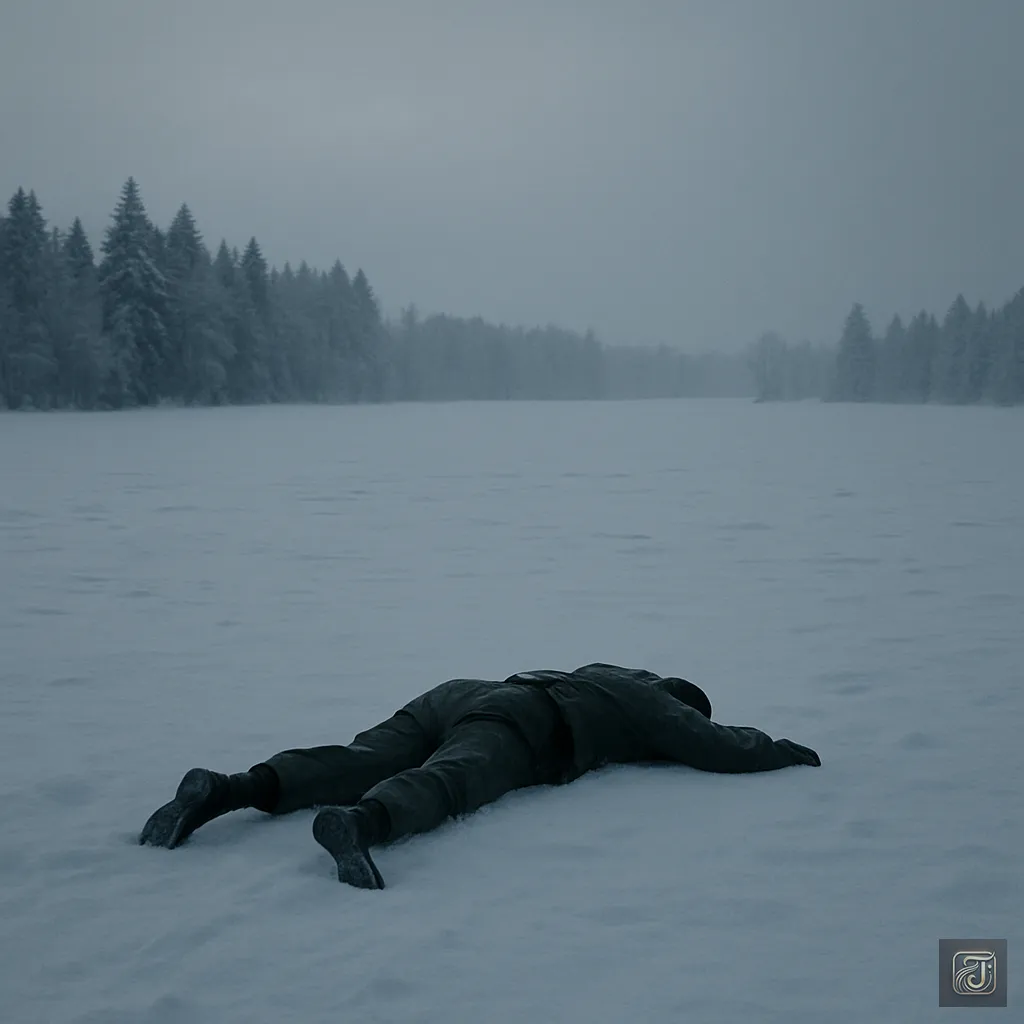
When the sun rose, another person was dead.
A single shot to the forehead or the heart.
There was only one bullet wound.
That was the extent of the injury.
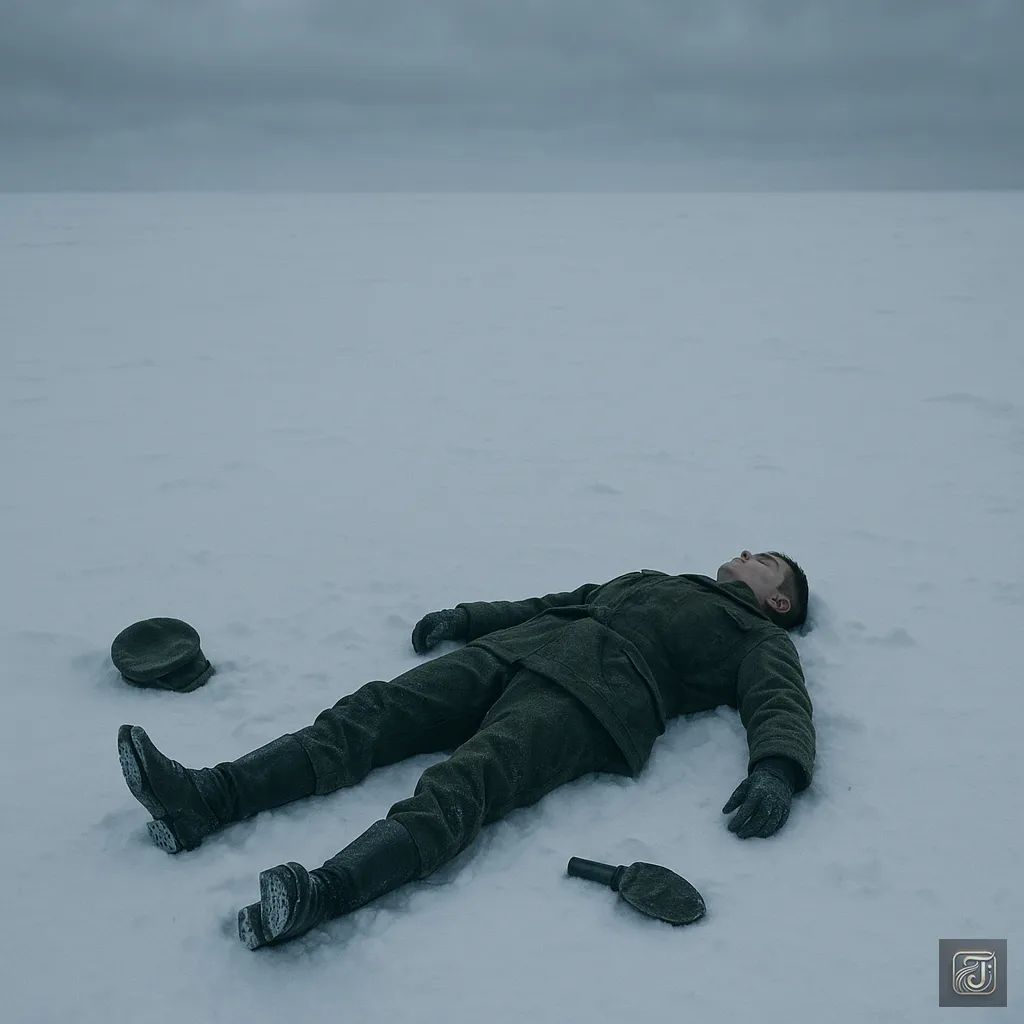
“There’s a ghost on the battlefield…”
The Soviet soldier who muttered those words was found dead the following morning.
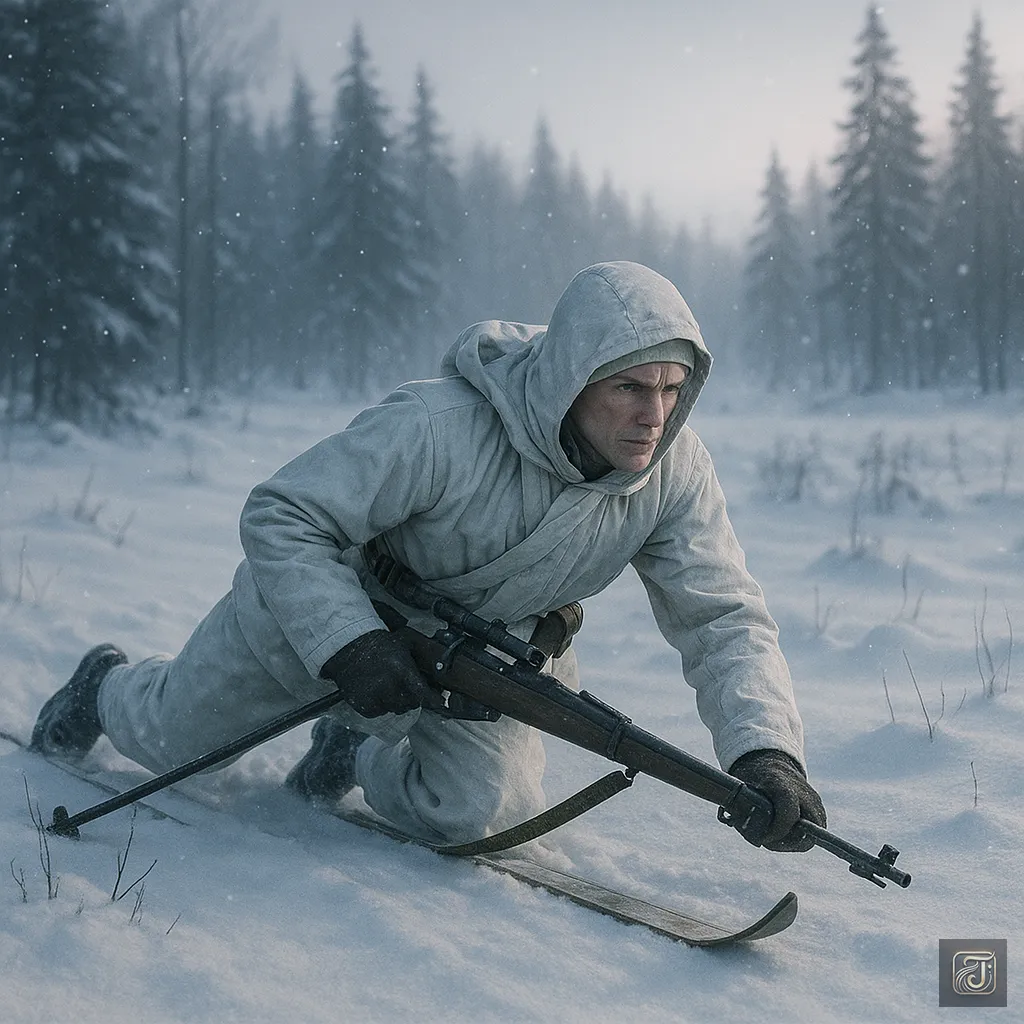
Simo Häyhä prepared in the same way every morning.
He would hold snow in his mouth, hold his breath, and lie prone in the snow.
He moved on skis, approaching silently in a crawl.
For him, taking down 10 soldiers a day was neither too many nor too few.
“Take the shot whenever there’s an opening.”
That was his way of thinking.
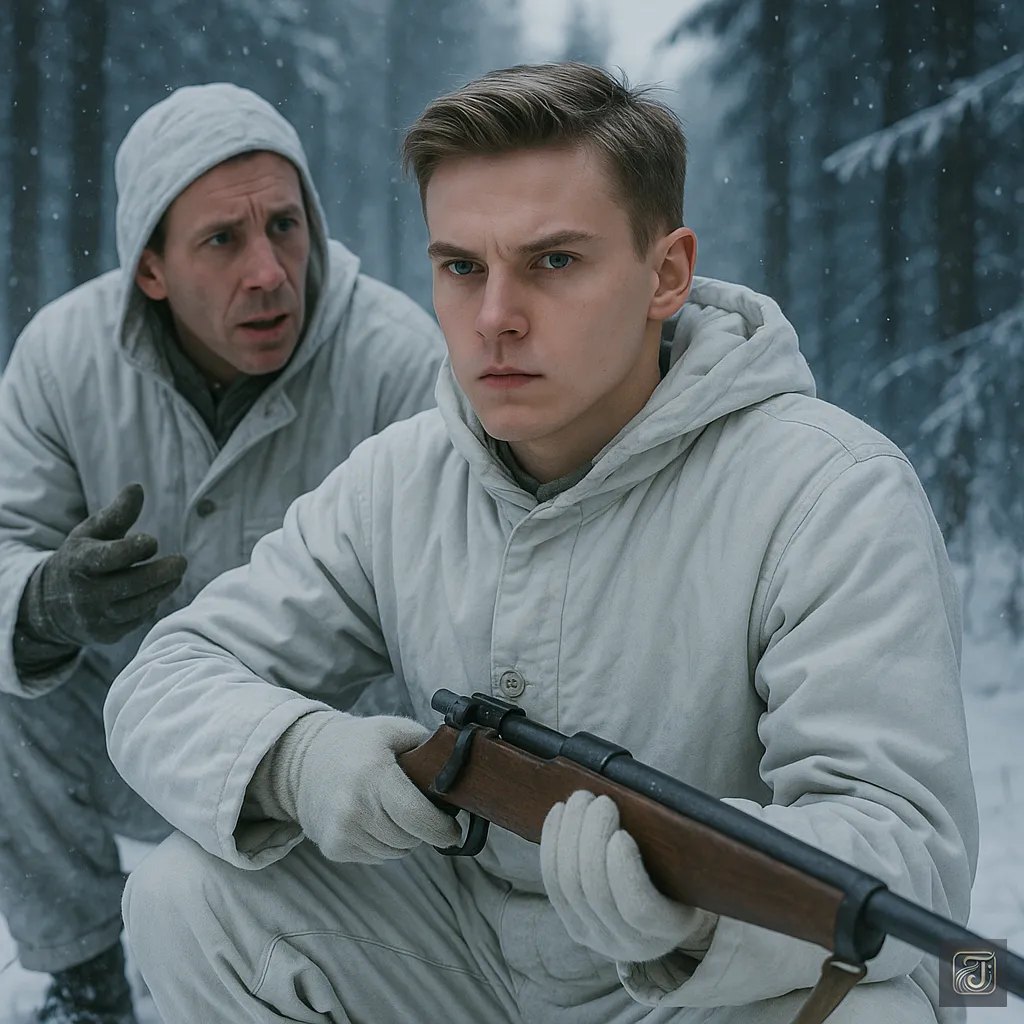
Soldier:
“How can you stay so calm?”
Simo Häyhä:
“…If I lose my composure, someone dies.”
“So I don’t let myself falter.”
Soldier:
“Do you have emotions?”
Simo Häyhä:
“I do. That’s why I shoot to make it quick, to spare them from suffering.”
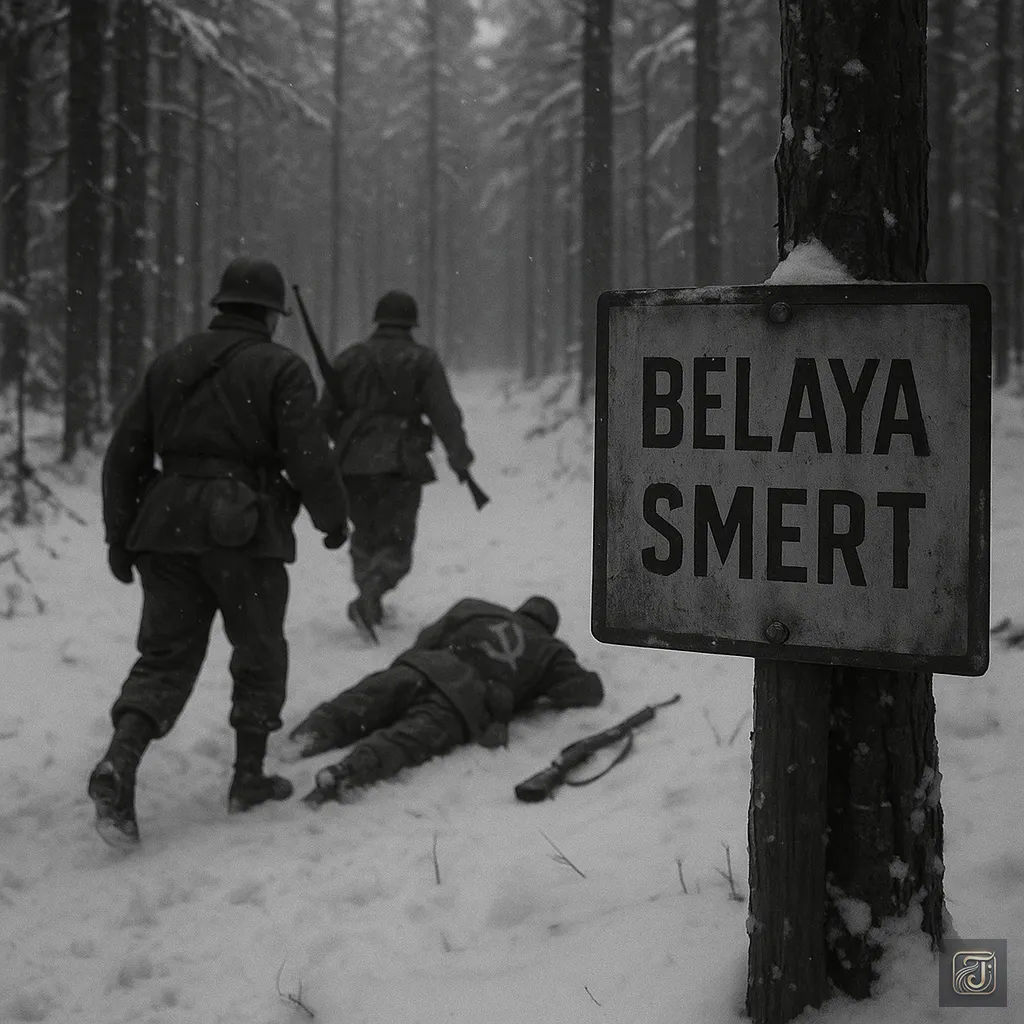
The enemy fled.
The squad targeted by the White Death couldn’t retaliate.
They abandoned the forest and retreated.
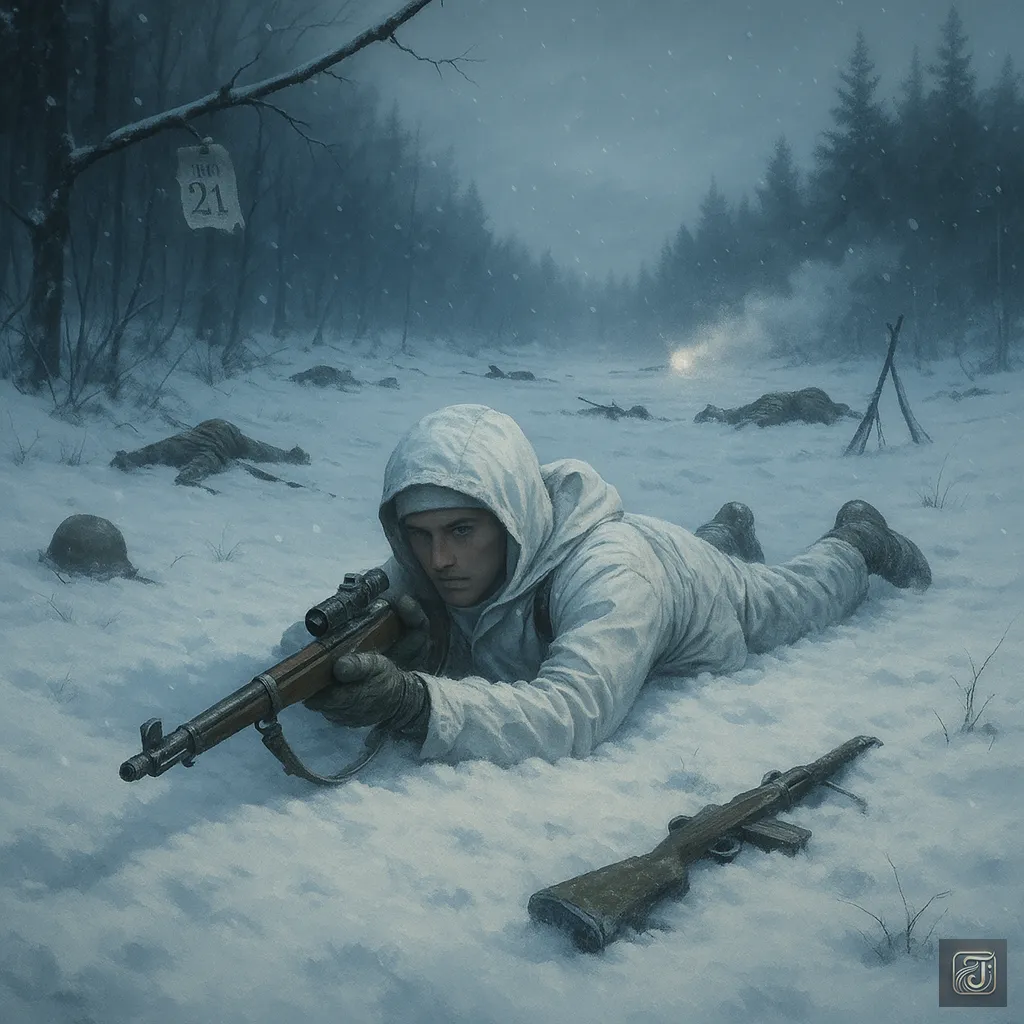
And finally, the Soviet military report included the term “Белая смерть” (The White Death).
That name was not just a nickname.
It was the record of an “entity” that the army feared and deemed impossible to deal with.
And by the time the enemy forces had learned of the nickname “The White Death,”
Simo had not only maintained his composure in sniping but also in close combat.
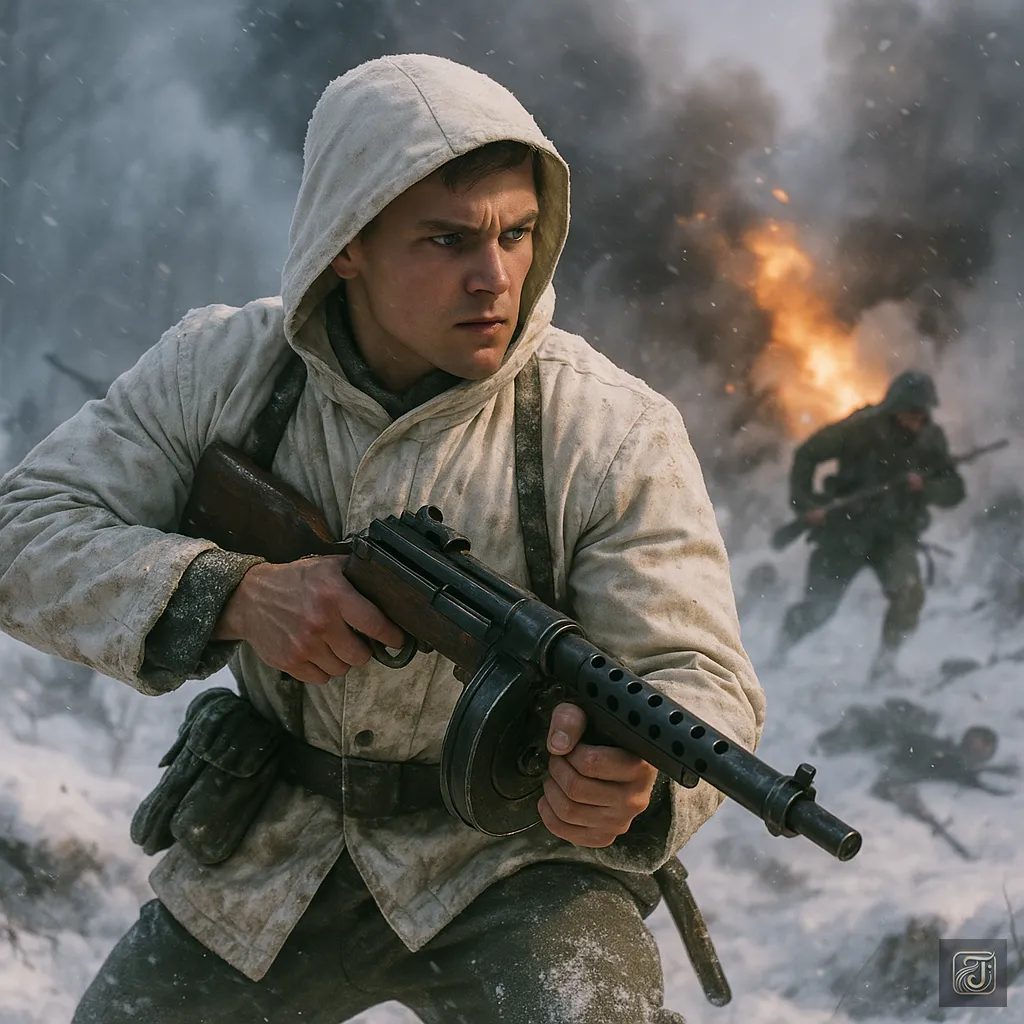
Especially on the front lines known as “The Hill of Slaughter,” he fought not with a sniper rifle, but with a KP31 submachine gun.
Some accounts claim he took down over 200 enemy soldiers.
This was also proof that he was not just a “sniper,” but a soldier at his core.
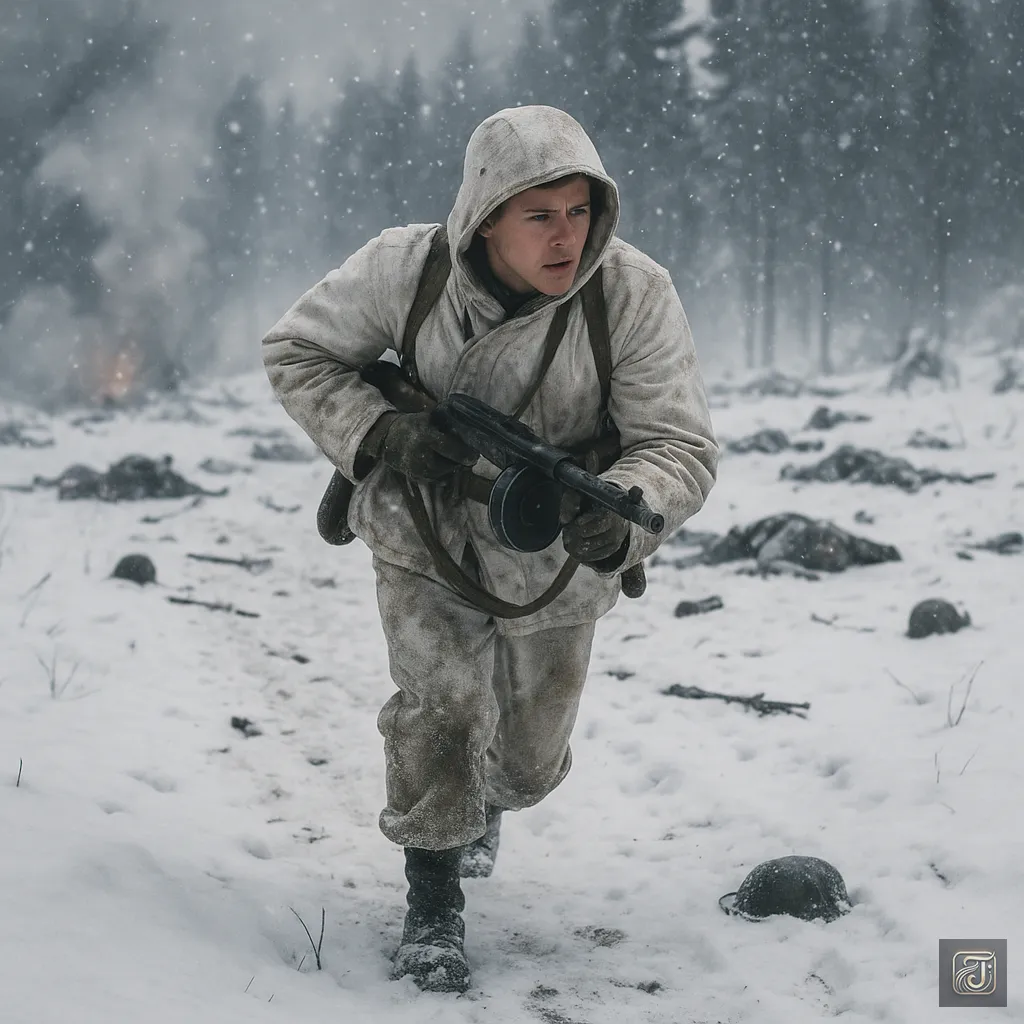
This achievement was recorded in just 100 days.
On December 21, 1939, alone, he took down 25 men, and by Christmas, his total had reached 138.
As the cold grew harsher, the sound of his rifle rang out more frequently.
But Simo remained unchanged.
He sought no rewards, no medals, nor any praise for his achievements.

Soldier:
“How many did you take down today?”
Simo Häyhä:
“I haven’t been counting.”
It was a lie.
But he refused to give it any meaning.
Then, one day,
In the freezing silence of the forest, he found a single enemy soldier.
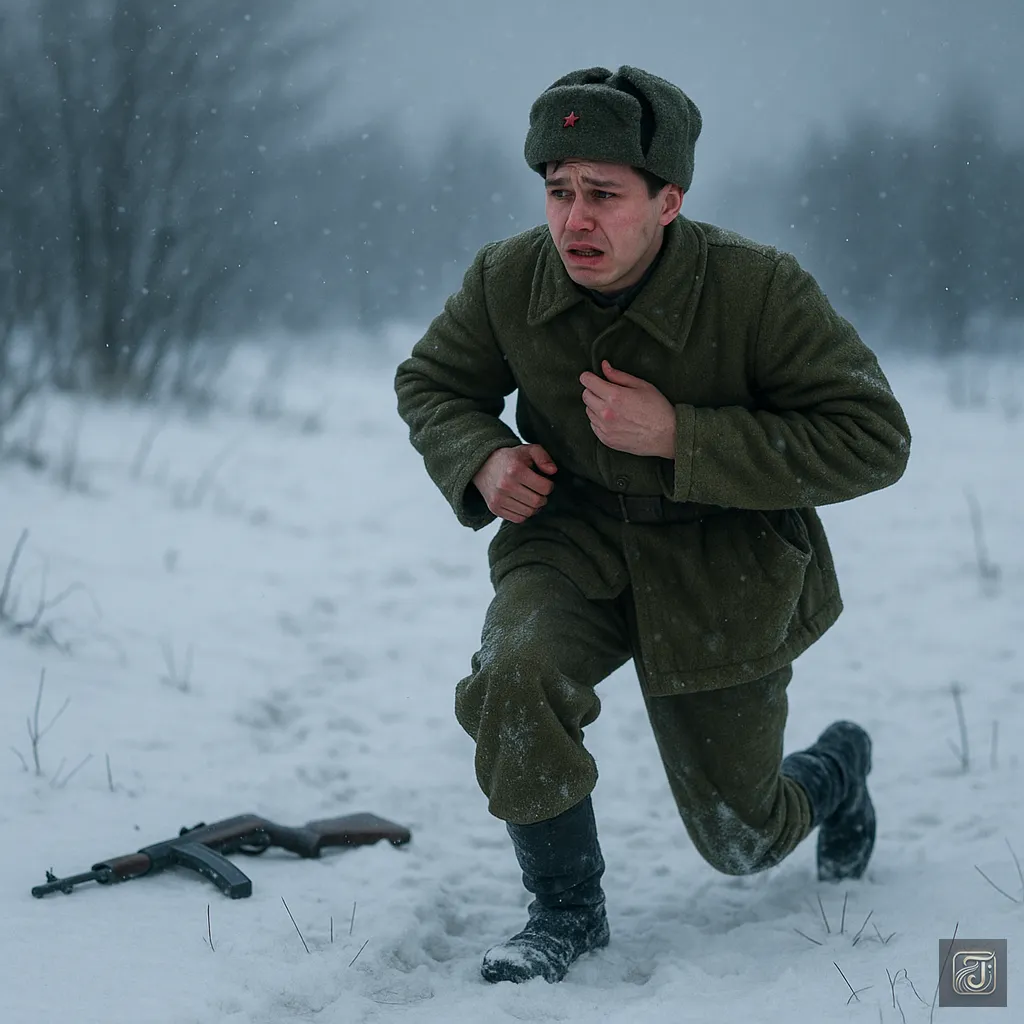
He was young, small, and trembling.
He had no weapon and was trying to escape, dragging his leg behind him.
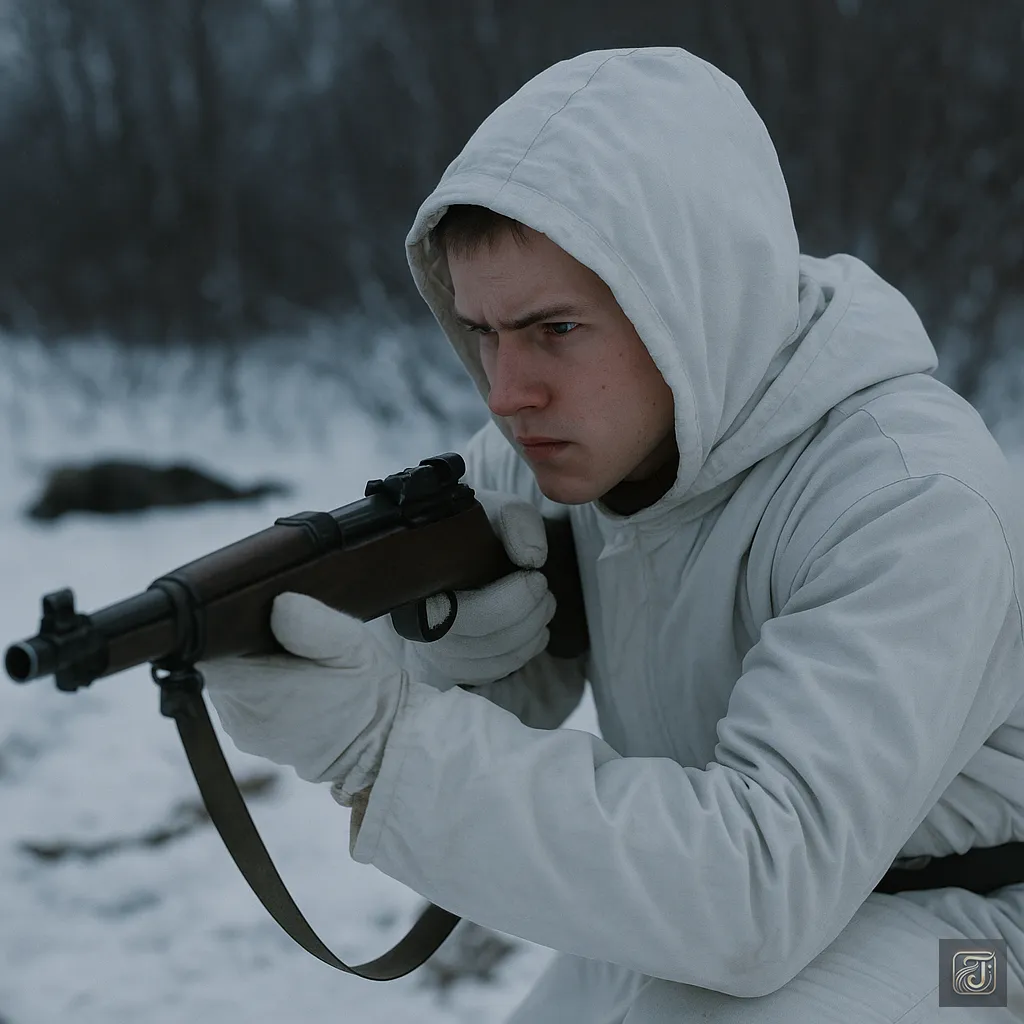
Simo aimed his rifle.
He placed his finger on the trigger.
But—he didn’t shoot.
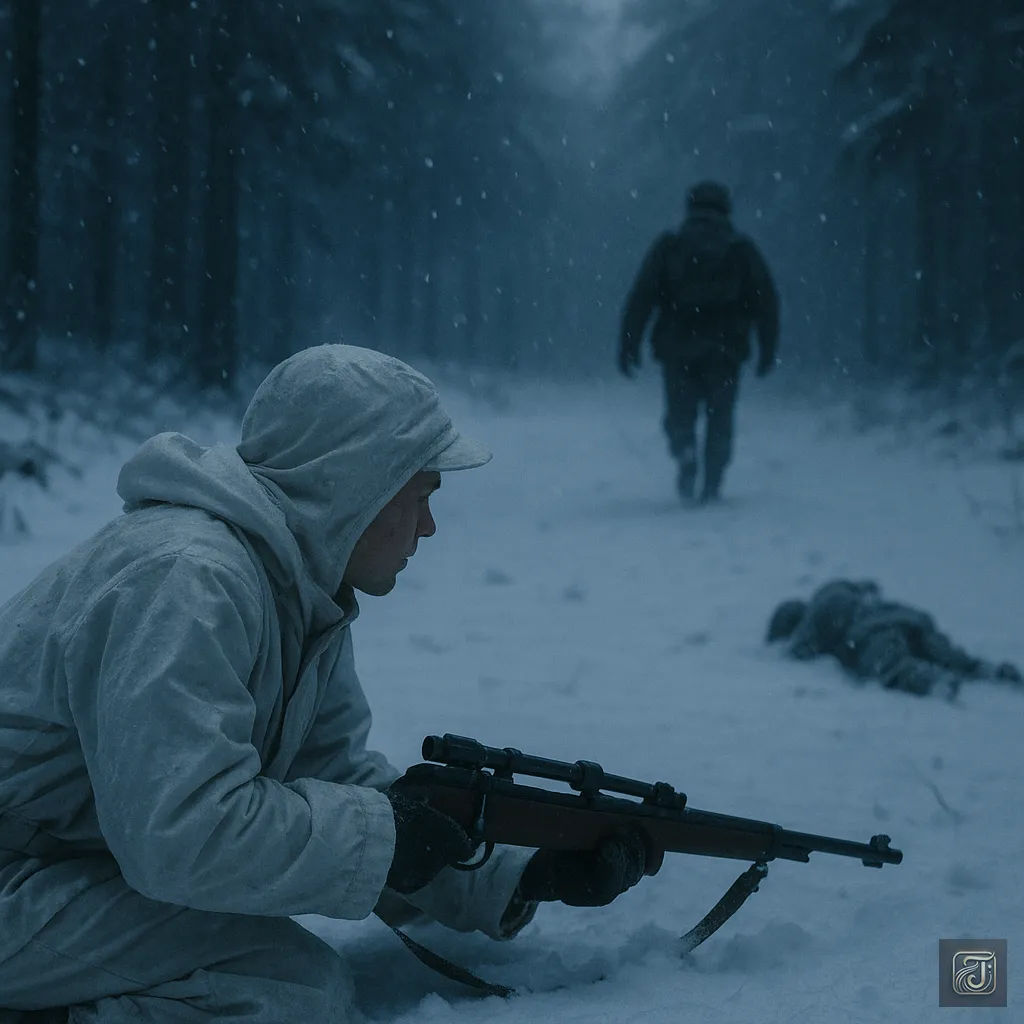
In the snow, he simply lowered his rifle.
The wind blew, and the snow danced in the air.
The soldier, unaware of Simo’s presence, vanished into the darkness.
That night, by the fire, one of his comrades spoke.
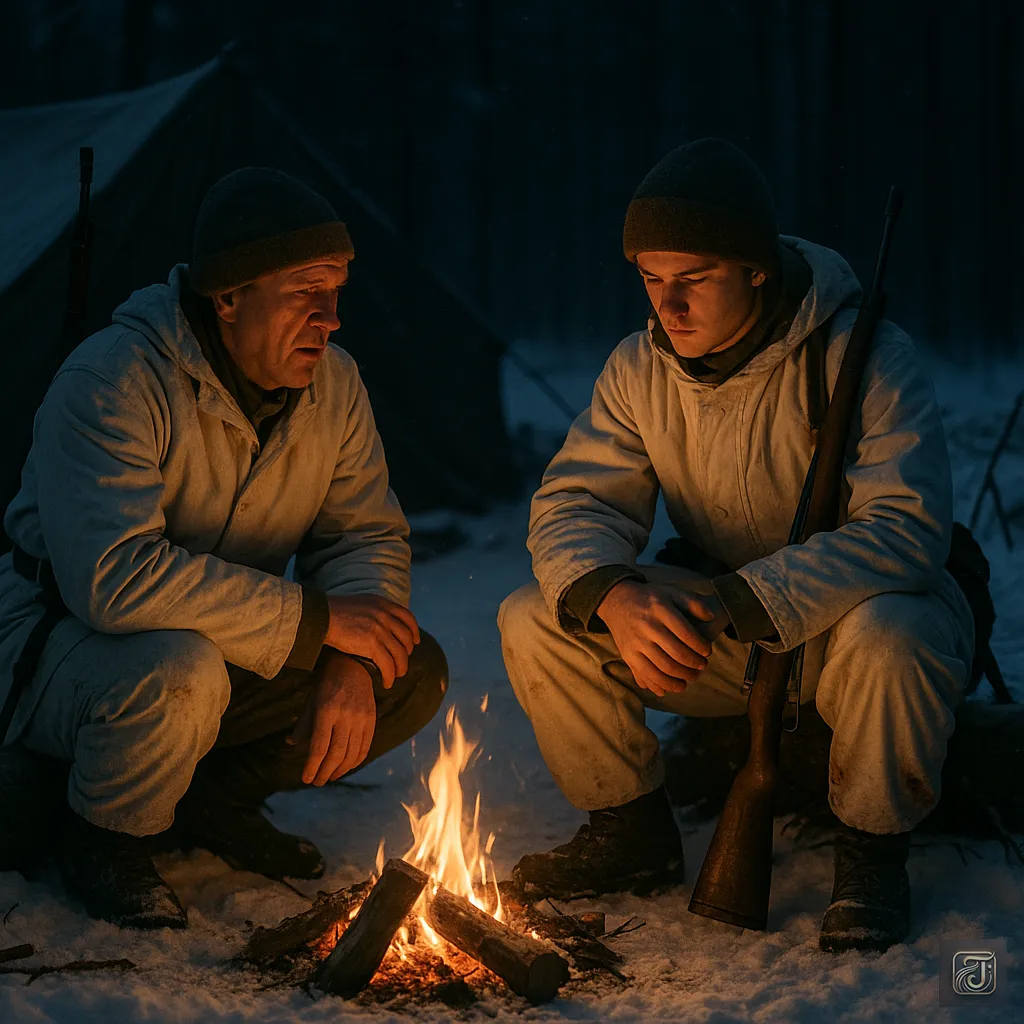
Soldier:
“You didn’t shoot him, did you?”
“You could have taken him out easily.”
Simo Häyhä:
“…He wasn’t armed.”
With that, he stared into the fire.
Chapter 8: The Bullet in the Silence
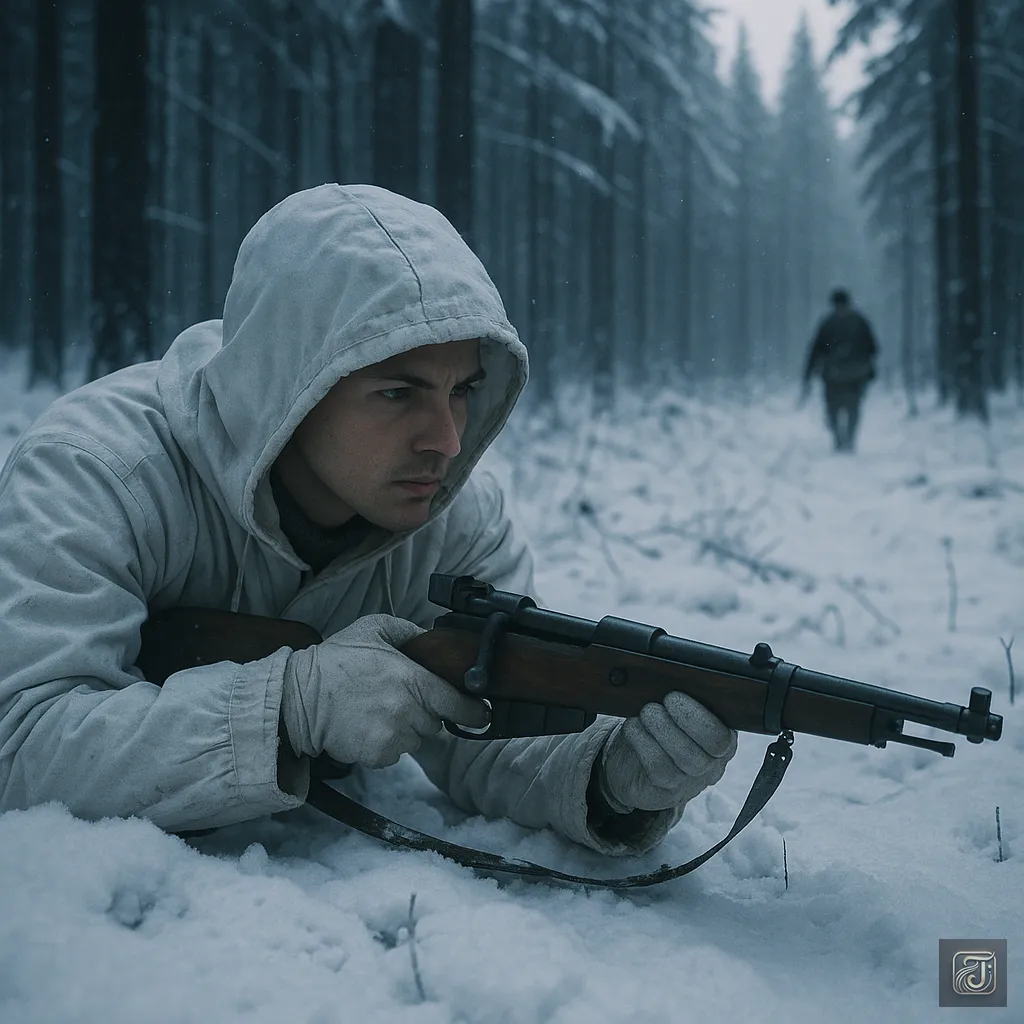
March 6, 1940.
That day, he was once again in the forest.
The snow was deep, and the air was frozen.
He had lost count of how many missions it had been.
But there was one thing—when he set his sights on the enemy soldier in the distance,
At that moment, as always, he took aim.
“Bang!”
A gunshot.—But it wasn’t.
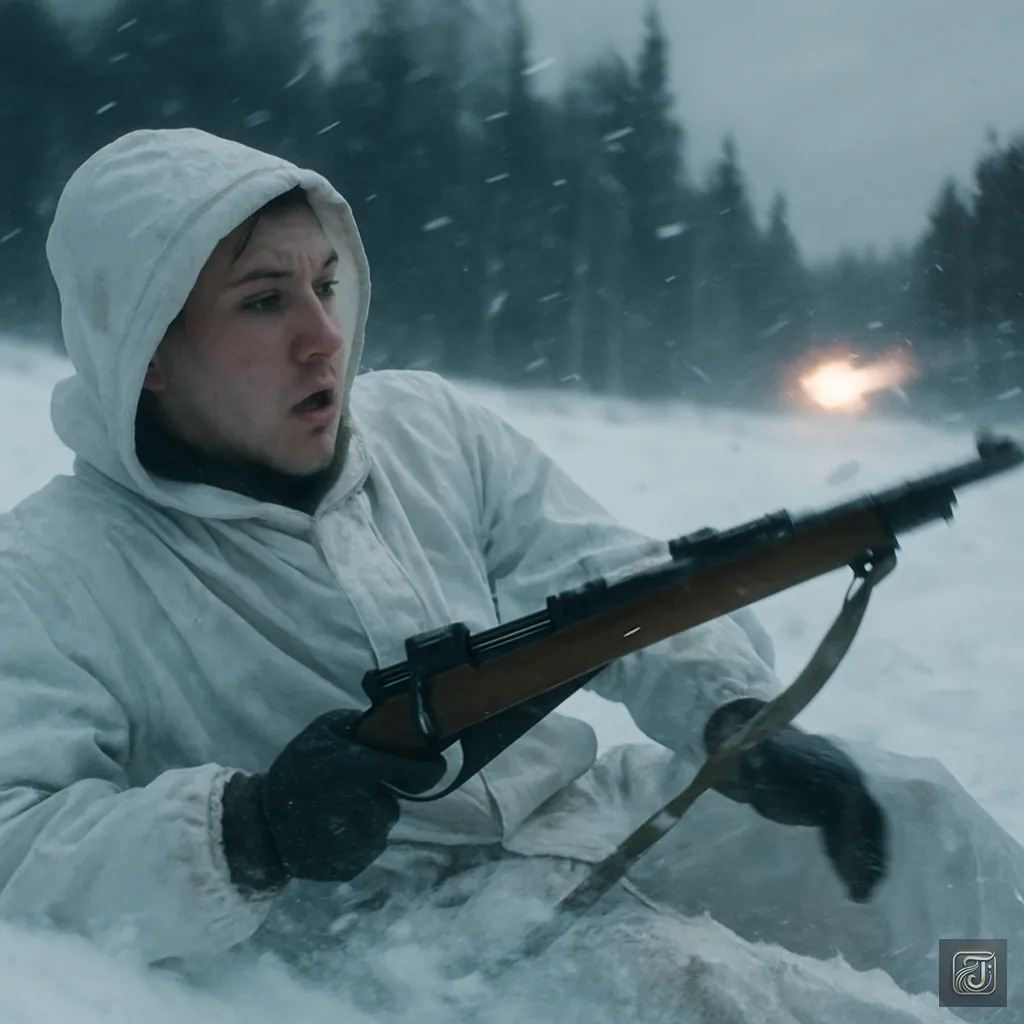
It was the sound directed at him.
In the next moment, the world flipped upside down.
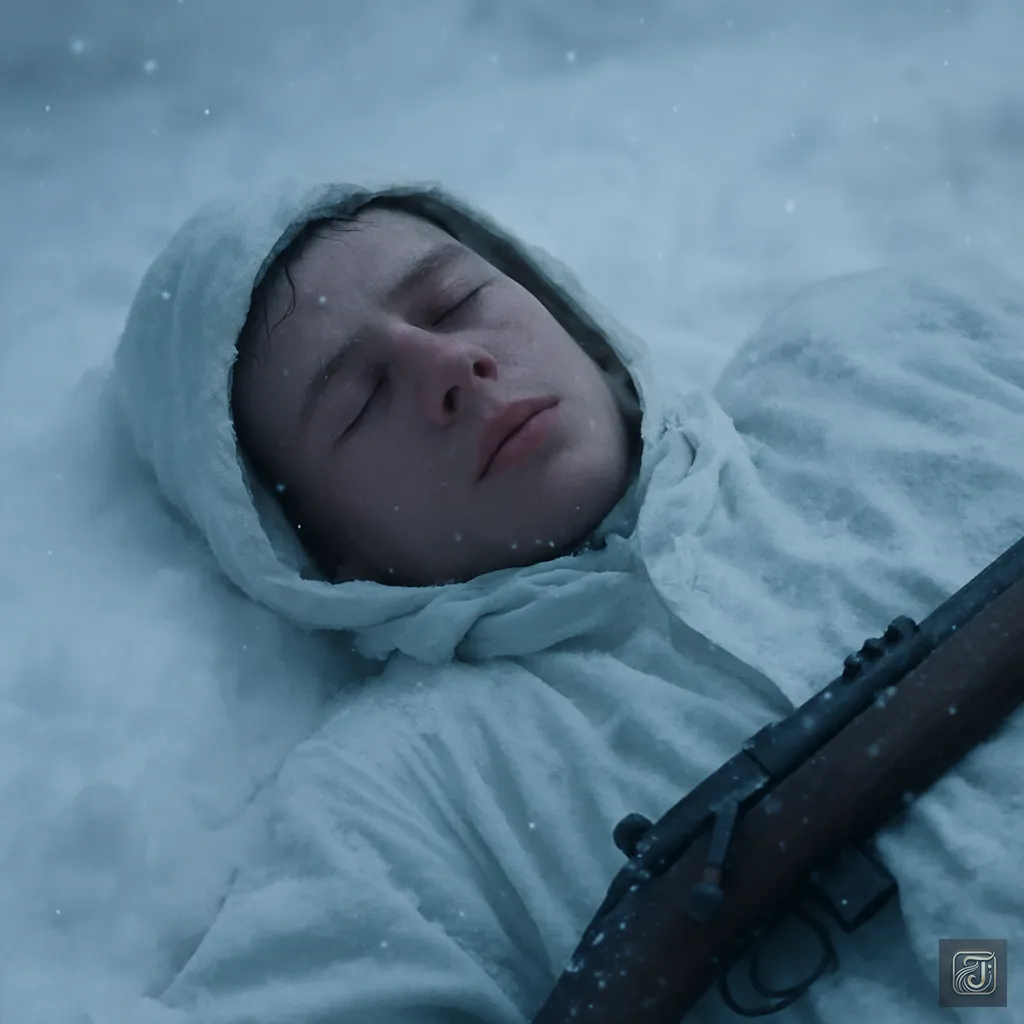
A shock to his face.
The sound of bones breaking echoed inside his skull.
Consciousness was being dragged into the darkness.
His world was deeper and quieter than the snow.
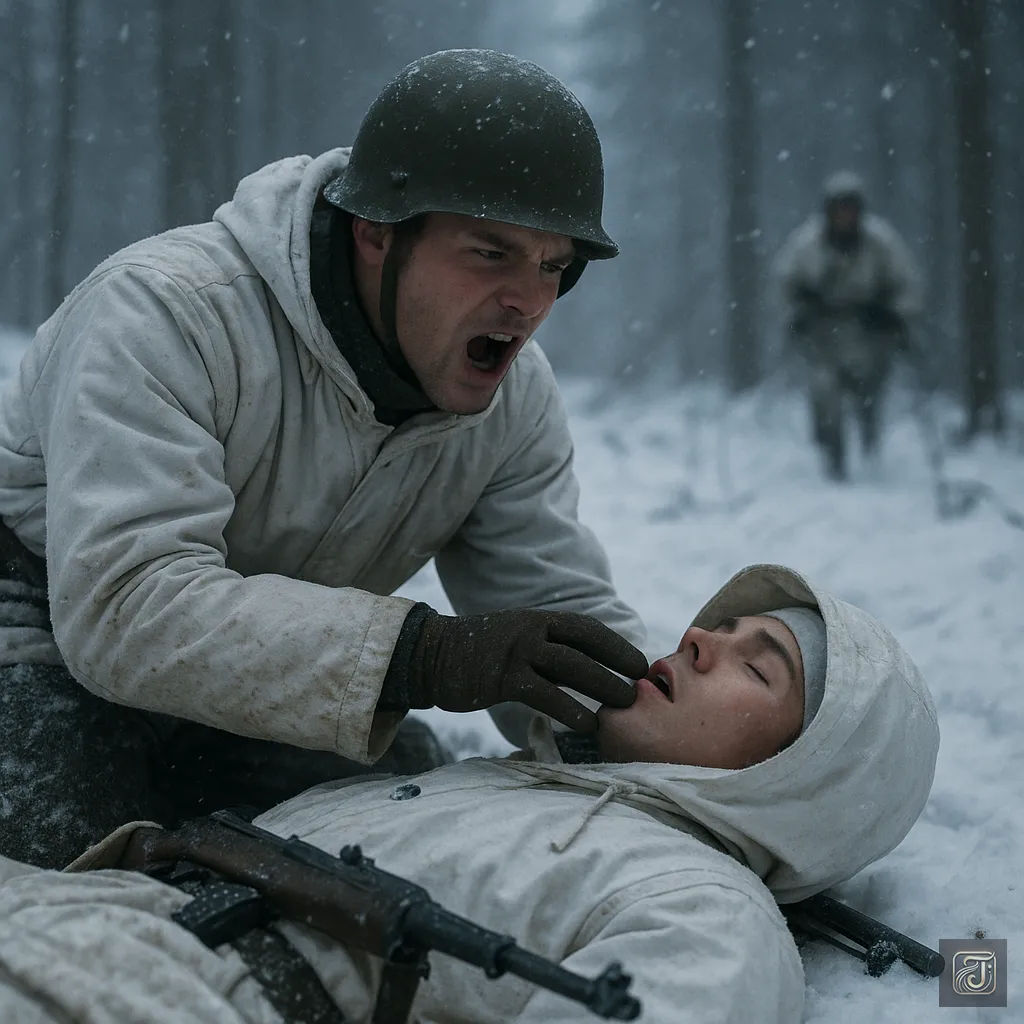
Soldier:
“He’s still alive! He’s still breathing!”
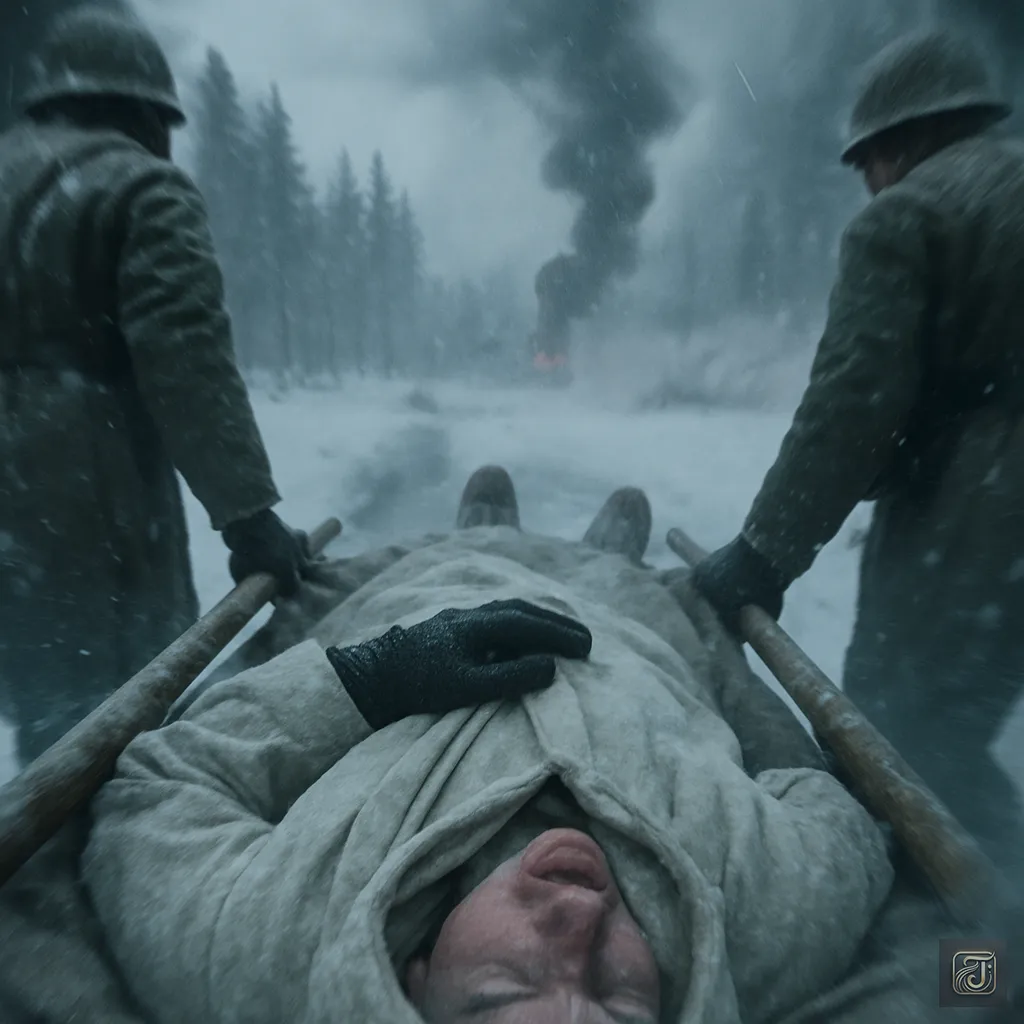
A voice shouting.
The creak of a stretcher.
The distant sound of artillery.
All of it echoed through a thin veil of ice.
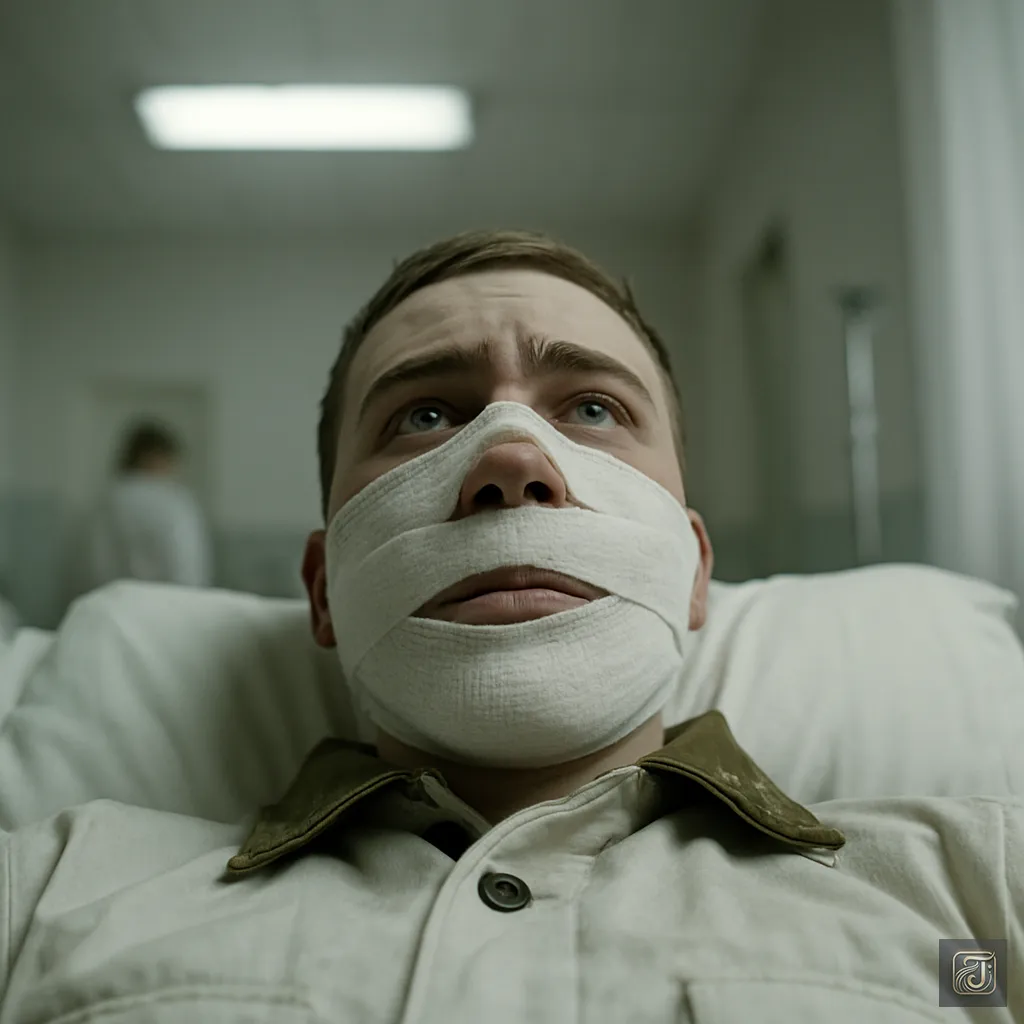
When he opened his eyes, he found himself in a hospital.
A white ceiling.
The smell of blood and medicine.
And his face was wrapped in bandages.
The doctor spoke.
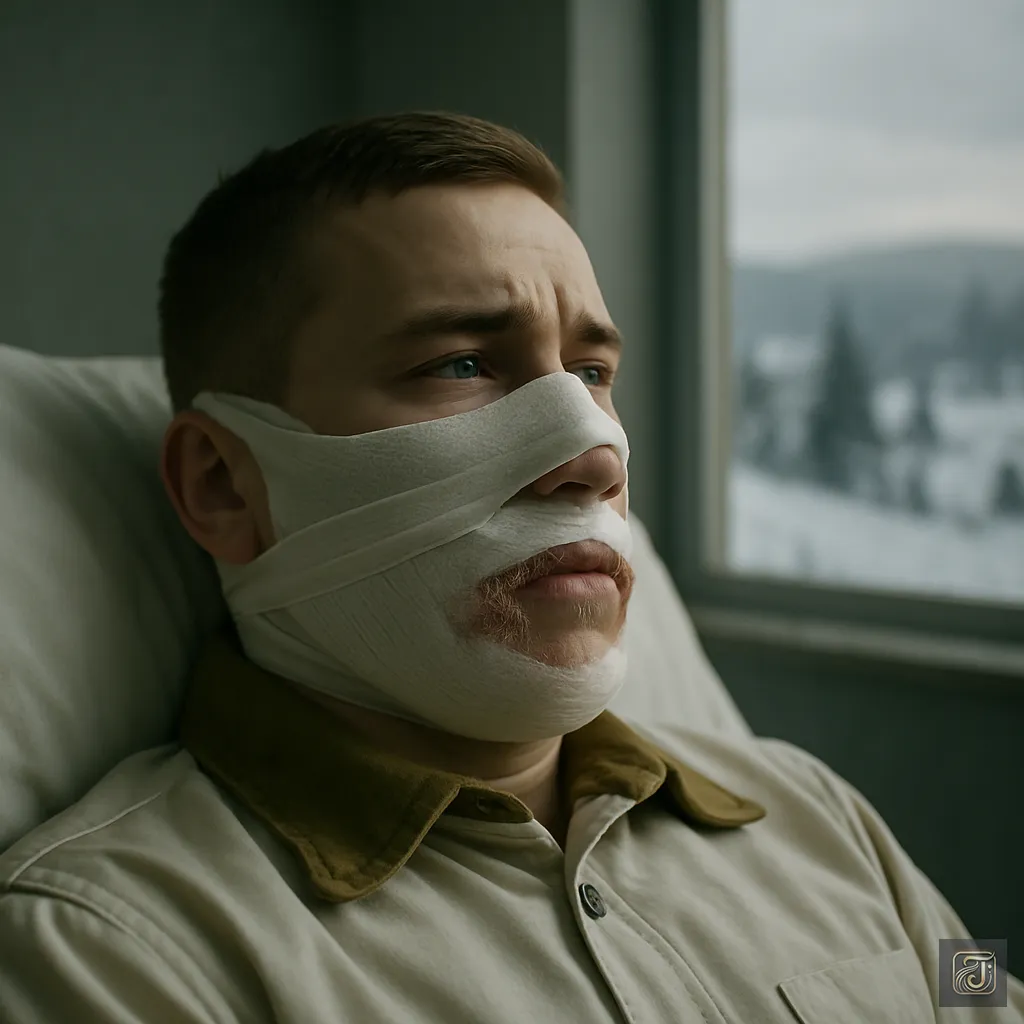
Doctor:
“It’s a miracle.”
“At that distance, at that angle.”
“Normally, you’d be dead on the spot.”
“…But you’ll never return to your original face,”
Simo said nothing.
Chapter 9: The Return in Silence
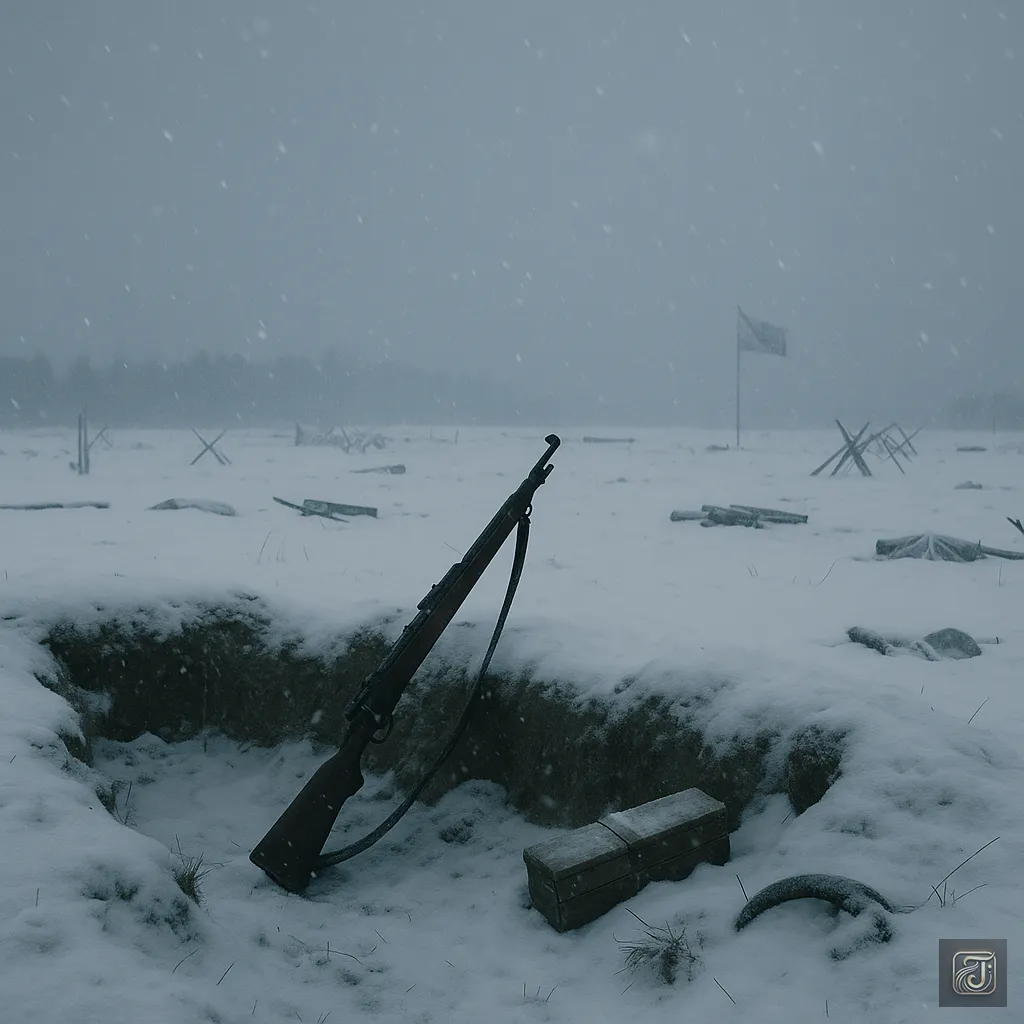
March 1940.
The Winter War came to an end.
A ceasefire agreement was signed, and the sound of gunfire faded from the battlefield.
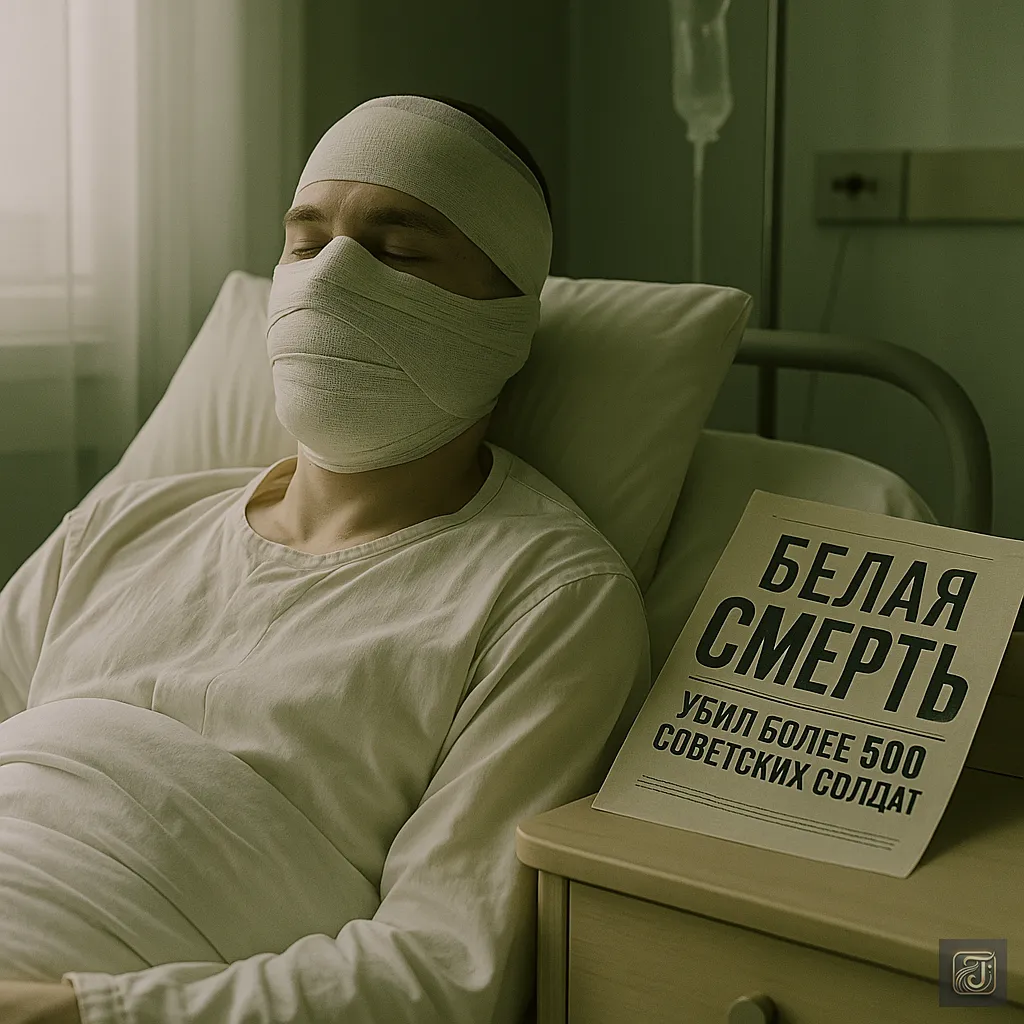
When the war ended, he was still with his eyes closed.
The doctors called it a “miracle,” and the newspapers hailed him as the “White Death” who single-handedly took down over 500 Soviet soldiers, portraying him as a hero.
But Simo Häyhä remained quiet, as if he hadn’t heard any of those words.
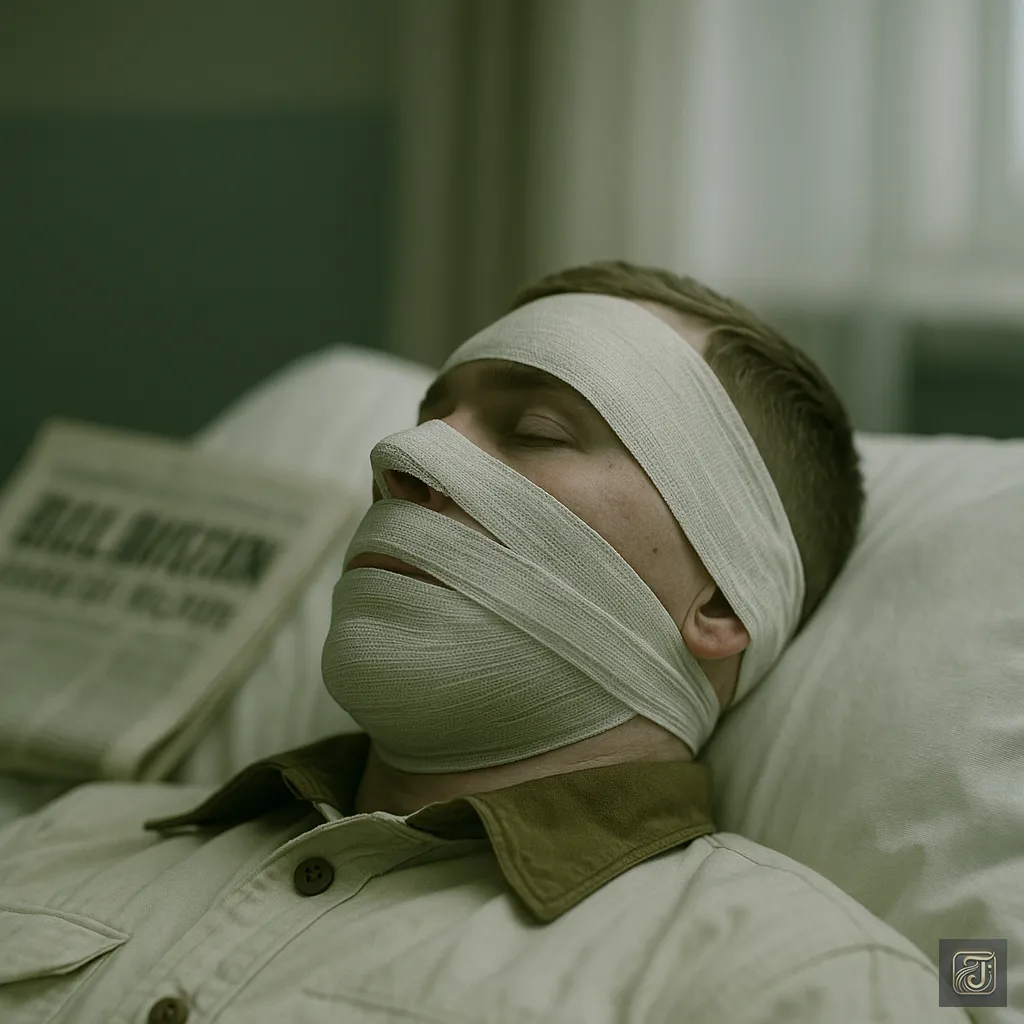
There was no joy, no pride in them.
What remained were the eyes of a man whose mission had been completed.
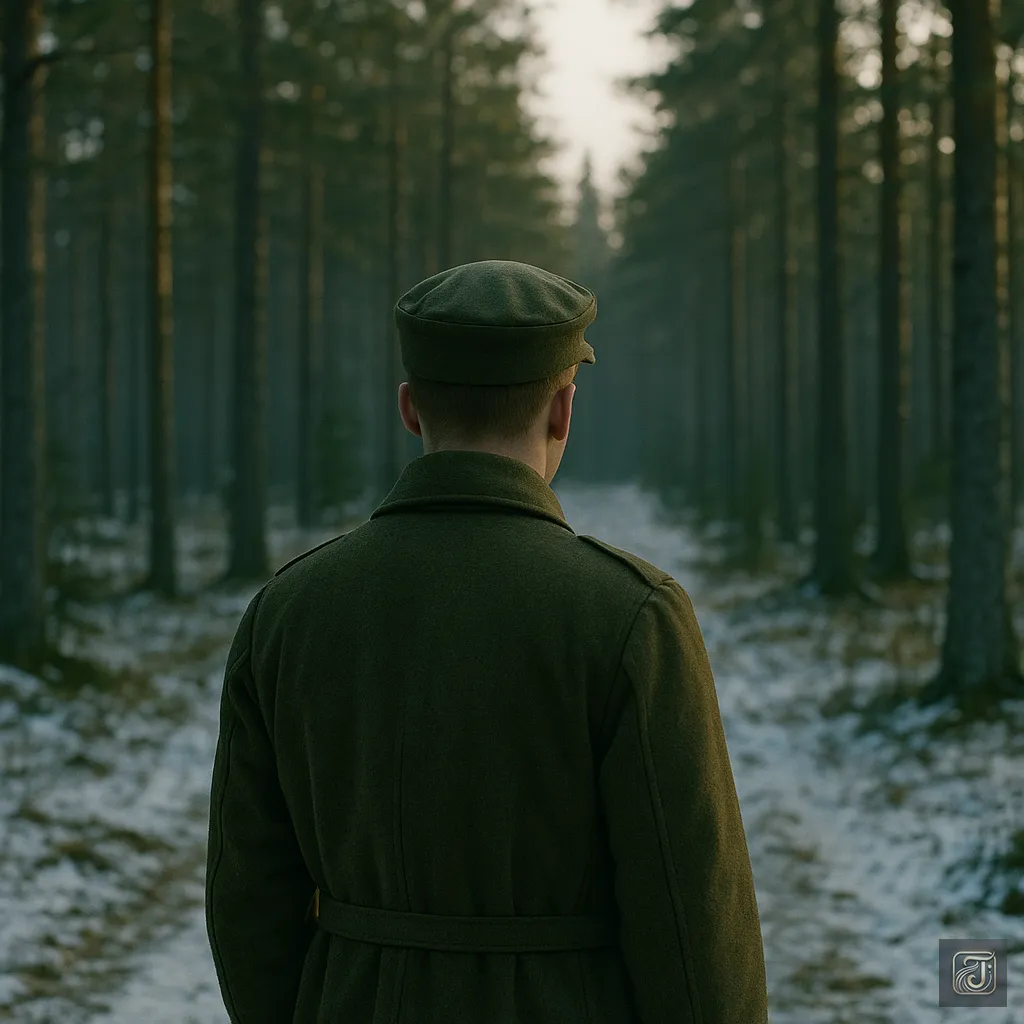
After his discharge, he quietly returned to his hometown.
No one called for him, and he told no one of his return.
Neither his family nor the villagers made any grand gesture to welcome him.
Only—quietly, as always—the forest embraced him.
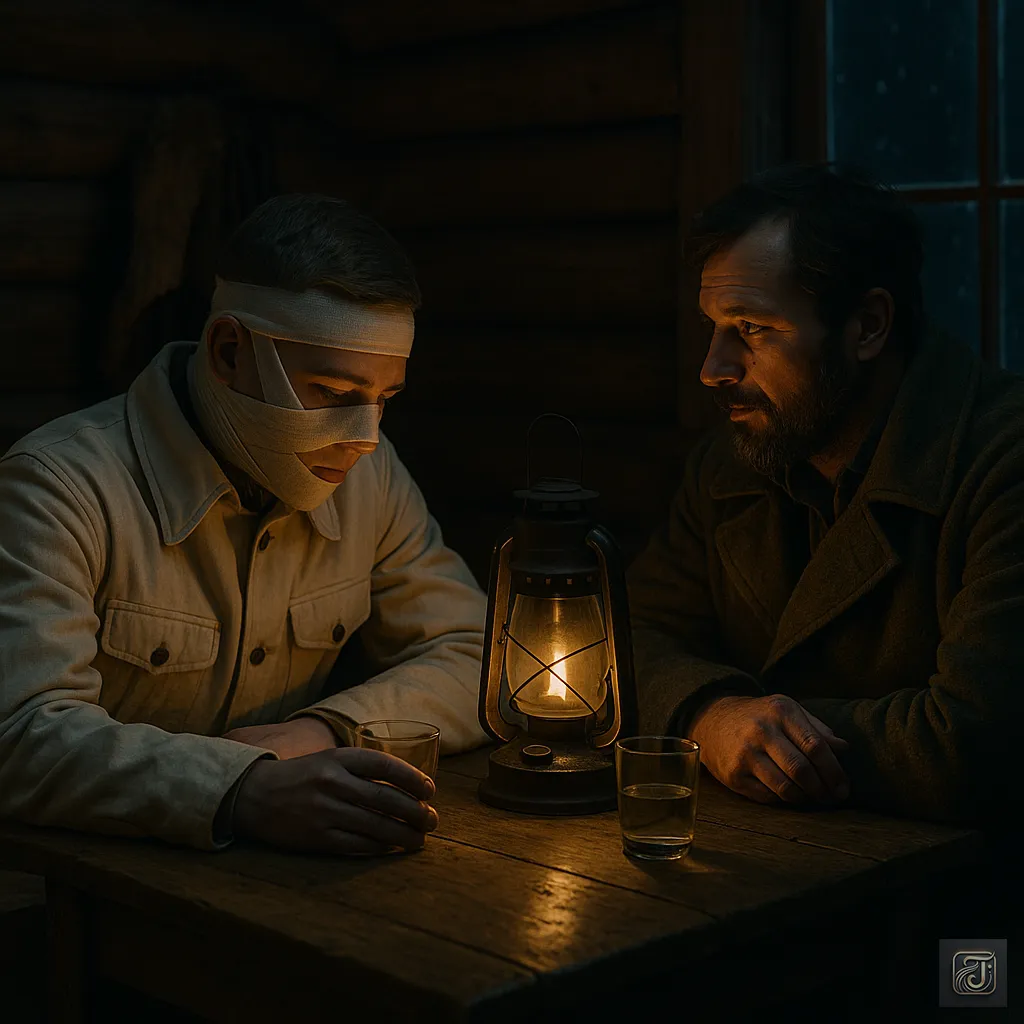
Former comrade:
“Will you not talk about the war?”
It was one of his former comrades who asked.
It was on a night when they shared just one drink.
Simo seemed to smile slightly.
Then, he answered with just one sentence.
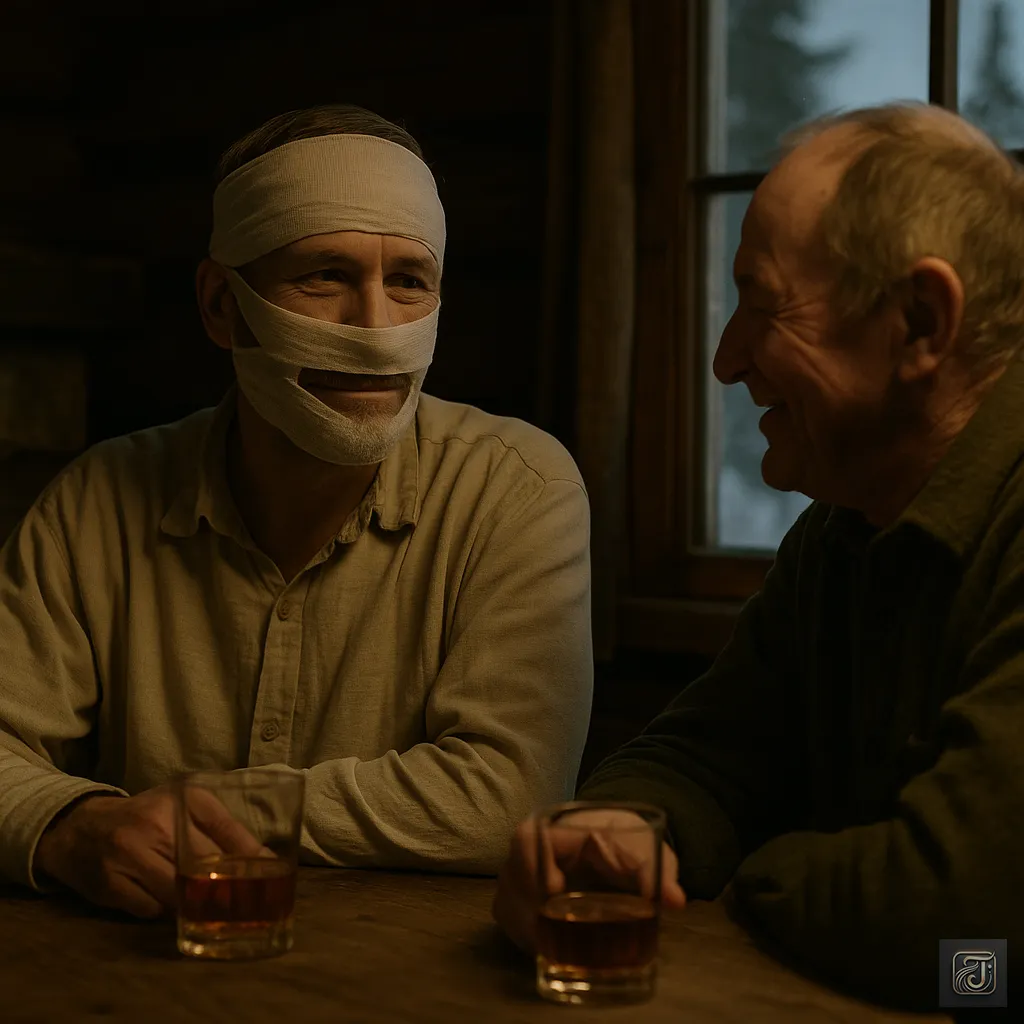
Simo Häyhä:
“…I’ve said enough.”
But he had not spoken a single word.
How many had he killed,
What he had felt,
What he had fought to protect,
All of it was entrusted to silence.
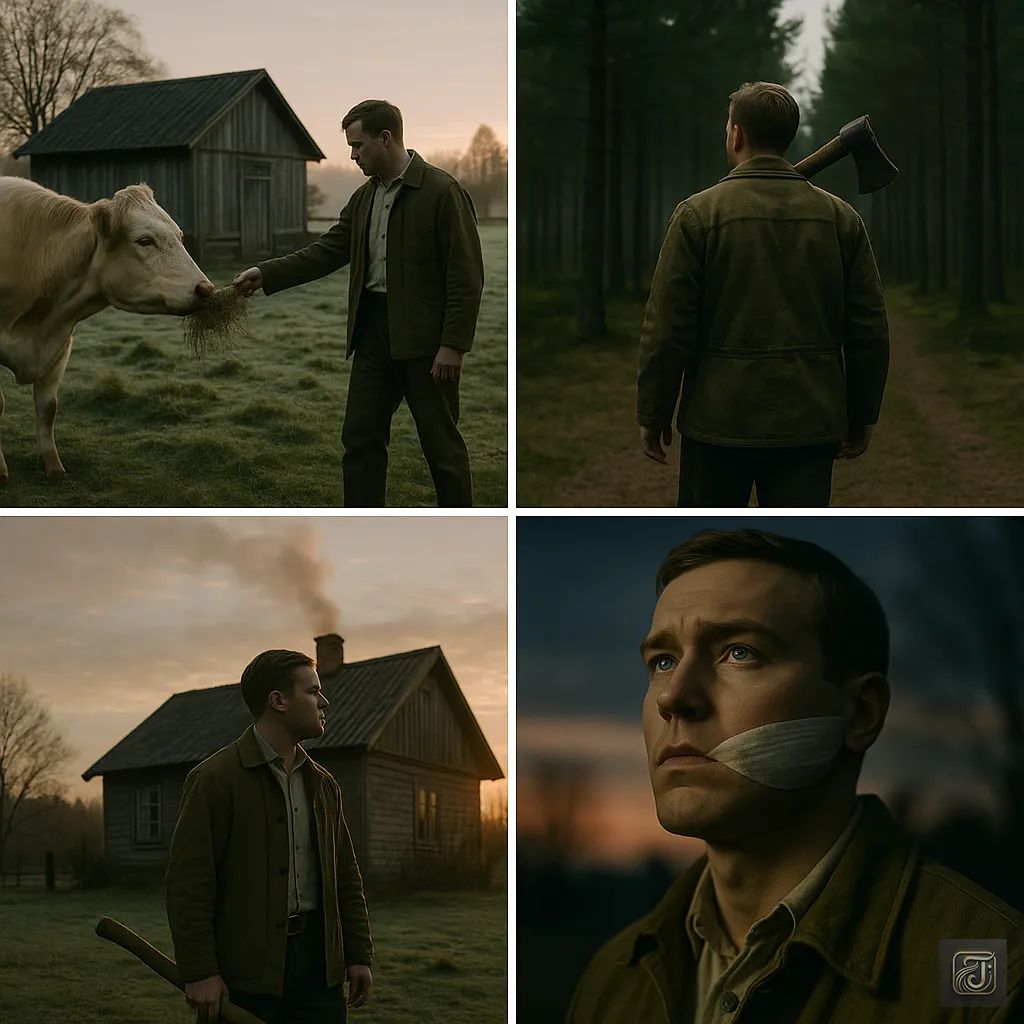
Life after the war was no different than before.
In the mornings, he cared for the cows; in the afternoons, he entered the forest, and by dusk, he returned home.
He no longer carried a rifle.
But his eyes remained just as they had been.
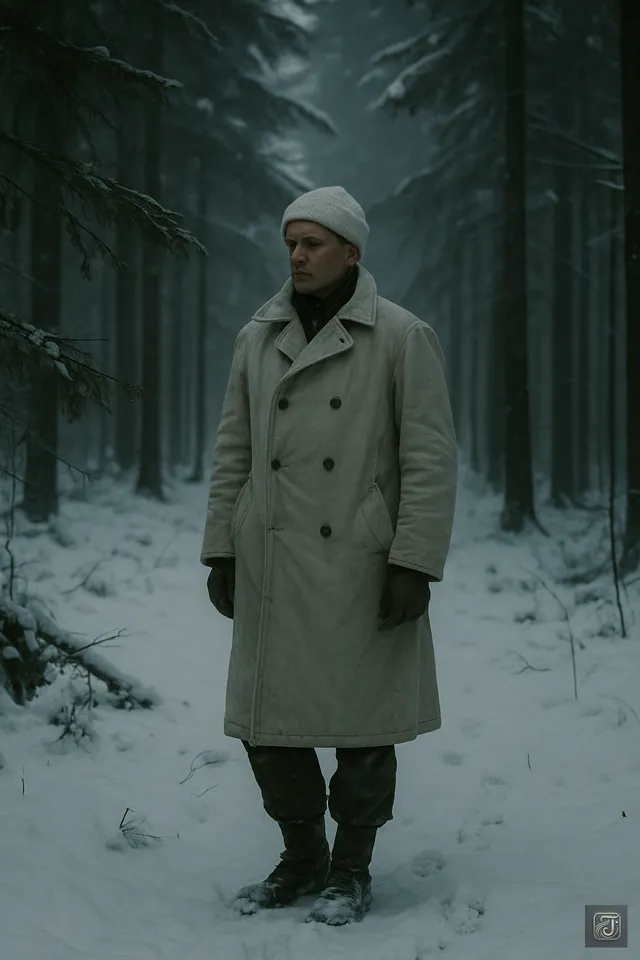
He reacted to the movement of the distant wind,
Distinguished the difference in footsteps,
Sensed the presence of beasts in the snow.
It was no longer a “skill.”
He himself had become the “Silent Forest.”
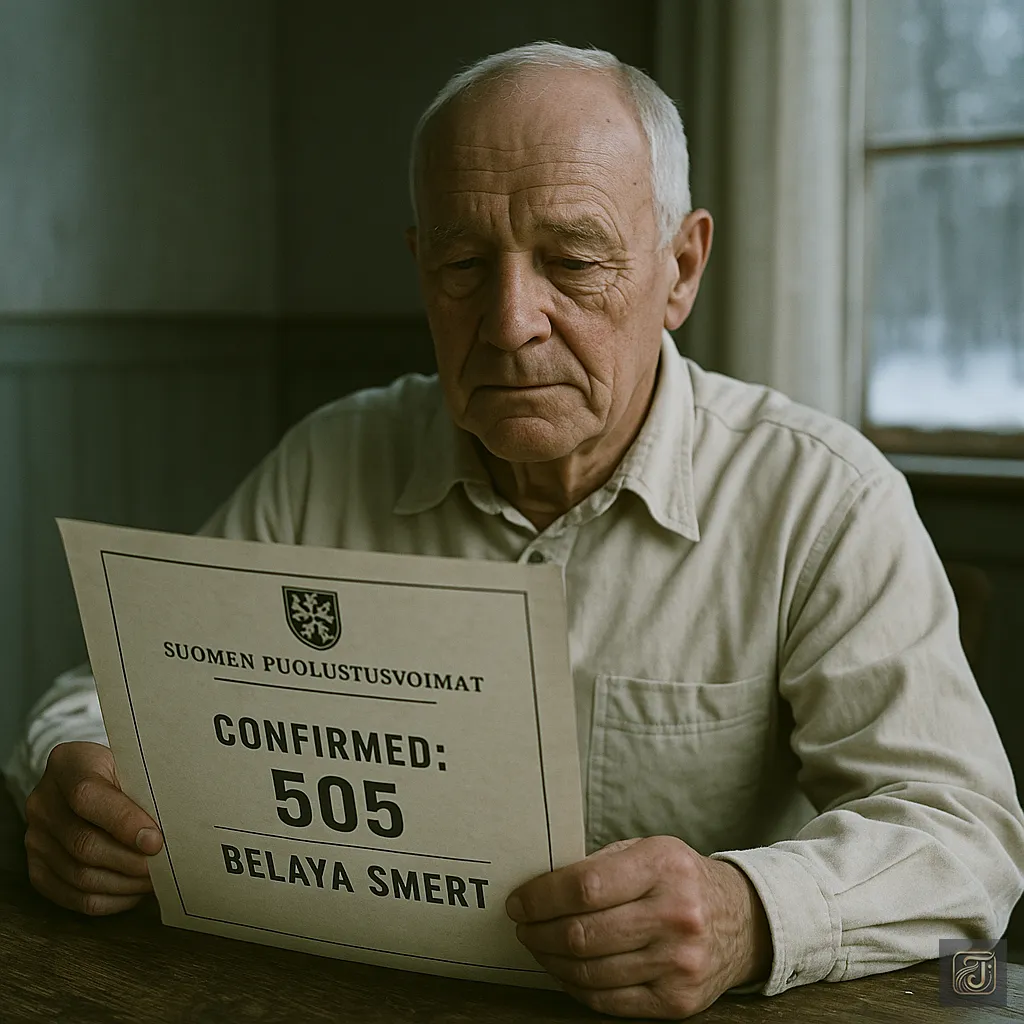
1957.
His confirmed kill count was officially announced.
The confirmed number of sniper kills: 505.
Including close combat and unverified kills, some theories suggest the number exceeds 700.
A journalist visited.
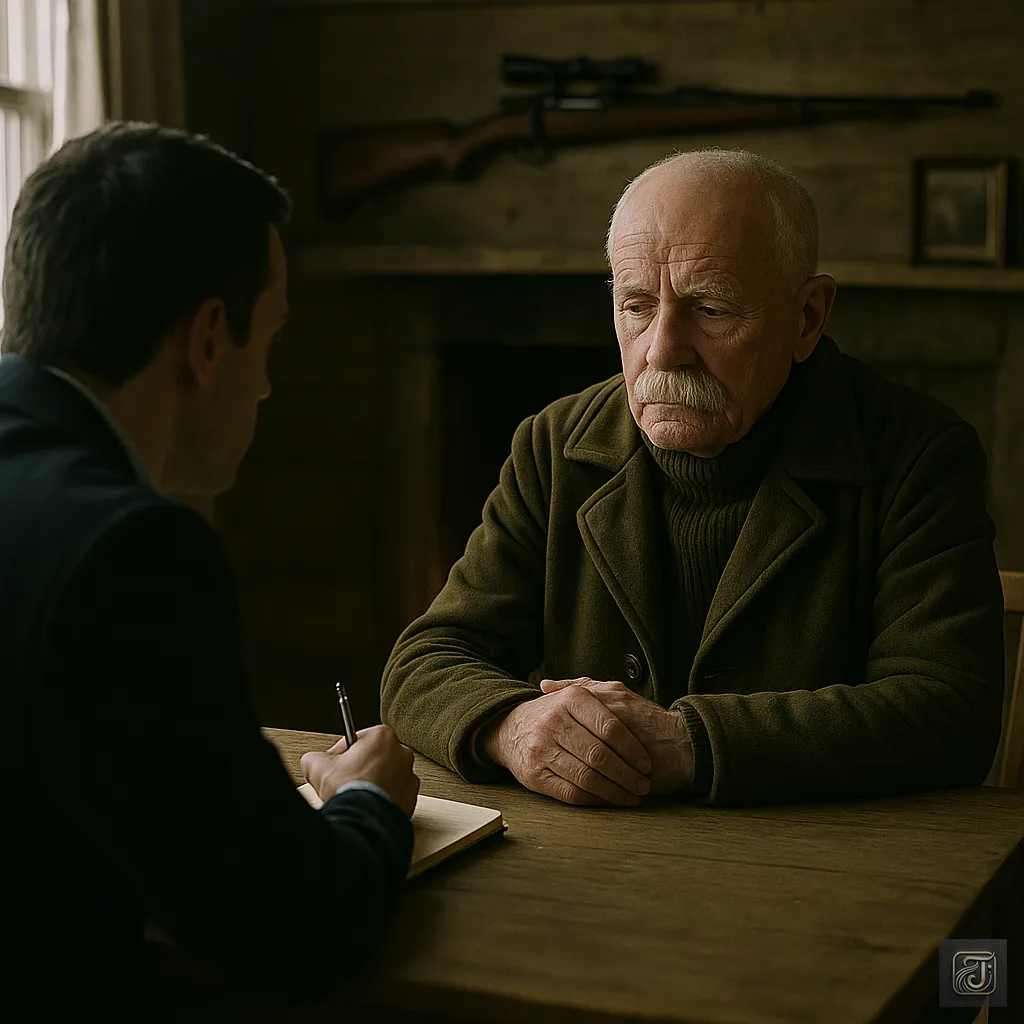
Journalist:
“You are a hero.”
“Why didn’t you use your skills and remain in the military?”
Simo didn’t answer.
He simply gazed out at the forest beyond the window.
Then, he murmured softly.
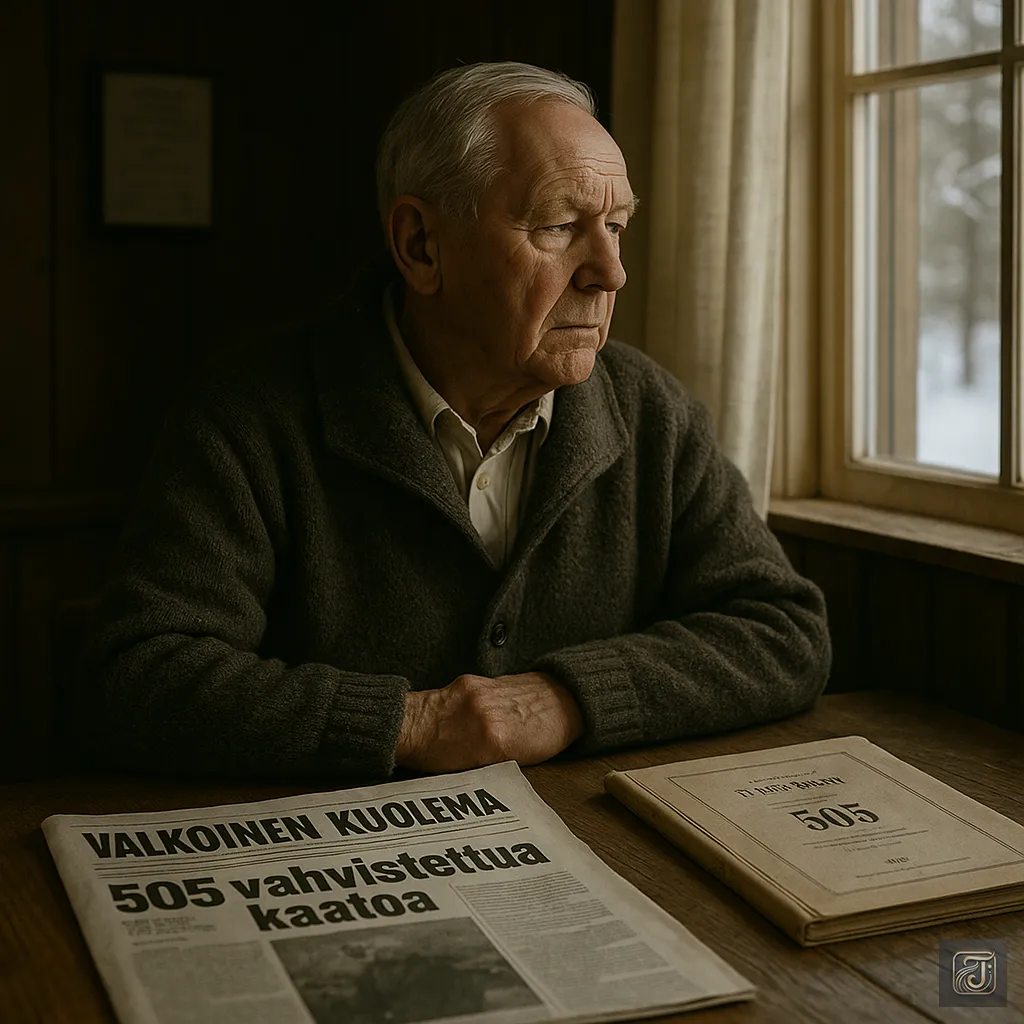
Simo Häyhä:
“…If I don’t have to shoot, it’s better that way.”
Those words were his “philosophy.”
He did not speak. He did not boast. He did not seek anything.
Only when it was absolutely necessary to take a life did he fire.
That was the silence he maintained until the very end.
In the 1970s, Finnish military schools taught this:
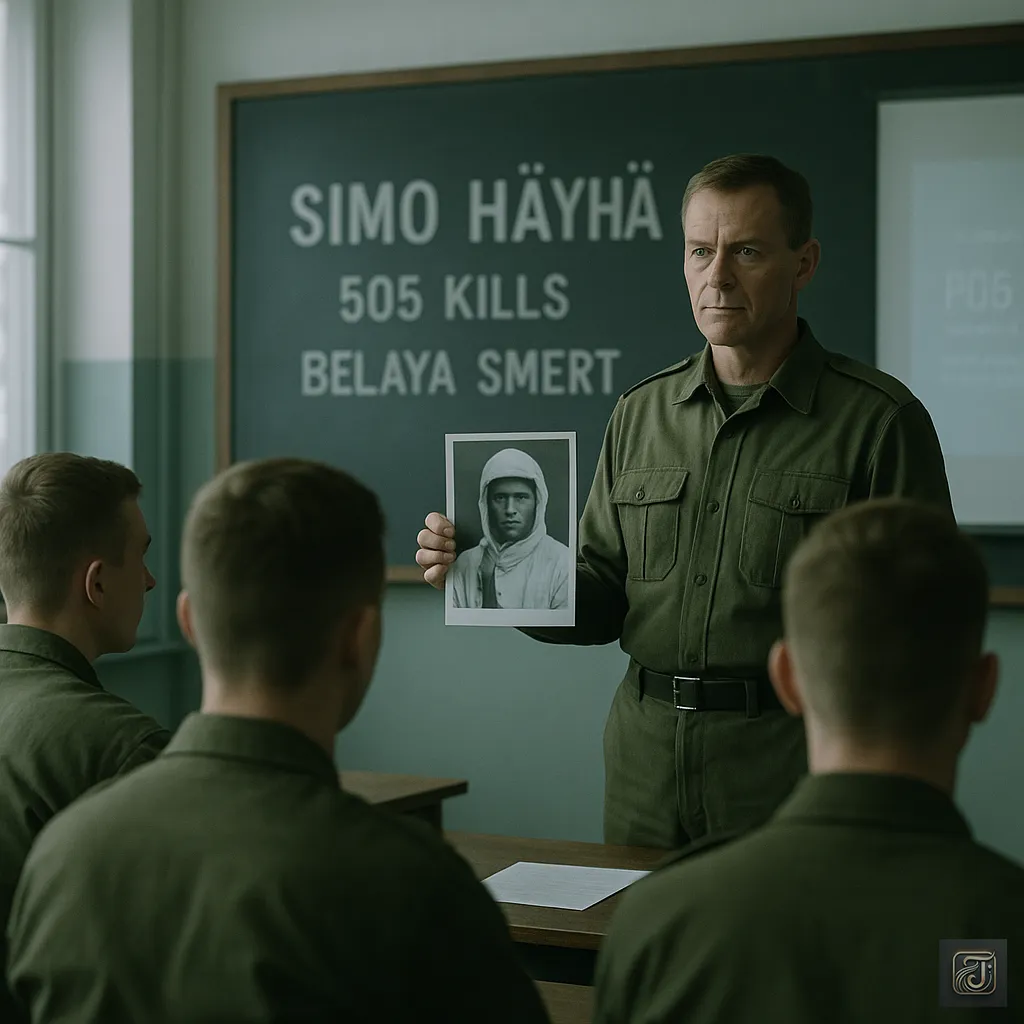
Teacher:
“Anyone can learn the skill to defeat the enemy.”
“But those who have the power to avoid shooting, like Simo Häyhä, are rare.”
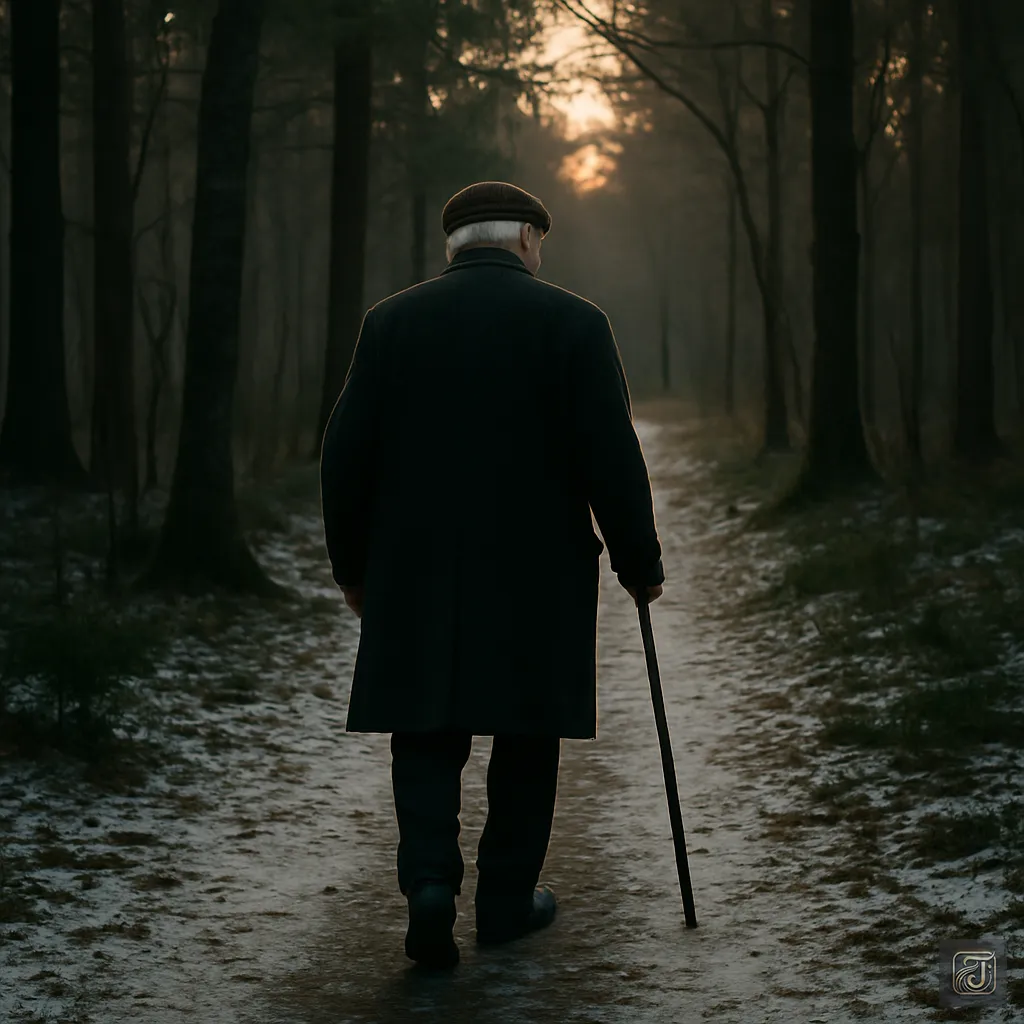
He never once boasted about his achievements,
Never once sought fame—
He lived quietly, quietly, alongside the forest.
Epilogue—The Philosophy of Silence, and the Legend
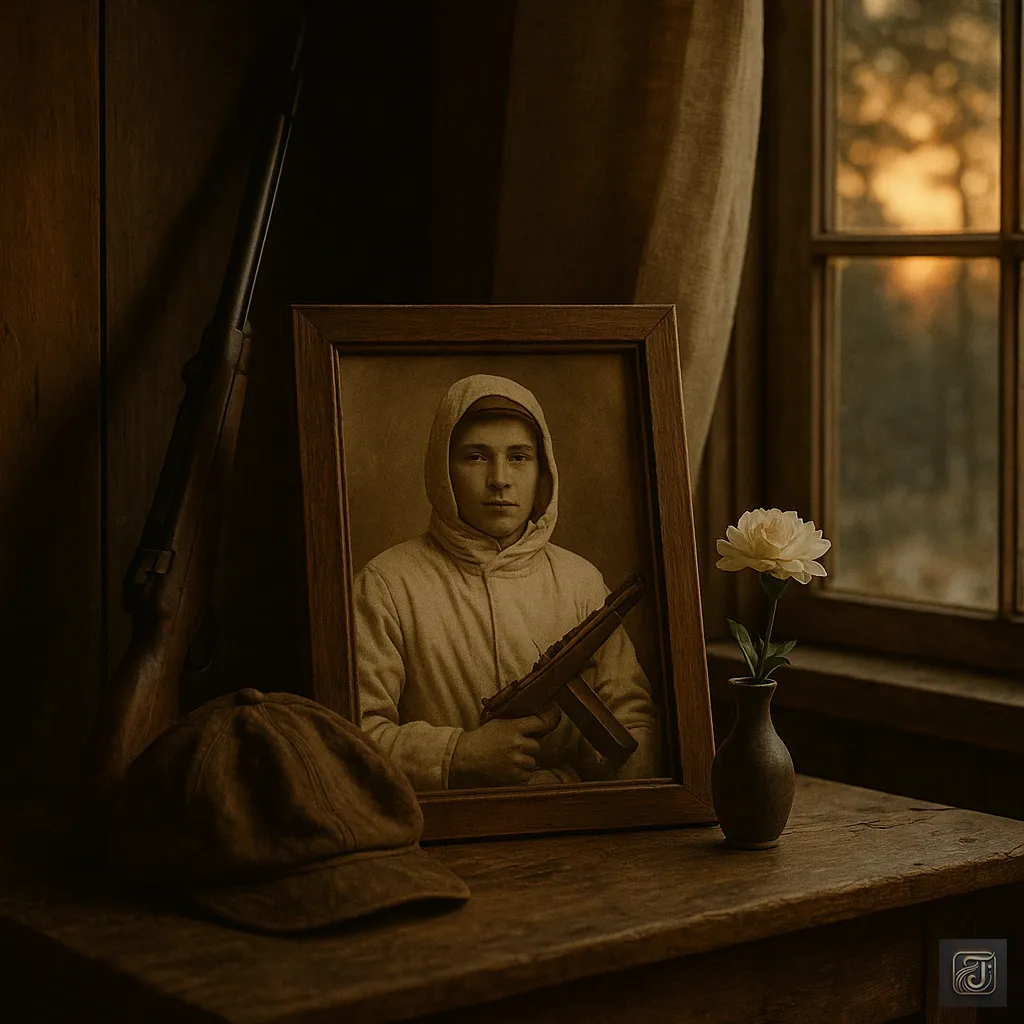
Simo Häyhä.
A Finnish farmer and the greatest sniper in the world, having accurately taken down over 500 soldiers.
Yet when people speak of him, no one can simply recount that number alone.
Why?
Because it was what he did not speak of that defined his essence.
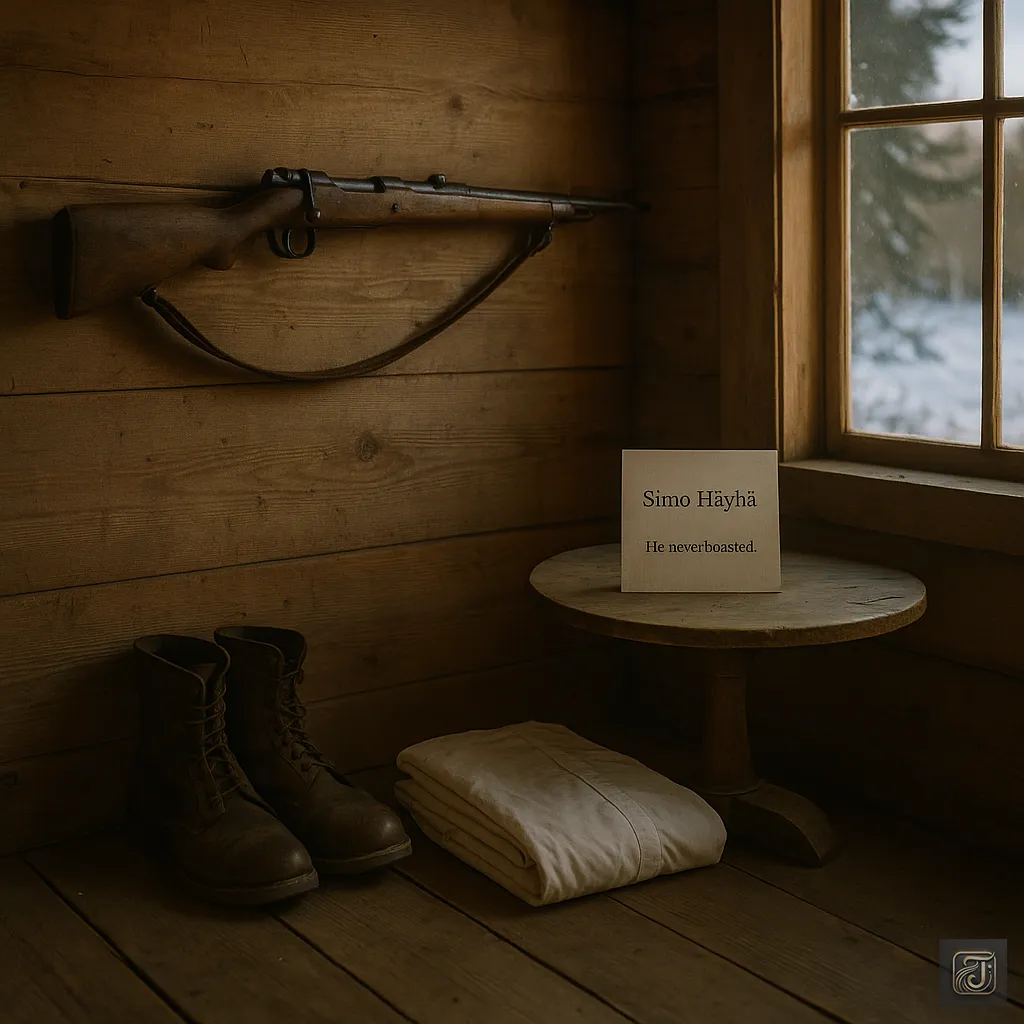
The life after he laid down his rifle.
He never returned to politics, nor did he go back to the military.
Even when asked for interviews, he rarely gave answers.
“It’s a thing of the past.”
He would simply say, ending it with those few words.
It was not his achievements in war, but the way he lived quietly defined his “way of life.”
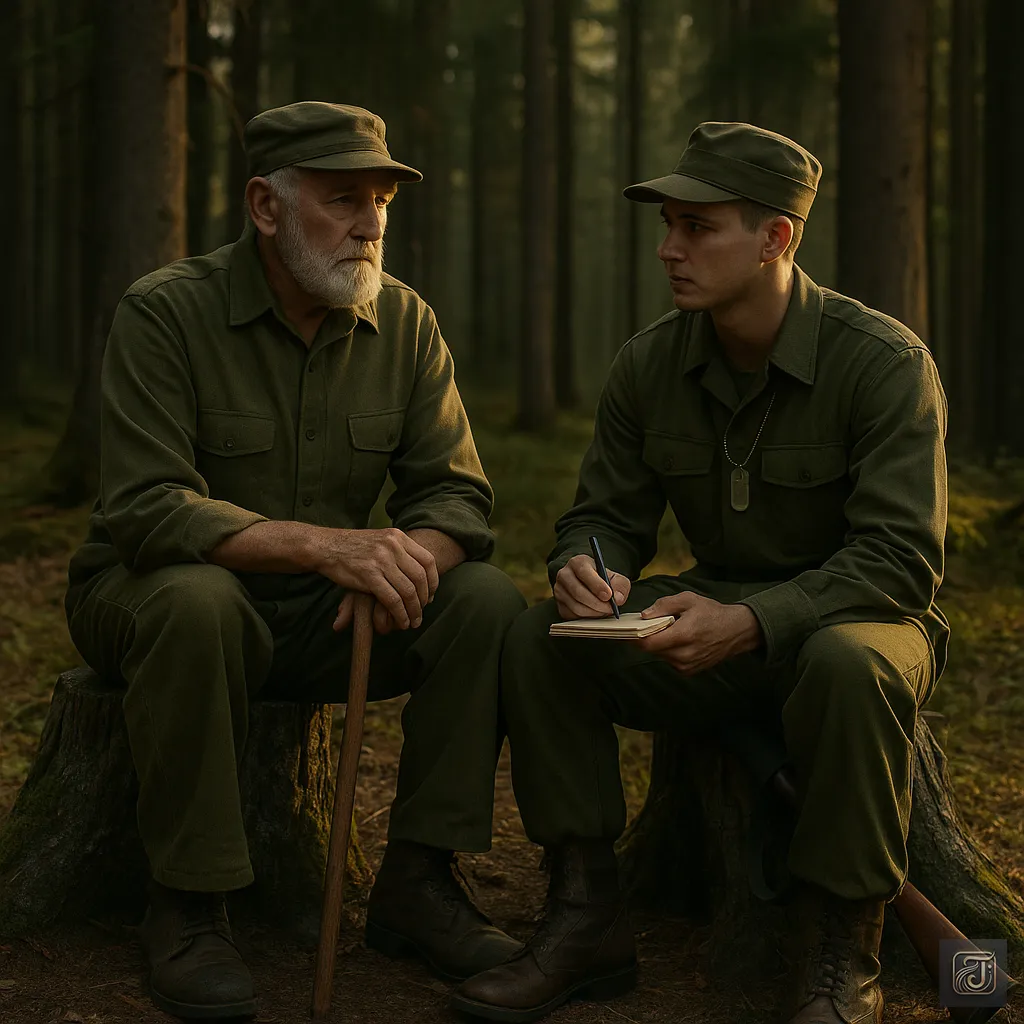
One day, a young soldier visited him.
“I want to be like you,” he said, asking about training methods and sniper techniques.
After a moment of silence, Simo replied.
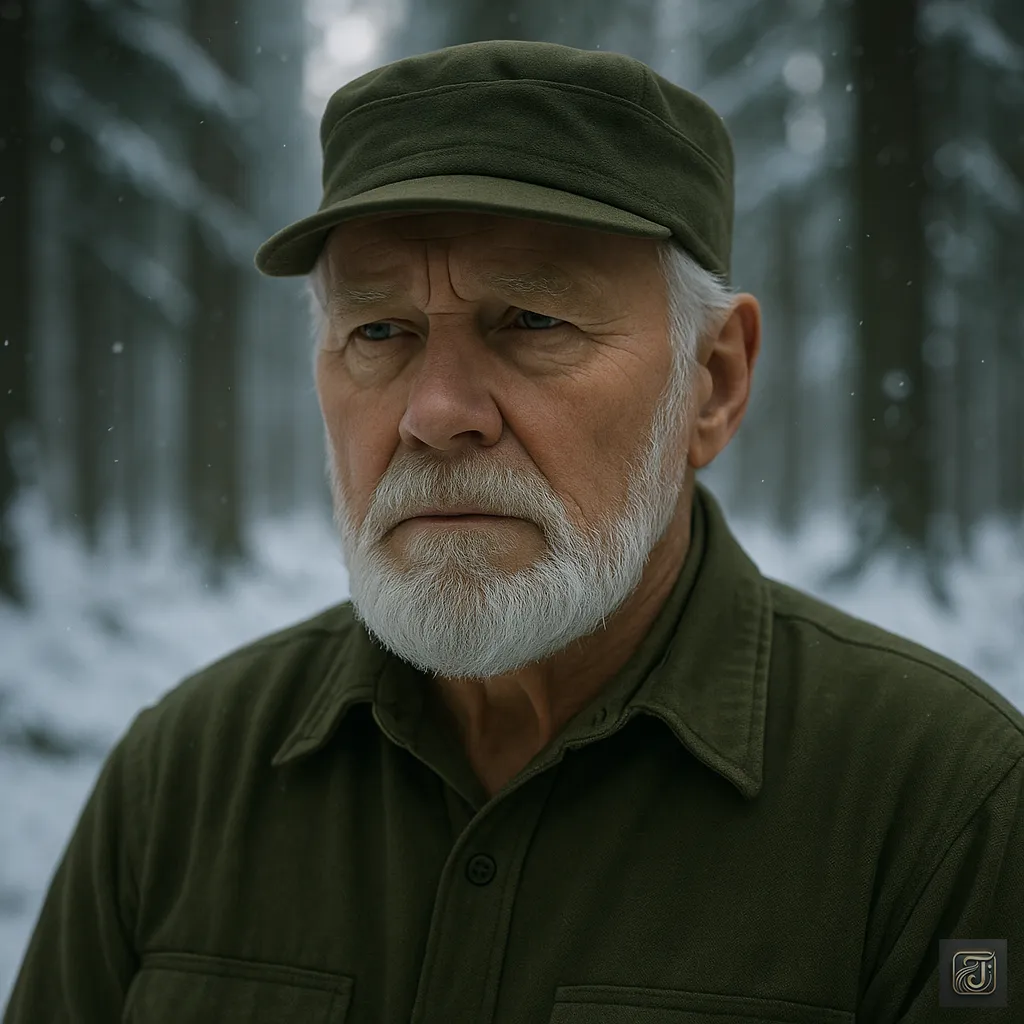
Simo Häyhä:
“Before you aim at your prey, ask yourself if there is still a reason not to shoot.”
That was the entirety of his philosophy.

He was called a “legend, “not for his record in sniping.
- He didn’t shoot more than necessary.
- He took down his target with a single shot, sparing them from suffering.
- He protected what needed to be protected, without being told.
- And he never boasted about his achievements.
All of this made people think…
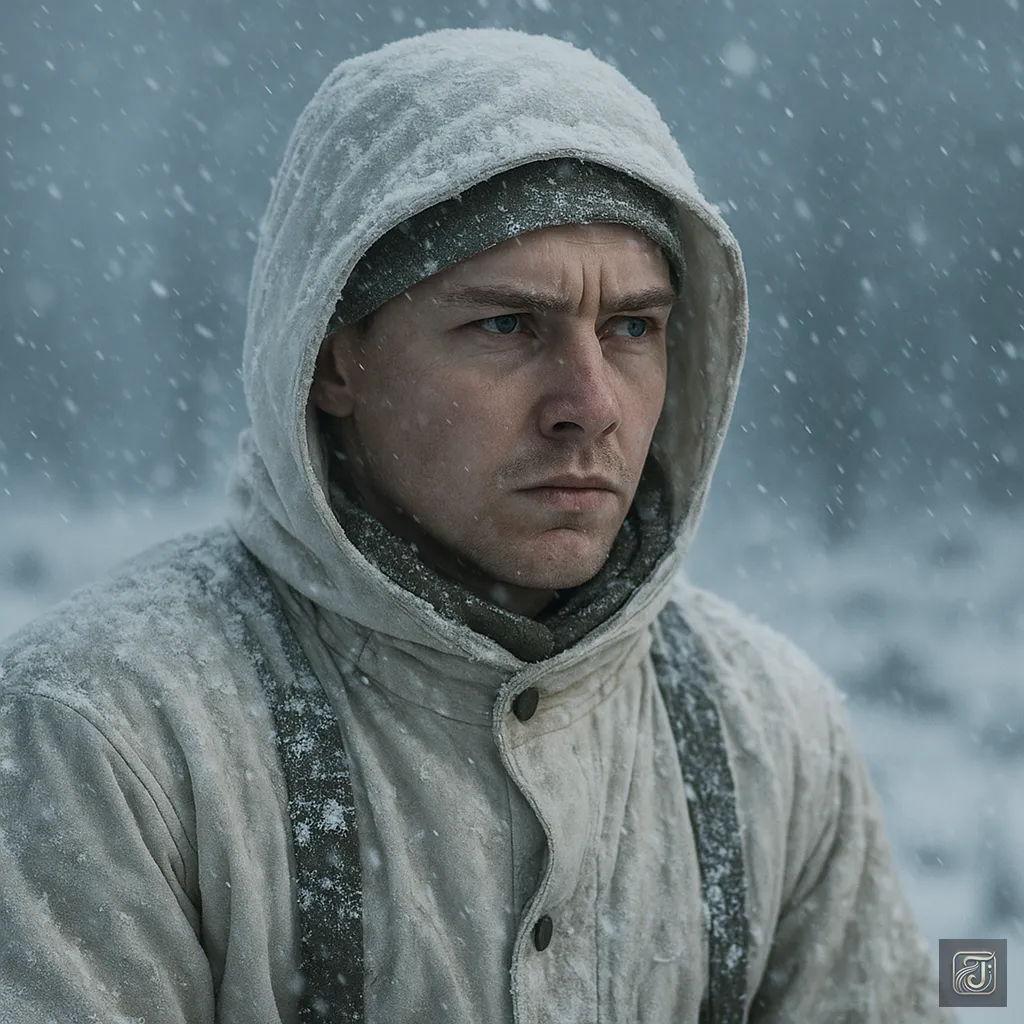
“This man is not just a soldier. He is the ‘silent anomaly’ that appeared on the battlefield.”
A hero may be one who boasts of victory.
But a legend is one who holds power in silence.
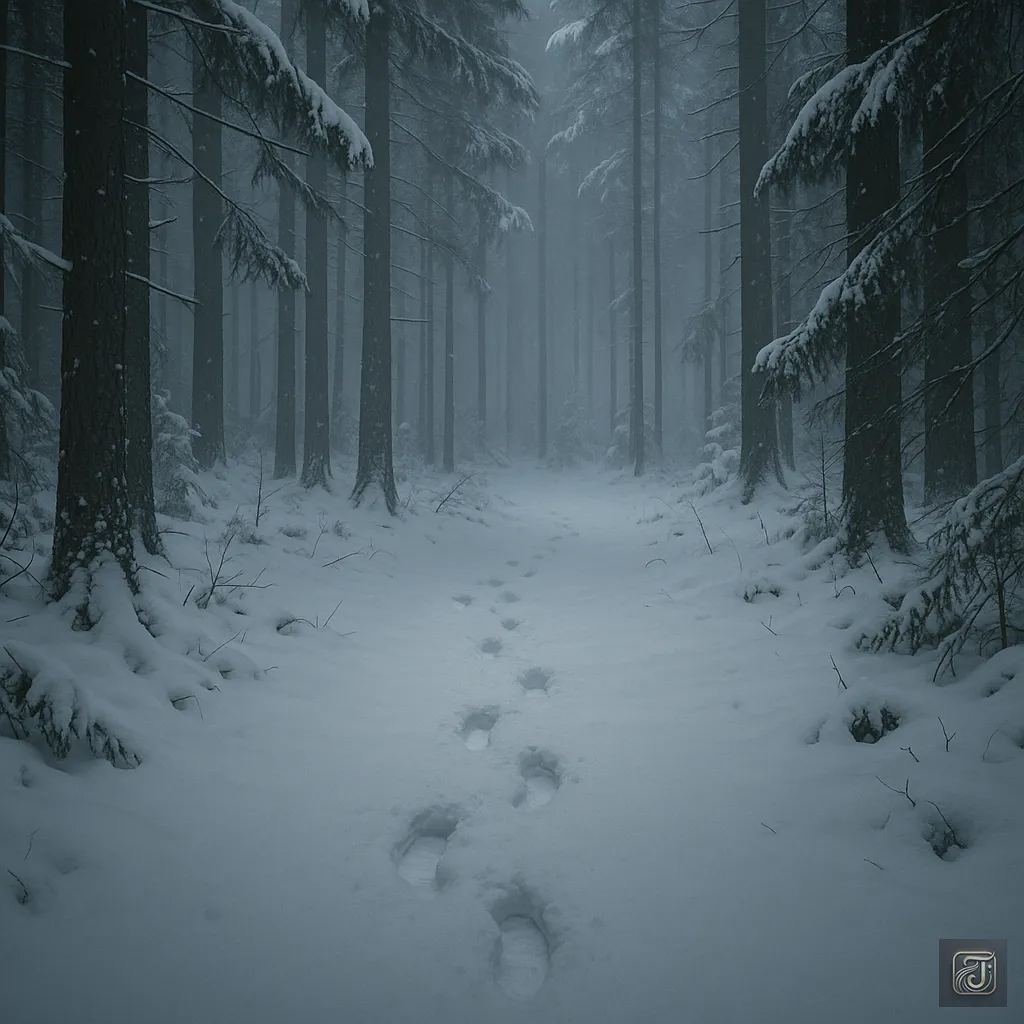
The legend of Simo Häyhä, who vanished into the forest, remains quietly and firmly, like the snow itself, even to this day.
He lived without speaking, and he died without speaking.
But his silence had already spoken everything that needed to be said.
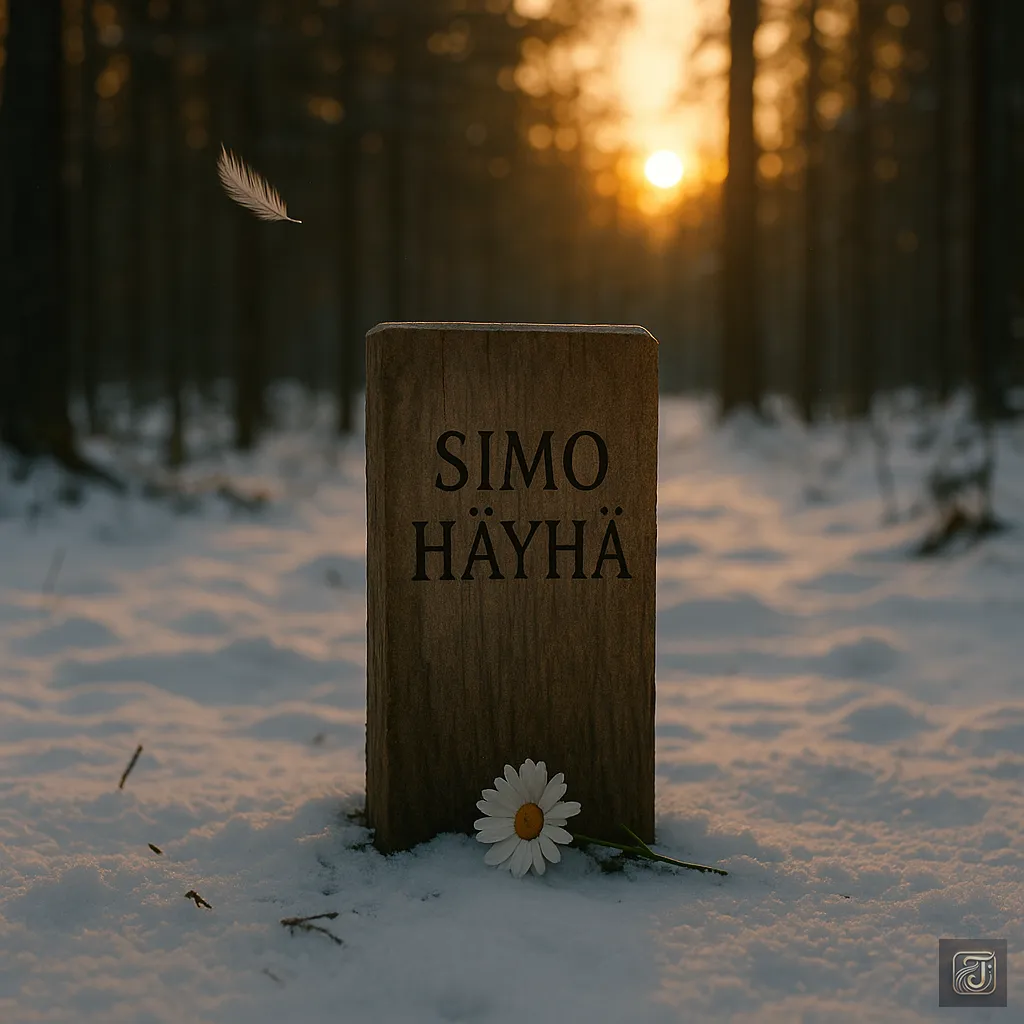
His name was—Simo Häyhä.
The sniper feared by the world, and yet, the most human of men.
Afterword
This story is not just a record of war.
It is an attempt to convey the silence of Simo Häyhä, the philosophy and resolve behind that silence, in the form of a narrative.
The number of bullets he fired is known to the world. However, he rarely spoke about the “reasons he didn’t shoot.”
Still, every action he took was more eloquent than any words could be.
Silence is not empty; it can be the heaviest of words.
It was Simo Häyhä who taught us that.
I hope that this story will serve as a prompt for us, the people of today, to reflect on what “the strength of not shooting” and “the pride of not speaking” truly mean.
― Storyteller Fuji
I’m a passionate blogger who loves diving deep into human history and sharing captivating stories about remarkable figures and events from the past.
My blog combines engaging storytelling with beautiful illustrations, making history accessible and enjoyable for everyone.
Currently, I write my blog while managing a full-time job. Balancing both limits the time I can dedicate to research, writing, and illustrations.
With your support on Ko-fi, I can reduce the time spent on my main job and focus more on blogging, allowing me to increase the frequency of updates and bring you even more captivating stories.
Whether it’s a one-time coffee or a regular contribution, every bit goes directly into making history engaging and fun for my readers.
Thank you for joining me on this journey through time. Let’s uncover the past together!
If you found this article insightful, please consider supporting me with a cup of coffee!👈Click☕🙏


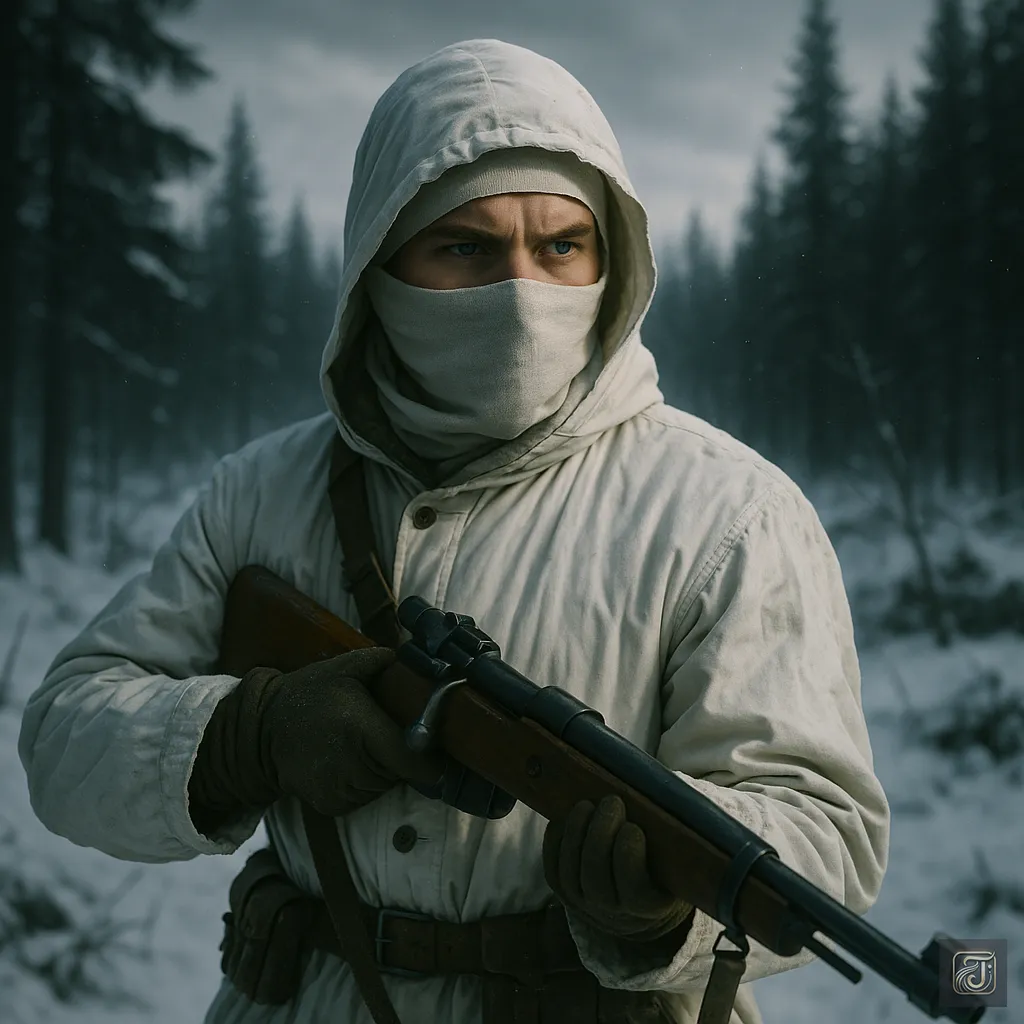
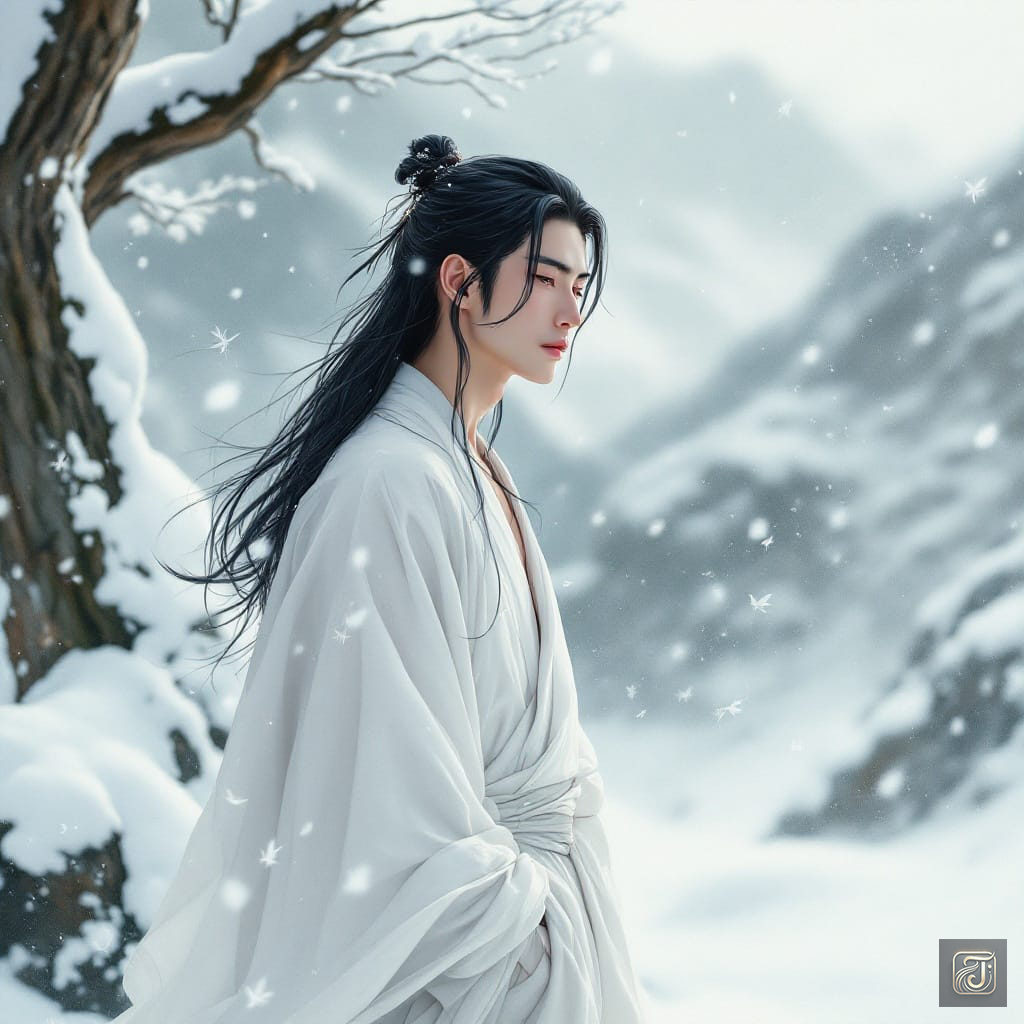

Comment